3 Volumes
Sociology: Philadelphia and the Quaker Colonies
The early Philadelphia had many faces, its people were varied and interesting; its history turbulent and of lasting importance.
Medicine
New volume 2012-07-04 13:34:26 description
Second Edition, Greater Savings.
The book, Health Savings Account: Planning for Prosperity is here revised, making N-HSA a completed intermediate step. Whether to go faster to Retired Life is left undecided until it becomes clearer what reception earlier steps receive. There is a difficult transition ahead of any of these proposals. On the other hand, transition must be accomplished, so Congress may prefer more speculation about destination.
Old Age, Re-designed
A grumpy analysis of future trends from a member of the Grumpy Generation.
1. Assisted Living Facilities .org 2. Home Health Care Agencies 3. AARP 4. Skilled Nursing Facilities 4. Home Health Agency Centers for Medicare 5. Administration on Aging 6. Adult Day Care
Redesigning Old Age
A friend of mine, treated as my contemporary but probably only sixty years old, was recently speaking of a club picnic he, unfortunately, wouldn't be able to attend. His mother was now living with him, and since she was 84, obviously neither of them could go to a picnic on a sailing vessel. The club committee, listening to this regret, chuckled that of course, we shouldn't expect him. My thoughts were somewhat different. Since I'm 94 myself, I was wondering if she was available for a date. And of course I am going to that picnic, why shouldn't I?
| You can't scare me very much about the future scientific costs of medical care. But Insurance and administrative costs are something else of course. If the problem of foolish borrowing puts Medicare out of business, it's hard to see how that could be the fault of my profession, unless perhaps something or other undermines our traditional system of ethics.
Where the ethics thing comes in is in the obvious conclusion that we are spending a lot of money treating diseases we crusty old docs once wouldn't have thought were worth our time. We are fast approaching the point when substantially all the medical catastrophic costs are concentrated in the first year of life and the last year of life. Increased life expectancy is a matter of widening the interval between those two signposts. Medical care between those years consists of treating the disease successfully, preventing disease and managing complaints we once would have dismissed as 'that's nothing'. Even the cost of doing this kind of medical care should decline: patents should expire equipment should simplify treatment should become standardized or even routine. But we notice people won't leave us alone: our government has just spent $27 billion forcing office computers on doctors who don't see the need to be bothered with them. People persist in using our time to inject botulism toxin into wrinkles and to listen to complaints about how lonesome they are. That is to say, the public is beginning to insist on substituting their own view of what they want, for what doctors have traditionally thought was worth treating. This is an expensive way to enjoy the freedom of choice and it is only a matter of time before bureaucrats figure out the least obtrusive way to curtail it. Only when forces come to equilibrium will it be feasible to extrapolate future health costs. What should appall us is the cost of paying for a progressively protracted retirement of so many unemployed people and the absolute impossibility of paying for it by continuing on our present funding path. Maybe that's what all this obesity means. Maybe people are trying to store up enough fat when they are forty, so they can go without eating from age sixty to ninety. A Time to Read Books
BEFORE we talk about retirees reading books in a retirement community, reflect for a moment about reading in your own home during the working years. Most suburban homes do not have many books in evidence. It's possible to stand in the center of most suburban living rooms unable to see a single book, while it's hard not to see a television set. Increasingly, a home computer is only a few steps from the front door, but the evolution from desktop to laptop to portable telephone to tablet is too rapid to make generalizations. Everyone says books are going to disappear soon, and newspapers maybe even sooner. But there are still said to be a million books constantly in transit on 18-wheeler trucks between print shops and wholesale depositories, night and day. Right now, the producers, publishers and merchandizers of printed material are in turmoil and decline, so they talk about it a lot. But ultimately it is the reading public which will decide what it wants and force the suppliers to give it to them.
It seems to me that what the reading public wants most is to find time to read. The suburban home has so few books because the sort of person who lives in the suburbs to be near the school system, just doesn't have time to read after the day's work and commuting. Helicopter parents spend a lot of time hauling the kids to mandatory kid entertainments, as can easily be seen by driving past a high school in the afternoon and observing the lines of cars with waiting mothers. They make the best of it as a social occasion for mothers with shiny cars, but they really do it to be sure the kids don't get mixed up with recreational drugs. Anyway, they do it, and it all eats up their discretionary time for reading. Meanwhile, their's no local bookstore to buy books, even unread books. They may think they will catch up on their reading after they retire, but that's becoming increasingly unlikely in my observation. They are getting out of the habit of reading. By the time they retire, they will find it's almost like going back to school. You must find other readers, readers groups, conversations about books over the bridge table, books lying about. The first economy a struggling news paper makes is to cut down the size and number of book reviews, because there are no bookstores to take out advertising, and advertising is what pays for newspapers. There's one good feature about that; what book chatter there is, is not so confined to recent books. Some people are bookish and other people are golf-ish, and a growing number of people are simply TV-ish. It's a struggle to find time for work and the family, and books on top of that. No matter what level of reading the working people may be doing, it's declining in favor of deferred reading when they finally retire.
Having visited quite a number of retirement communities, I find the community's library is a good place to assess the institution and its typical inhabitant. When it's newly built, a library area is set aside, usually without many books. The first few waves of residents quickly fill up the space with books they brought from home. During the first ten years it is possible to guess what sort of person lives there by the books they brought and deposited, or died and left to the library. The space, more or less empty at first, gets full and something must be discarded. Enlarging the library is an economic issue, so the size at which it halts will to considerable degree reflect the willingness equilibrium to pay for new construction, both by the book lovers, and by the book enemies, the golfers and the administrators. Ultimately book congestion gets to the point where someone simply must cull out some old books to make room for the new. In another essay I have described the use of volunteers to exchange books of no lasting interest for more books of real interest to real residents, through a used-book exchange. But someone must organize the process, often recruited by an administrator who has learned to be horrified of construction which cannot be rented, but must be cleaned and cared for. If passive resistance is a new term to you, this is the place to learn about it. The residents have short memories, lack drive and follow-through. So inertia tends to win, and lack of reading feeds on itself because there is nothing to read. What's apparently needed here is an organization of bookish people that extends to all retirement communities, probably with a paid staff, an annual meeting, Internet connections. And therefore an immortality which can outlive and outlast the passive resistance. Good ideas then have a means to spread and help support other good ideas; somehow the costs must be supported until a few True Believers in Books can write a bequest in their wills to sustain it. And activate their intention, so to speak. One of the largely unrecognized reasons for the success of the American Revolution was that the Colonies had a higher level of literacy than the Mother Countries. Thomas Paine, for example, printed 150,000 copies of Common Sense on the rickety old printing presses of the 18th century, when there were fewer than three million white inhabitants of the thirteen colonies. And who was mainly responsible for that? It was Benjamin Franklin with his invention and popularization of the lending library. If Ben could find time to start libraries in 1742, and Andrew Carnegie was later found willing to pay for dozens of them, surely the time and energy can be marshaled in the 21st century to establish a first-class library system throughout the retirement communities of the nation. Retire LaterUnions teach their supporters: never retreat. Yell, shout, threaten, roll on the floor in simulated agony, denounce and declaim -- but never give back a single concession you have previously won. The hallmark of ratcheted positions about givebacks, is they are not negotiable.
By having some personal contact with union officials, who are generally decent enough fellows when not in their negotiating stance, I have learned that, to them, advancing the retirement age is absolutely not negotiable. Some of this intransigence is fake, having to do with negotiating traditions, and some of it has to do with the equally traditional stance that work is some dreadful thing which has been inflicted on the working man by unfeeling employers, or management, or the rich aristocracy or somebody. Reflex belligerence is therefore triggered immediately by suggesting that people are going to have to work more than they expected to. Much as I hate to offend people in their deeply held religious beliefs, I bring the news that retiring later would immediately solve the problem of affording to retire and that no other proposal under the sun has greater chance of solving that problem. But it's like the Law of Gravity. When dealing with demographics, to declare that something is off the table, or unacceptable, or a giveback -- is just bombast. With the present data, we are going to have to re-set the retirement age to 70. If medical and demographic trends are unexpectedly extreme, we may have to go to 75. If you think someone has promised you can retire at 55, you had better be in an iron lung or drinking your meals through a straw.
It's easy to see that later retirement cuts lifetime costs in two ways: it increases the duration of earning and saving. And it shortens the years of retirement payout. The later you retire, the better it is. So the less you save, and the more lavish your lifestyle, the older you will be when you can afford to retire. A lot of things can be debated, and a lot of clever ideas can be worked with. But it is going to take an atomic attack or something similar to modify this particular prediction about the future. And even doomsday predictions just make the future look worse, not better. Because as the insurance salesman tells you, you can have it one way or the other. You can die too soon or you can live too long. Since you can't know in advance which it will be, you would be wise to work a little longer, just in case. Ageing Owners, Ageing Property
Kiyohiko Nishimura is currently the Deputy Governor of the Bank of Japan (BOJ), and as such is expected to have wise things to say about finances, as indeed he does. Japan has a far older culture than the United States, and a botanical uniqueness growing out of the glaciers avoiding it, many thousands of years ago. But its latitude is approximately the same as ours, and its modern culture is affected by the deliberate effort of the Emperor to westernize the nation, following its "opening up" by our own Commodore Matthew Perry in 1852. Perhaps a more important relationship between the two cultures for present purposes is that Japan has been suffering from the current deep recession for fourteen years longer than we have. We don't want to repeat that performance, but we can certainly learn from it. Mr. Nishimura lays great stress on the aging of the Japanese population because, in all nations, houses are mainly purchased by young newly-weds, and sold by that same generation years later as they prepare to retire. If a nation has an elderly population, it can expect a general lowering of house prices someday, reflecting too many sellers leaving the market at the same time. The buyers of those houses are competing with other young people, so the simultaneous bulges and dips of the population at later stages combine to have major effects on housing prices. At the moment, younger couples are having fewer children as a result of women postponing the first one. Nishimura goes on to reflect that something like the same is true of stocks and bonds, although at age levels five or ten years later. One implication is that retirement of our own World War II baby boom is about to depress American home prices, which will likely stay lower for 10-20 more years. Furthermore, our stock market will have a similar effect, stretching the depression out by as much as 5-15 years. The Japanese stock market has been a gloomy place to be during the past fifteen years, and by these lights might continue in the doldrums for another five or so. Meanwhile, our own situation predicts an additional generation of struggle while Japan is recovering. It's best not to apply these ideas too closely, of course, but surely somebody in our government ought to dig around in the data, at least telling us why we ain't goin' to repeat this pattern. Please. Perhaps because they eat so much rice and fish, the Japanese already have a longer life expectancy than Americans do, but in terms of outliving your assets, that's not wholly advantageous, the way a love of golf might be. The best our nation might be able to do is to examine some of our premises about housing construction. In Kyoto, most houses were built with paper walls, for example.
The house walls of the town of Kyoto were in fact made of waxed paper, which seems to work remarkably well. While no one now advocates going quite that far, we might think a second time about building the big hulking masonry houses so favored in our affluent suburbs. Such cumbersome building materials almost dictate custom building and strongly discourage mass production. How likely are such fortresses to survive in the real estate markets of fifty years from now? Judging from my home town, not too well. Haddonfield boasts it has been around since 1701, and there are at most three or four of its houses which have survived that long. We favor great hulking Victorian frame houses, with a good many bedrooms unoccupied, and high drafty ceilings, very large window openings and little original insulation. The heating arrangements have gone from fireplaces to coal furnaces, to oil, and lately to natural gas. The meter reader who checks my consumption every month tells me that almost all the houses now have gas heat, so almost all the houses are using their second or third heating plant, along with their eighth or tenth roof, and thirty coats of paint. This kind of maintenance is not prohibitively expensive, but just wait until the plumbing starts to go, and leak, and freeze, with attendant plastering, carpentry, and painting. Our schools and transportation are excellent, so we have location, location, location. But when the plumbing, heating, and roofing start to require financial infusions all at once, you get tear-downs. A tear-down is a new house in which a specialist builder buys the old house, tears it down, and looks for a buyer to commission the new house on an old plot of land. Right now, there appear to be six or eight such Haddonfield houses, torn down and looking for a buyer to commission a new house on that location, location. If we repeat the Japanese experience, there will be some unhappy people, somewhere. And that will include the neighbors like me, who generally do not relish languishing vacant lots next door, but fear what the new one will be like.
The thought has to occur to somebody that building the whole town of less substantial materials in the first place would be worth investigation, replacing the houses every forty years when the major stuff wears out. At the present, when a town of several thousand houses has five or six tear-downs, the neighbors would not tolerate replacing tear-downs with insubstantial cardboard boxes. Seeing what has happened to inner-city school systems, the neighbors would be uneasy about "affordable housing" built in place of stately old Homes of Pride. In time, that might lead to a deterioration of one of the two pillars of location, location -- the schools -- and hence to a massive loss of asset value. And yet when those houses empty out the school children, leaving only retirees in place, the schools will not be worth much to the owners or in time to anybody else. There's an unfortunate tendency for local political control to migrate into the hands of local real estate brokers, so you had better be sure any bright new proposal is tightly buttressed with facts. The only real hope for evolution in this obsolete system may lie in the schools of architecture, strengthened perhaps by some research grants. Countless World Fairs have displayed the proud products of their imaginative thinking, but mostly to no avail. Perhaps the ideas are not yet ripe, but since it would take more than a generation to create a useful demonstration project of whatever does become ripe for decision, let's start thinking about some innovative suburban designs, right now. Retirement CommunitiesPrior to the Second World War, old-age homes were almshouses, slightly modernized. Since few people lived very long after they retired, the old-age home took care of a few stranded old folks unable to care for themselves. The places were depressing and sparse, with a characteristic odor of urine and poorly-ventilated kitchens. But when time spent in retirement lengthened to twenty or more years, a new dynamic had to be considered. The dingy old single rooms changed into multi-room apartments, the dining room went upscale, and the infirmary changed into a skilled nursing facility. The idea was, you could graduate to more specialized medical care when you needed it, and be visited by your friends in the community who would someday be in the nursing facility themselves. They were paying to keep it up, and they would raise a ruckus if the infirmary service began to look uninviting. Whether the community was paying for it collectively or the younger generation was supporting it, the Retirement Village provided a more civilized way to grow old and die.
People chose these places for a variety of reasons, depending in large part on what they could afford. Widows are often overwhelmed by maintaining a house, widowers are often overwhelmed by cooking. And retired couples are often simply tired of both chores, or sufficiently crippled or befuddled enough to look for a way to give those tasks to younger people. One system grew up, of acquiring a second home in a vacation area and then replacing the main house with an apartment in a retirement community. If you stay in the vacation home for six months and one day each year, certain combinations can lead to appreciable tax savings. Sometimes a married couple is in perfect health and uses a retirement community as a comfortable suburban apartment complex, "just going on living the way we always did". The idea in their mind is the folk wisdom that you need to get used to a place and develop a circle of friends there; to do that, you ought to be less than eighty years old. When that's a general idea, it can be self-defeating to join a group of friends with pooled meal tickets. Thirty friends, or fifteen couples, can each host a party for thirty, once or twice a month. Unfortunately, they are quickly sequestered and disliked by everyone else as they make the regular rounds of nightly parties; but this sort of thing happens in upscale places, the kind of retirement community where some apartments have servants' quarters, and nobody much cares what anything costs. For people in this circle, the most detestable thing about a retirement community is the pressure to have dinner at 5 PM. Early dinner is ordinarily the surest sign the place is managed primarily for the convenience of the employees, but it can also mean there is nothing else to do except watch prime-time television.
For most people, however, even having ample funds for retirement is constrained by the uncertainty of how long the retirement will have to be, how much must be held in reserve, even at age 100. The gallows humor continues to repeat some version of trying to plan a way to spend your last dollar on the last day of your life. It isn't just how long you will live, it is how. If you or your spouse become blind, or bedfast, or in chronic pain, your level of living is going to change and your daily expenses may rise dramatically. Even if you never gave such gloomy things a moment's thought, the experience of eating in the same dining room with several hundred elderly acquaintances soon teaches all the lessons of unexpected illnesses and weekly funerals. Some people cannot bear the idea of living in such a community, for precisely the reason that it becomes impossible to kid yourself. And one thing no one can kid himself about is the reality that you have to have one awful lot of money before you can ignore the need to watch your pennies. And it isn't just your spending money; it's also the lack of a basement, attic, and garage in which to expand or from which to draw reserves, or just to enjoy old books and mementos buried in dust. Retirement communities seem to have developed independently in the Quaker suburbs of Philadelphia, and along the California coast. Except for the climate, there isn't much difference. More tennis in California, more trips to the theater on the East Coast. The early communities had a strong focus on finances, which assumed a lifetime retirement fund derived from selling the family home. The fancier the house, the more elaborate the apartment it would finance. As the duration of retirement grows progressively longer, roughly three years every decade, it is certain that the sale value of the average American family home will get progressively stretched to extend to the average age at death -- especially if you focus on the average age of the second of a couple to die, or become blind, or become bedfast.
So, the patterns of financing are changing, at least experimentally. Some retirement communities (the term is are purely rental, partly room and board, extra charge for the nursing facility, or a la carte for all services. People who enter any sort of community are often planning to move to a different one after a period of time, either to adjust to their reduced physical capacities or changes of location of their families. Some of them actually say they plan to live luxuriously and then move into their children's houses when the money runs out, although it is usually hard to know how seriously to take such comments. Obviously, what is needed is some sort of insurance mechanism to pool everybody's risks, but there is a fundamental problem. Insurance companies make a big profit on life insurance in two ways: either from clients who drop the policy before they cash it in or from premiums which underestimate the actual age of death compared with the average experience at the time the policy was taken out. But in the retirement case, essentially all policies mature at death and the duration for compounded investment is brief. So such insurance is either overpriced or unobtainable. The same underlying phenomenon affects Medicare and explains its impending insolvency. Those early retirement communities which based their charges on the assumption that Medicare would continue unchanged are repeatedly stranded when Congress cuts back on Medicare benefits. Someday, demographic trends will level off and insurance can be restored to practicality, but that time is certainly two or more decades away. Many states, including Pennsylvania, have passed laws that residents of retirement communities may not be evicted if they become impoverished, so the communities are forced to be strict about advance funding. Ultimately, the danger is that the community will be forced out of business, stranding the occupants. With so much time available to discuss such matters in a common dining hall, occupants of these facilities can become obsessed with the need to save for the future, and no one can be certain they are wrong about it. Retirement Communities (CCRC)Let's confess my meager authority to generalize about trends in retiree convalescence. When I graduated from medical school in 1948, average American longevity was twelve or fifteen years shorter than today, and most assumptions rested on it's remaining the same forever. Someone who reached eighty was really old, obviously facing a prompt decline. Today, essentially everybody lives to be eighty. We only half-expect such long life, which is modest of us, and only halfway plan for it, which is foolish.
In 1950 a general practitioner in Haddonfield, NJ called for help from the son of one of his patients. The son was a doctor on the staff of the Pennsylvania Hospital, where I was finishing my internship. The GP hadn't had a vacation for twenty years and wondered if one of the graduating internets might take his practice for a month. I volunteered and then learned about retirement in a prosperous suburb. My employer had many tasks, among them a schedule of ten or twenty monthly house calls. There may have been some male patients on those rounds, but all I remember were old ladies living on the third floors of big old houses. I wasn't expected to do very much when I visited, at least by Emergency Room standards in the hospital. The families with whom the grandmothers were living wanted to be reassured that nothing was neglected. They also wanted to form their own assessment whether the doctor really knew them, and would come immediately if needed.
My next insight came a few months later when another doctor on the staff of the hospital had a heart attack; the Chief of Medicine gave me the time off to take care of this practice while the doctor recovered. When I first arrived at the door of the brick Philadelphia row-house where the doctor had his office, I was met by his nurse already wearing a raincoat, handing me an umbrella. We visited ten or fifteen other row houses along the neighboring streets, where to my amazement I found patients with oxygen tents and intravenous infusions. If the patients needed blood tests or electrocardiograms, the nurse arranged for them to be performed at home. Drugs by injection were administered, hospital-like bedside charts were maintained. This was a working-class neighborhood substitute for hospital care, but I was astonished to see how adequate it was. By this time, we had many resident physicians at the hospital who had seen service in the war and returned for specialty training; they regaled us at the lunch table about treating major illnesses -- in a tent. This wasn't the Civil War we were talking about, it was 1950. Fifteen or twenty years later, my personal situation had improved; Medicare had arrived in 1965, but I was in practice as a center-city specialist and hardly noticed the new insurance system. But I did have three patients who insisted on being treated at home, which even by then had become an unusual arrangement. All three lived in condominium apartments in buildings with dining rooms on the main floor which would send up take-out dinners. All three patients had live-in nurses and hospital beds rented from an agency. One spinster lady absolutely refused to be treated in a hospital, because the Queen of England set up a little hospital in her palace when she needed it, and this lady said for practical purposes she had as much money as the Queen. Because she was dying of cancer, I resisted this idea, but if you had seen Katherine Hepburn in The Philadelphia Story you got the helpless feeling this dame was going to have her way. We called in laboratory and x-ray services as needed, administered injections, maintained a hospital chart. In this case, when I made a house call, her chauffeur would pick me up and deliver me, helping to ensure my promptness. Her lawyer and I kept careful financial records of the experience, which was new to him, too. After she died, we totaled it up and discovered with astonishment that the whole thing had been cheaper, a lot cheaper, than going to the hospital. Since she left a sum to the hospital in her will, even the hospital was pleased. Well, nowadays there are more than fifty retirement communities scattered around the periphery of Philadelphia, many or most of them sponsored by Quakers. It's a national movement, and there are people in California who feel they had the idea first. There are now enough of these organizations to permit some classification of them into types, which mostly follows the sort of community model they resemble. There are some that look and are run like college dormitories, some that resemble convalescent homes, some are very like big-city apartment condos, and some behave like resort hotels. One of them, the Kearsley, sits in the middle of the Bala golf course, attempting to provide the first-class service to indigents by using existing government assistance programs, but has lately had to fall back on the Episcopal Church for financial help.
Since a financial shadow hangs over all of them, it should be mentioned first. Every person in a retirement village is eligible for Medicare and Social Security, and with the help of a social worker can fall back on less-known assistance programs. It's impossible to ignore the existence of these funds, but most unwise to depend on them. As the age and number of retirees constantly grow, state and federal governments are starting to draw back from initial generosity. Laws have passed that a CCRC resident may not be evicted for non-payment of debts, so the institutions have had to impose conditions which guarantee them payment from new entrants in the case of later inability to pay. The risk remains that clients who entered before the rules were imposed, can only be extricated by going before Congress and raising a piteous cry on bended knee. Such laws and embarrassments vary from state to state, and from year to year, but unstable finances destabilize any business. When the customers all depend on their savings, and average investment experience is a drop of 30-50% in the past couple of years, no one escapes anxiety. Although there must be college courses in how to administer a CCRC by now, current administrators are drawn from the environment the place mostly resembles, so the resemblance gets stronger. The former manager of a country club tends to neglect the infirmary; the former directress of a convalescent home doesn't notice institutional food. If the administrator treats customers as complaining nuisances, you get one kind of war; if the board of directors is accustomed to ruling corporations by dictate, you get another. Mainly, these institutions differ from models of other institutions by the degree to which they have active volunteers in charge. The inmates may run the asylum, but only if they become useful volunteers. A curious distinction evolves between those CCRCs which emerge from college alumni associations and those which are sponsored by churches. University faculties are not accustomed to, nor generally sympathetic with, teamwork. Every faculty member is on his own career path, which he hopes leads straight upward; teamwork to them is a code term used by business executives to imply blind obedience, Charge of the Light Brigade, or worse. Church groups, on the other hand, prize volunteerism. In a church environment, the proposal that Let's Have a Picnic is supposed to be met with a chorus of Great, I'll be Glad to Bake a Cake. Church-sponsored CCRCs, therefore, are generally more adaptive to innovation in a formless society. University groups have camaraderie and complaining, but little follow-through. By contrast, business people know what you are supposed to do, you are supposed to make something happen. Church volunteers want to know how they can help. Paradoxically for that reason, the more evidence of golf clubs around the place, the more likely it is to be innovative. Let's return to the point, succinctly. Life-threatening and potentially convalescence-requiring medical conditions are destined to segment increasingly into Medicare, to the point where what remains outside of Medicare is elective, preventive or outpatient. Obstetrics is an exception, remaining more naturally part of the hospital than the CCRC. The rest of medical care thus seems inclined to migrate toward the suburban ring of retirement communities. The more natural transportation flow is for younger people to travel to either a hospital-centered medical cluster or a CCRC-centered cluster, not for frail old folks to leave the convalescent environment except for major surgeries from which they soon return to their infirmary. It doesn't have to be that way, it just seems like the natural arrangement. Probably the main reason it doesn't work that way today resides in the Medicare law. The 1983 amendments restrained inpatient reimbursement much more than outpatient care or home nursing care, and consequently, inpatient costs have risen 18% in five years, compared with 47% for outpatient. Outpatient care is not migrating toward retirement communities because hospitals need revenue. Somehow, it seems easier to modify these reimbursement rules than to upend suburban CCRCs and relocate them next door to an urban hospital. If the payment rules become reasonable, the system will readjust its geography in a reasonable way, without coaxing. Surely, non-residents of the CCRCs are destined to wish to convalesce in the spare beds of CCRC infirmaries which should then treat younger people as a much-needed revenue source; any licensing requirements which block this seem unreasonable. Medical hardware,-- x-rays, MRIs and the like,-- is most naturally concentrated in the periphery of CCRCs, as are pharmacies, outpatient labs, doctors' offices. That's going to require a lot of parking space. It's a good thing this will take a couple of decades to happen; many mid-course adjustments will be imperative. But the basic fact is that the whole community's medical need is getting concentrated in CCRCs via Medicare, and so the community's facilities should move closer to that need. The younger community is well able to travel anywhere for elective medical services, especially when they move away. Makes a good chance to visit the grandparents while they are there, too. All of these proposals depend on getting the attention and cooperation of other self-centered institutions: Medicare, hospitals, medical societies, municipal governments. The CCRC community has scant experience with asserting itself; its future will depend on how skillfully it begins to do so. Nearly every retirement village has four or five retired physicians living in the place, as well as a dozen retired nurses, lab technicians, and others with medical experience. Every CCRC infirmary has four or five patients whose spouse is a resident of the community, visiting the infirmary regularly, and with sharpened insight. Some other people are natural leaders. If these people could be assembled into a permanent committee of medical oversight, charged with visiting other CCRCs in the region for ideas and perfecting the interface between the CCRC and nearby hospitals, medical facilities, transportation vendors, and politicians -- things would start to move. Spending twenty percent of our gross domestic product on health is, quite enough. Let's either stop spending so much or else make something good of it. Competitive Institutions: Paying for Assisted LivingAround the turn of the 20th Century, it was the fashion to build specialty hospitals, devoted to a single disease like tuberculosis or polio, or one specialty like obstetrics or bones and joints. Eventually, it was realized that almost any disease is handled better if a full range of services is readily available to it. Around 1925, some inspired philanthropists made it possible to combine specialties within a medical center, and it is now generally agreed this is a better way when population density permits it. On the other hand, it is likely a source of price escalation. Time marches on, and the problems of excessive bigness are also beginning to predominate. The idea immediately occurs, to winnow out the routine cases which do not need so much technology, so that we can concentrate and devote high technology (and costs) to patients who will really benefit. And, immediately the perplexing outcry is heard that such rationalization is "cherry picking", which will soon bankrupt the finest institutions we can devise. The validity of such assertions needs to be examined impartially.At the same time, the horse and buggy era has been left behind, causing new separations along class lines, the flight to the suburbs, and the migration of philanthropy toward the exurban sprawl, as well as into urban centers. In all this commotion it was overlooked for a long time that medical care was not merely following the patients to new locations, it was becoming more of an outpatient occupation. Inpatient care was shrinking, and somehow expensive hospitals were swallowing their smaller (and less expensive) competitors. It wasn't a necessary development; Switzerland still favors small luxury "clinics" of ten or twenty beds, usually containing wealthy patients of a celebrity doctor. Local customs like this will change slowly. What America appears to need is more hospital competition and more ambulance competition; the two may actually be somewhat connected issues. For amusement, I once studied the patients in the Pennsylvania Hospital on July 4, 1776, when historical notables were congregating three blocks away. The diseases were remarkably similar to what is seen in hospitals today; problems with the legs, mental incapacity, major injuries, and terminal care. People are treated in hospitals because they can't care for themselves at home.
*******
Everyone knows Americans are living thirty years longer because of improvements in health care, and some grumpy people are waiting with glee to see if Obamacare will put a stop to that sort of thing. It must be left to actuaries to tell us whether the nation saves money or not by delaying the inevitable costs of a terminal illness. But one consequence has already made its appearance: people are entering retirement villages in their eighties rather than their seventies. Presumably, people in their seventies are feeling too well to consider a CCRC, although other explanations are possible. Accordingly, a great many CCRCs are seen to be building new wings dedicated to "assisted living". A cynic might surmise there must be some hidden insurance reimbursement advantages to doing so, but the CCRCs are surely responding to some kind of increased demand when they make multi-million dollar capital expenditures. Assisted living is a polite term for people with strokes or Alzheimers Disease, or some other condition making it hard to walk, or, as the grisly saying goes, perform the activities of daily living. One really elegant place in Delaware has suites with servants quarters, but for most people, the only affordable option is to be in a room designed around the idea of assisting an invalid. It's generally smaller and more austere but fitted out with railings and bars and special knobs. Meals generally have to be supplied by room service. Not everyone is destined to have a protracted period of decline, but it's fairly frequent and universally feared, so it's a comfort to know your present residence is attached to a wing which provides for it. The question is how to pay for it. There are two main approaches currently in use, adapted to the limited financial resources of the aged and the particularities of CCRC arrangements. In the first arrangement, there is no increased charge for moving to assisted living, which helps overcome resistance to going there. However, the monthly maintenance charge for others who remain behind in "ambulatory living" is increased, usually about 20%, to provide funding for those who eventually need special assistance. That's a financial pooling arrangement, sort of an insurance plan, and like all insurance, it has a tendency to increase usage unnecessarily. It also increases the cost to those who enter the CCRC at an earlier age, because they make more monthly payments before they use them. Although the monthly premium probably goes up as the costs rise with inflation, there may be some savings hidden in applying an earlier payment stream at a lower rate. That's called "present value" accounting, but like just about all accounting, its unspoken advantages and disadvantages contain a gamble on unknown future inflation. In the other common financial arrangement, you pay as you go, when and only if you actually use the assisted living quarters. Because of the likely limit to resources, there is usually an attached agreement to garnishee the initial entrance deposit if available funds prove insufficient. The one thing which won't happen is being thrown out in the snow for non-payment; there's a law prohibiting that. Bigger apartments with large initial returnable deposits are of course better off paying list prices. Those with smaller apartments may have smaller deposits, and favor payment by a percent withdrawal. Some places haven't thought this through and offer no choice. In that case, more attention should be paid to those list prices and the percentage markup from audited cost. Better still is to have a free choice of both options, with cost transparency. The remaining choice is between two CCRCs with differing options, made at the time you enter. The Obamacare fuss has made a lot of people acquainted with "adverse risk selection", which is largely based on the idea that an individual has a better idea of his health future than an institution does since that includes family history as well as earlier health experiences. But in general, a young healthy person is going to live longer without needing assisted living than an old geezer who going to need it pretty soon. A hidden adverse incentive is created for younger healthier people to set the choice aside, and come back in ten years, providing they remain alert to the underlying reason the monthly fee is then somewhat higher than in some competitive CCRC. At the far end of the age spectrum, an incentive is created to go into assisted living quarters a little earlier in life, generally regarded as an undesirable choice. All this financial balancing act can seem pretty overwhelming to an elderly person who isn't entirely comfortable with the CCRC idea in the first place. Rest assured that everything has to be paid for somehow, and after you die you won't care what choice has been made. If you trust the institution to have your best interests in mind, the only consideration of real importance is whether your money will last you out. The institution cares about that even more than you do, so while they aren't likely to offer unrealistically bargain choices, they may offer a few which are too costly. America has had a ninety-year romance with insurance because it is so comforting to be secure and oblivious to finances. This is just another example of the struggle between the search for a security, and the struggle to devise ways to pay for it. While no one can be positive about it, we're all in this together. Making the Whole Town into a CCRC
Probably because of cheaper land and construction costs, retirement villages are generally found in suburban or semi-rural regions. In Philadelphia for example, forty or so retirement communities dot the outermost edges of the city while the urban center contains only two or three of them. As was true during the migration of the national frontier Westward throughout American history, cheap land costs seem generally to overcome the attractiveness of urban habits and culture. Or at least that now seems a more universal theory of migration patterns than the attraction of suburban schools for the parents of teenagers. It has generally been argued in the past that the automobile made it possible for families to escape the turmoils of inner-city schools by fleeing to the suburbs. But now we see families without children continuing to flee from the center of town. Center-city continuing care retirement communities have certainly been built in the center of town, right next to libraries, museums, clubs, and department stores, but real estate salesmen know very well that it is a safer bet to locate one of them in cheap farmland, well beyond the ring of much-praised suburban school systems. When random inhabitants of such villages are asked what attracted them, most of them say it was the medical system, but that can't be precisely right since they all have Medicare. More likely, they want to locate near the suburban doctors, hospitals and pharmacies they grew accustomed to during their compulsory residence near the high school. And the circle of friends they made there; although the aging process makes that into a dwindling band. The point here is that automobile commuting and much-praised high schools probably created suburbs, but are no longer the strongly attractive issues which induce empty-nesters to settle nearby for the rest of their lives. The CCRC is like a ship at sea, pretty much entirely self-contained because of the progressive locomotion difficulties of the residents. At first, the residents can feel free to go on living as they "always had", but habit and convenience rather quickly narrow their horizons and circle of friends. They may have been community leaders a year or two earlier, but soon after making their monastic choice, they begin to withdraw into the more limited community of their new chosen monastery. Limiting perhaps, but not confining. That's unfortunate in one way since a theme of this book is that the young older group needs to find ways to continue productive lives. The country can't afford to have them remain unproductive, and they themselves need to have more useful things to do. An entirely recreational life simply cannot continue to get longer and longer as a sole justification for all the expensive health care we seem capable of providing for them. Therefore, one promising experiment which needs to be tried is to organize the whole suburb into a half-way house, amicably intertwined with neighboring houses full of teenagers. With people living in their own homes a few years longer than they originally planned after the kids are out of the house. The town where I live is now surrounded by miles of other suburbs, but I think of it as on the edge of farmland because that was the way I found it sixty years ago. The borough itself has seven thousand houses, probably somewhat too few to suit urban planners, but presenting no convincing argument for us to consolidate with neighboring suburbs except the nagging of those sociology professors. The town has plenty of doctors, most of whom practice somewhere else, and plenty of dentists. No hospitals, no nursing homes, no rehabilitation centers. But several drugstores, two ambulatory x-ray units, and two specimen-collecting laboratories for nearby hospitals. We have a busy volunteer ambulance corps, run out of the firehouse, and frequently seen racing and honking its siren around the town. The composition of these independent medical facilities has varied over the decades but is not greatly different from what can be found in a dozen near-by suburbs. The one thing we don't have is a CCRC, and there seems to be enough demand for one, even enough empty land to hold it. Just about every retiring family in the town has been heard to express a wish that a retirement village could be made available, so they wouldn't have to pull up their social roots in addition to all of the other disruptions of retiring. Having spent most of their adult lives envying people with larger, more luxurious houses, they are now at the point where they are sick and tired of fussing with the big house they do have. They want less number but smaller houses, especially apartments, just don't exist in the town. So they are forced to consider moving away. Especially after one of the two elderly marriage partners dies, there is the worry of living alone. Twice in my own experience, an elderly widow living alone in a big house has broken her hip bone with no one in the house to call the police. One of these ladies was lucky; she lay on the floor for two days without food or sanitary support, until the mailman came by and noticed the mail piling up. The other lady was not so lucky; she had bought a big dog which apparently ate her when she was helpless on the floor. Old folks living alone tend to think they can cope with anything. Until suddenly they can't. Very likely, the mobile cell phone has reduced the number of such tragedies, just as it has apparently reduced armed robberies almost by half. The mobile phone gets progressively more clever with the invention of 500,000 applications, or apps. We can probably expect to see visual surveillance systems and the like, very soon and very inexpensively. Handbags in the bathroom and other safety devices are regularly more ingenious; there are even companies which will outfit a whole house with such improvements and suggestions for use. It's a great pity that installing a home elevator is comparatively cheap when the house is being built, and almost prohibitively expensive after the builders go away; nobody over the age of 60 should really buy a house without an elevator, except for the fact that so few houses have them. They seem expensive until you realize that moving your home once or twice is going to cost $100,000, mostly because of universal tendency to buy the biggest house you can afford rather than the biggest one you need. But even so, my little town needs one more thing before it can be said to have coped with its retirement needs. What's missing in all this is management. Relatives who live close by will often suffice, depending on their other commitments. With a competent manager, what's needed is a part-time employment agency, to supply the nurses aides, physiotherapists, and babysitters of various skill -- and to cope with the mountain of redundant government paperwork. Regulatory paperwork can rather easily be coped with by someone who has a programmed home computer, so the right equipment and program must be located, or commissioned. Since the Obama administration was recently willing to spend $29 billion dollars to equip every doctor with a computer system, what's probably most needed is a loud angry lobbying group to get the necessary money, and to cope with the passive aggressive resistance which any competitive environment is filled with. We're talking here about reducing the number of people who need to enter a CCRC, so nursing homes and other CCRSs can be expected to express hurt feelings and discover a myriad of ways it is totally unsafe to provide a competitive alternative to their business model. Getting a sympathetic congressman will help about half the time; the other half of the time you should consider the advantages of replacing him. There are advantages to starting one of these retirement villages without walls in a rural area, with lots of experience with volunteers pitching in and helping out. The community officials are sympathetic in such areas, and costs are generally lower. In a suburban neighborhood, the environment is more sympathetic to the approach of applying for a government grant, or if there is no available program, asking for the creation of a demonstration program. That's an egg that will generally take five years to hatch, and prove to have higher costs. The rural environment needs enthusiasm, the urban one needs tenacity, and will generally find it is an advantage to have a congressman who is chairman of a committee. But everyone who wants to see a local retirement village without walls also needs a slogan, so here it is. "Anything a retirement village can do can be done at home. Only cheaper." Cost Shifting: Indigent Care Out, Outpatient Revenue, InThe CEO of Safeway Stores recently offered his company's preventive approaches as an example of what the nation can do to reduce health costs. He's undoubtedly sincere, but quite wrong; Safeway just shifted costs to Medicare. This is only one of several ways, major ways, cost-shifting is misleading us. Let's explain. Average life expectancy is increasing at more than two years per decade, but of course, people eventually die. Since health care costs are heaviest in the last year or two of life, extending life will soon push nearly all those heavy terminal costs from employer-based insurance -- into Medicare. To die at age 64 costs Blue Cross a lot; but to die at 65 gets Medicare to pay for it. Either way, the cost is exactly the same, it doesn't save Society as a whole any money at all. Let's put it another way: dying at age 64 costs the employer and the employees, but dying at 65 costs the taxpayers. This means Medicare costs will surely rise, but in this case, it's a reason to rejoice. Increasing longevity is constantly pushing more costs from employers to Medicare, and not just in Safeway; the prospect is that soon substantially all major sickness costs will shift into Medicare. (To explain the failure of most employer insurance premiums to fall comparably in response to this shift, one must look elsewhere). But just a minute. Medicare is 50% subsidized by the government, and the employer writes off half of the cost as a business expense. That ought to mean it doesn't make much difference to anyone involved, except for one thing. Some employers have two employees and some have two hundred thousand employees. The amount of tax write-off is multiplied by the number of employees, so some employers can only write off a little, while an occasional employer might even make a profit on using health insurance for calisthenics. Economists agree that fringe benefits eventually and proportionately come out of the pay packet, so ultimately the employed patient benefits from the reduced bill, his employer pays less, and the Medicare costs the taxpayers more. <But instead of going down that trail, let's look at the second form of cost-shifting. Government payers and a few other monopolists are able to pay hospitals less than actual costs and get away with it. The worst offenders are state governors administering Medicaid, where the underpayment is roughly 30%, in spite of federal reimbursement to the states for most of it, at full price. The resulting profit is used for various state purposes, mainly nursing home reimbursement. For the most part, such diverted funds are used for purposes not easily eliminated, so it is unlikely there will be much cost reduction for the government if the scam is acknowledged and merely shifted to a different line in the ledger. To avoid bankruptcy, hospitals raise the rates for other health insurance plans -- and the uninsured. Employers are paying for most of it, so they stand to gain from reform, only to face higher state taxes as matters readjust. We have yet to learn where these costs will shift if the federal government takes over the costs of the uninsured; the current Obamacare plan is to shift 15 million uninsured persons to Medicaid. To a major degree, the federal government and its taxpayers are already paying for a lot of this uninsured cost, through the Medicaid shift. So its present dilemma is whether to continue to pay for it twice. There's still a third cost-shift. In 1983, Medicare stopped reimbursing hospitals fee-for-service (itemized inpatient bills are still prepared but are meaningless fictions) and for thirty years has paid by the diagnosis, not the service, for inpatients. Consequently, per beneficiary inpatient costs have only risen 18% in five years, while outpatient costs have risen 47%. Costs are not the same as prices, which are even worse distorted. To a large extent, changes in costs are really changes in accounting practices, driving changes in actual practices. Skilled nursing and home care costs are rising even faster. When you hear fee-for-service payments attacked, it is this apparent overpayment of outpatient costs which is the source of the complaint. But to pay out-patient medical costs in any way other than fee-for-service would imply an almost unimaginable restructuring of the medical system, without any proof it would save money. It will be very interesting to learn what contorted proposal is about to emerge.
Not only do these shifts provoke inpatient nursing shortages, but they also start a war for patients between hospitals and office-based physicians. Hospitals are winning this war for business, but are losing money doing so. If the public ever demands a stop to loss-leaders, net insurance premiums will probably rise. The difference between a hospital which makes money and one which loses money is based on whether there is enough extra out-patient revenue to compensate for the hidden tax which the state effectively imposes on hospitals in order to pay for nursing homes. The obscurity of the present payment system is quite expensive, and the present beneficiaries of it are the Medicaid nursing homes. Obamacare essentially provides health insurance to 15 million uninsureds by the process of placing them on Medicaid, so the consequences are going to be an interesting juggling act to watch.
Just notice, for example, that neither Medicare nor private health insurance pays below costs if you look at total national balances. Private insurers are paying hospitals 32% more than actual inpatient costs, while Medicare is paying 6% more than national cost. And yet 58% of hospitals are losing money. The magic in this formula lies in the losses incurred by state Medicaid but shifted to other payers. It could fairly be said we are just looking at a maldistribution of the uninsured, as a cost, and a maldistribution of non-inpatient revenues, as a profit, among the nation's hospitals. To what extent such maldistribution reflects uneven patient quality, as the loser hospitals claim, or provider inefficiency, as the winner hospitals would say, -- merely starts a distraction of attention which could last twenty years while we examine it. And disruptions enough to take decades to fix. Whither Alzheimer?
The Right Angle Club was recently treated to a sophisticated movie and a polished presentation by Dr. John Q. Trojanowski, Professor of Geriatric Medicine at the University of Pennsylvania. Among other posts, he holds the Truman G. Schnabel, Jr. Chair, which particularly endears him to me since Nipper Schnabel was an old friend. Dr. Trojanowski has kindly given permission to use his slides on Alzheimer's Disease.
When Dr. Alzheimer published his description of the disease which bears his name, in 1906, it was treated as a rather esoteric or even insignificant accomplishment. The average life expectancy at that time was age 47, so although some people did live to an advanced age, most people didn't. A newly-identified disease which crippled and shortened the lives of old folks was pretty well brushed aside. Doctors were too busy treating tuberculosis, rheumatic fever, syphilis and typhoid fever -- diseases which were part of ordinary practice. As things turn out, however, life expectancy nearly doubled in the ensuing century, so both the number of old folks has vastly increased, and they are dying even later, disproportionately increasing the prevalence of Alzheimer's disease, to the point where it is now the sixth most common cause of death. At present, nearly half of people who achieve the age of 65 will eventually develop Alzheimer's, and most of them will die of it. It's a protracted fatal disease, requiring a great deal of expensive care. One rough rule of thumb is that when patients reach the point of being unable to recognize the spouse or nearest relative, they will probably still live another two years. With conventional nursing care, utilizing home nursing aides, it will likely cost more than $50,000 to take care of any patient during a perfectly dreadful terminal experience. One of the more imaginative ideas for relieving this financial burden has been to store up credits for volunteer work as nursing assistants after retirement, but before infirmity, say between 65 and 85. Those credits could then be used later to pay for the care of that same volunteer when he or she becomes incapacitated. The tax authorities have been unsympathetic, however, fearing any system of barter undermines the income tax mechanism. Since there presently is a huge pool of unused labor in the early years after retirement, this idea should be revived, and at least given a trial as a pilot experiment. Experience with trying to treat this growing epidemic brings out features which somewhat seem to support the idea of "intellectual reserves". Educated and intellectually active people tend to develop the condition less frequently, or at least later in life; aboriginal cultures develop the condition much younger than advanced ones, head injuries and sports which promote them provably increase the prevalence. It looks as though persons with greater educational attainments have some kind of reserve capacity to be used up before the disease finally overtakes them. And strange things happen; the incidence on the island of Guam is now only a tiny fraction of what it was a century ago. Unfortunately, all of these anecdotal experiences contain the chance that it is actually the early onset of the disease which lessens social skills, rather than the other way around. Unfortunately, exercise does not seem to improve cognitive functioning, although it improves other functions.
Naturally, there is a great hope for scientific improvement in the treatment of this condition. After all, the percentage of persons over the age of 80 who are disabled from any condition is only half of what it was in 1982. However, the most discouraging feature of Alzheimer's dementia is that it is a degenerative disease. The estimate is made that when the first symptom of Parkinsonism appears, roughly 40% of the substantia nigra has already been destroyed. That sort of observation leads to the very discouraging possibility that a new treatment for the condition, even one that is completely effective, may never do any patient's symptoms any good. At least, research workers in the field may have to give up the approach of treating patients to see if they get better because the damage has already been done. Very likely, vast numbers of apparently normal persons may have to be treated for years, in order to see whether the disease is eventually delayed in its onset. That's quite different from defining the value of a drug for pneumonia, where all you have to do is treat a hundred patients to see if it works. Delaying the onset of this disease would be no small achievement, however, because of the average age of the patients. A delay of five years in the onset would reduce the overall quantity of impaired persons by 50%. So, an effective drug for Alzheimer's would be enormously valuable, but it would be far more expensive to determine potential delays in onset, the potential toxicity of years of preventive therapy would be greater, and the public disappointment on behalf of existing patients would be something to deal with. All of these discouragements tend to inhibit drug manufacturers from spending vast sums to develop a treatment, particularly in an era where cost concerns are prominent. But we all better get used to it: delaying the onset of degenerative diseases is likely to be more expensive, and much more difficult to prove, than the medical miracles of say infectious disease we have grown accustomed to looking for. Wheels
A young secretary who once worked for me asked to be excused early because she had to pick up her car in one of the more blighted districts of Camden. She was welcome to take the time off, but I was a little uneasy about what she was planning to do. "Oh," she said, " My husband taught me to take our old car to the Puerto Ricans. They can fix anything." As indeed they must; Puerto Rico and many other Latin American countries forbid the importation of new cars; they have to get good at fixing old clunkers. The service departments of our new-car dealers, on the other hand, have a noticeable tendency to tell you to replace something rather than repair it. Caveat emptor certainly comes into play at this point, but there's a balancing feature as well; some people should repair, others should replace, exactly the same defective appliance. The viewpoint of the serviceman is colored as much by knowing how the majority of his customers respond, as by knowing the profit margins which measure his own self-interest.
The issue came up for re-examination recently, when I felt peer pressure to buy an environmentally friendly car. My car is big and heavy, accelerates with authority, is over ten years old. It gets thirteen miles to a (now) expensive gallon of gas. Otherwise, there is nothing the matter with it to make me doubt it will last another ten years. On the other hand, the new trendy thing will get more than forty miles to a gallon, accelerate like a jack-rabbit, and bring me admiring glances from young ladies. But just a doggone minute. I currently fill the tank once a month, for thirty dollars. Am I supposed to spend forty thousand dollars for a new car, just to save fifteen dollars a month in gasoline cost? It would take me considerably longer than my present life expectancy to come out even on that transaction, while someone in Puerto Rico or Mexico continues to drive around in my traded-in used car, polluting up a storm. Whether I can afford it is not the issue. I just don't like to be urged to do stupid things. I already do enough stupid things, without having other people invent them for me. Since the matter has come up, maybe we should ask whether elderly people should own a personal car or not. Forget about telling me to take an eye exam or a repeat driver's examination administered by a state policeman; if I stop driving it will be my own decision, not that of the crooked legislature, or the ministers of Plato's Republic. But come to think of it, having my own driver could be very nice. Philadelphia's Mayor Dilworth was driven to work and around by a uniformed driver in what purported to be a Yellow Cab, but looked like a limo to me; his daughter has since confirmed my suspicions with a broad wink. So an idea does come up: there must be many semi-retired folks who own cars but would be happy to make other arrangements for minimal transportation needs. There are those little red cars spread around town for rental at $6 an hour, or even regular rental cars available for weekends and vacation. Come to think of it, there's a fellow who lives in one of Philadelphia's fancier apartment complexes who had a limo and driver of his own. People began to offer to rent his arrangement when he didn't need it, and eventually, he wound up with four limousines and drivers just for that big apartment. Anybody who could afford to live in that apartment, with or without a limousine, didn't need a new business venture. The episode, therefore, carries the discussion in a somewhat different direction.
Why didn't the owner of the apartment building install a livery service, without waiting for a retired resident to start it? A variety of answers to that question suggest themselves, chief among which would be that someone in the apartment business would buy a second apartment if he had spare capital, rather than get into a second business he knew nothing about. He would prefer two apartment buildings without limo service, rather than one apartment with a lot of unrelated businesses attached, some of which would probably lose money. We could stop this discussion along the way and reflect on union hostility, uncomprehending tax and license interference, unwillingness to set aside sufficient garage space, and many other man-made obstructions to the idea. But let's jump over all that to suppose what is needed is a multi-apartment corporation which supplies jitney bus service, charter bus service, car-shares, rental car service and livery to a large number of apartments and hotels -- and doesn't own any apartments. Why don't I start such a company myself? Because I'm retired, that's why. The logical place to begin such a venture in a retirement village or big condominium complex is with the concierge. The concierge is in a position to judge demand and build up a string of vendors, eventually forming a company with the successful vendors after the local market has been well explored. Let the business plan emerge from the market exploration. There's a general observation which applies to all cooperative apartment boards, condominium committees, club memberships, and the like. All such organizations, without fail, divide into two groups: One group describes the present arrangement as a "dump" and demands that everyone pitch in and spend some money fixing up the place. The other group has already stretched its discretionary funds to the limit and beyond, just achieving entry into the place. The latter will resist bitterly any improvements which cost money, even small amounts. Furthermore, they will organize to outnumber and squelch potential members of the other group, because the threat and its underlying motivation, remains permanent. Such political difficulties are best addressed by collecting dues for an improvement fund, which reassures everyone about the limits of what might someday be demanded. All of that talk about licenses and unions and unneeded expense always boils down to the condominium disease, so progress depends on a realistic appraisal of the chances. First, get a concierge. Phillycarshare
Jerry Furgione recently intrigued the Right Angle Club with what those small red cars are all about. A non-profit organization named PhillyCarShare has been able to grow a fleet of 400 autos to rent by the hour -- gas, insurance and washing included. Each car has a home base in some parking lot or garage or other accessible place, from which you take it, and back to which it goes when you are done with it. Reservations are handled by phone or internet, payment by credit card; a platoon of attendants come around at night to refill the gas and check on things.
Now that's not quite as convenient as having the car delivered, or picking it up at one place and dropping it off at another, but it's workable. One of the technical secrets is a wireless system working a lock which can be controlled remotely. For a $25 onetime membership fee the customer gets identified with a particular lock, and the car keys are inside the car. That's a little kludgey (as trendy people say) because if you forget to lock the car when it's parked it can be stolen. No doubt technology could soon be developed to handle the whole business electronically, emitting signals that the car is parked but unlocked, issuing automated scolding and just-this-once remote locking and unlocking, and perhaps a dozen other engineering features. But that requires more volume than 400 cars, and it's early days. Present reliance is made on repeated reminders to lock the car when you aren't using it, backed up with a $100 fine if you forget. It's probably the biggest source of friction. The rise in oil prices helped the car share business a lot, and enthusiasm among young early-adopters carries things quite a way, so the business is growing. It probably won't be possible to judge the future until competition appears and business levels off, at some stable point. If some of the rough spots can be fixed with gadgetry, this hourly rental system should have a permanent place in our environment. Since it's a non-profit, it will be of interest to see what variants the for-profit sector can provide.
At the moment, the business has the nuisance of an average 6-months delay to get each new parking spot approved by the various ownership and licensing agencies. But the developers of high-rise apartments are learning that having rental cars headquartered at the building entitles the builder to provide fewer off-street parking spaces, so revenue potential starts to appear. Companies, and in particular the City of Philadelphia have taken to using this system to reduce the size of their car fleets; universities are nibbling at the idea of shared memberships. Hard to know where this will lead. You learn some things the hard way. The cars once had a plastic card to use for filling up at a gas station, but too many cars were broken into to steal the cards, so this had to be curtailed. If you have an accident the company's insurance takes care of you, but then there are quarrels about renewals of insurance, both theirs and yours. People who are used to jumping into their own cars, and out of them whenever and where ever they please, tend to feel a little constrained by the need to make reservations and be prompt about them (because someone else might be waiting for the car). Which brings you to the ultimate trade-off in this system. People want to have lots of cars sitting around, so they can use spur-of-the-moment planning. The business, on the other hand, wants every car to be in constant motion, every slot in the schedule filled up. Right now the cars average eight users a day and have comparatively little waiting for reservations, only because the typical user at present does not want the car during 9-5, five days a week hours. As business increases, it should emerge just what the break-even points are between too many cars and too few. From the customers' point of view, that means, "How much are you willing to pay to have a car immediately and invariably available?" At the equilibrium point between maximum customer convenience and minimum price, we'll soon see what the public really wants and will pay for. Meanwhile, the experimentation goes on to explore the tastes and preference of the Philadelphia public, region by region. They have a few pickup trucks if you like, and even a few Lexus's. Although the original idea was developed in Europe, Philadelphia has here the largest hourly rental business in the world, and it's galloping along briskly. Books
Bookishness is not universal, but reading for pleasure is possible for many people whose physical condition limits more athletic activities. Even for those with visual impairment, books are available on tape for auditory reading. Some people seem to have been born with a disinclination to read, possibly because of dyslexia or some other limitation, but in general, you read more as you get older. Most people who enter a retirement community will arrive with a personal library, and eventually, be dismayed when the communal library tells them it doesn't want their books.
This seems like an unnecessary waste. Professional librarians, placed in charge of much larger libraries, have long ago met together and decided what to do. Here's what you do. The first step is to appoint a committee to decide on what the core subject material should be. After a number of aimless meetings, the group will ultimately decide that our library should focus on books about, say, airplanes. For gender balance, a second focus on French cooking would do quite nicely. Second, a committee is appointed to inventory the existing library, setting aside the more popular books, and identifying what is already present in the core topics, airplanes and French cooking.
Third step: as new entrants to the community lug in their boxes of books, the books which are outside the core focus are offered to an Internet used book exchange and sold for whatever they will bring. With the money realized from these sales, more books have purchased that fit into the core categories. It will take very little time before your library has a notable collection of books about airplanes and French cooking. People are invited to give lectures and book reviews about these topics, perhaps writing up some articles for the community newsletter. Once in a while, a really noted speaker from outside is invited to a special meeting of the community to listen to an authoritative presentation, and receive the coveted award for noted authorities on airplanes/French cooking. With suitable entries on websites, the local library becomes famous for its collection, and scholars begin to arrive at work on specialized projects and theses.
The idea can be embroidered as desired; you can organize a university if you want to. Field trips and exchanges with similar library clubs are more modest ambitions. To some extent, this idea grows out of an essay called What is a University? which Nicholas Murray Butler wrote and used for a commencement address innumerable times. Columbia Univerity's commencements are still mostly held in front of the steps to Low Library, and may or may not still end with Butler's punch line: A university is a collection of books. There is no reason why a retirement library should not continue to offer the local and national newspapers, or that huge favorite, the detective murder mystery. Books donated by incoming residents will almost certainly reflect the tastes and interest of the community. But if there is any care taken in the selection of the core collections, the community will develop some amateur scholars in the topics, who will be found working away in the library on some article they are writing. The library becomes a natural focus for the community computer center, or computer training center, or headquarters of the users' group. On days when it is raining, some of the golfers may wander in, as well. Gardening
The late Charles Burpee had a little speech he made everywhere he got a chance. "If you want to be happy for a day," he said, "Get drunk." If you want to be happy for a month, get married. But if you want to be happy for a lifetime -- get a garden." A lot of people who were born and bred in condos think Burpee must have been a little strange, but even they often tend house plants and window boxes.
Gardening may be fun, but it takes time. It particularly takes time during daylight without rain, which is in much shorter supply during short springtime days, and equally short days in the harvest season. In fact, the most critical part of home gardening is to do your planting and weeding and harvesting at just the right time. It's useful to have neighbors who will tell you what grows well in the neighborhood, and where to buy plants and fertilizers. After that, most amateur gardeners are good to go, once they buy a gardening how-to book. Long ago, one other way to improve your garden was to send some daughters to Shipley School, which always dominated the prizes at the Philadelphia Flower Show. However, Shipley has since gone co-ed, and there may have been many other changes. So, being retired makes gardening possible for people who like it well enough, but never found time at the right season. It's one of the reasons to be reluctant to sell your house which is now too big for you when you retire. Now, at last, you can get things mulched and composted and planted and fertilized and pruned. Especially pruning. There is a tendency in suburban living to plant a lot of bushes and groundcover, and then forget them for twenty years. After a while, the house disappears in the bushes and the whole place looks as though it had been abandoned. It can take two years of pruning and fertilizing to get the place salable; and when you get it salable, you start to lose your interest in selling it. You begin to suspect your neighbors have been prodded into competitive gardening; mustn't let them show you up. Real estate agents who have become unexpectedly friendly tell you neighborhood house prices are holding up nicely. Not now, go away.
A few miles further out from suburbia, in exurbia, notice that farmers seldom bother much with landscaping and flower gardening. A former patient of mine once plowed up half an acre and planted gladioli. And then he sold the cut gladioli to a local florist. Houses in the suburbs have foundation planting, azalea usually and rhodedendron right next to the house. Farmers may have just as nice a masonry house, but the lawn grows right up to the foundation wall of the house. Sometimes there is a flowering shrub standing lonesome on the property, usually not even that. If you spend all day every day in the agriculture business, you lose your interest in flower gardens as a hobby. But notice where that has never been true, in Tidewater Virginia and the rest of the deep South. It's not politically correct to say so, but slavery had its advantages for the owners. Once you go beyond having foundation plantings and a kitchen garden, you probably have to have some hired help to garden in a notable way. It's been a help to have power mowers and clippers, fertilizer spreaders and underground sprinkling systems; they just about balance out the loss of gardening assistance from working wives, and the extra time spent commuting extra miles. If a property has been neglected for decades, it's almost a necessity to hire professional help for one or two years to get it into shape. After the work is reduced to maintenance and tinkering, one retired person can handle it with pleasure. If you have kind friends and neighbors, you will learn from them about the choicer seed and plant catalogs, especially those who deliver their plants at just the right time in the season. Some people prefer vegetables and spices. Tomatoes are a favorite place to begin, and cucumbers. Woodruff is nice as a ground cover and turns cheap white wine into May wine. Scallions and basil are nice. But if you are really serious about vegetables you will elevate the beds a foot above the ground, and it starts to look a little tacky. A compost heap, on the other hand, is unobtrusive and can be made quite elegant. One neighbor boasted he was going to hold cocktail parties in his compost heap.
Given the chance, it's worthwhile to tour the various show gardens and arboretums in the Philadelphia neighborhoods. John Bartram's farm and garden is right in the center of the city, the way it always has been for the last three hundred years. Bartram hiked all over colonial America, collecting strange plants and flowers for resale. But most of his business was not in Philadelphia or even in America, it was in England. He had a close friend, Peter Collison, who acted as marketing agent if not business partner in Great Britain, where gardening became a major occupation of the great landed estates that American tourists now take such trouble to visit. Obviously, quite obviously, it takes staff to keep such places up. Retirement communities can do the same in a communal way if they could only get themselves pulled together.
The subject of tomatoes is a sad one for the Garden State. Because of its sandy soil, southern New Jersey is especially favorable for tomatoes, and cranberries, and peas and beans. New Jersey was once a great truck farm state. Fifty years ago, Campbell Soup would bring in vast heaps of tomatoes to the soup factory in Camden, and they were very good tomatoes indeed. The tomato plants would boom continuously all summer, and vast hordes of tomato pickers would continuously harvest the crop until the first hard frost. However, a new breed of tomato plant was developed, which bloomed and ripened all at once. That was very suitable for mechanical tomato-pickers to harvest, human pickers were no longer needed to tell ripe ones from green ones. So the tomato industry picked up and moved to California, where they can grow three crops a year, harvest them with machines, and improve the bottom line for Campbell Soup. Cranberries went the other way, into the pine barrens, and one family the Haines organized a farmers cooperative called Ocean Spray which bought up almost all of the suitable bogs. Even the Journal of the American Medical Association will attest to the merit of cranberry juice for kidney infections, to the point where it has become a little hard to find cranberries in berry form for Thanksgiving and Christmas. Further south in New Jersey, the canneries organized the local farmers into growing a lot of one kind of vegetable for canning purposes. In the 1920s, however, one Frank Birdseye learned about the value of quick freezing from the Esquimos, and after applying it first to frozen fish, extended it into the various vegetables formerly organized around canning companies. You can now drive for miles past vegetable farms, without seeing a farmhouse. Quakers catch on quick; the same is true in Chester County, Pennsylvania, where the Brock family holds sway. REFERENCES
Widower's Friend
It was a large funeral service with probably a couple hundred attendees, held in the formal hall of his life's honored profession, its walls draped with portraits of officers in academic gowns, and men wearing beards. The hall had been built to impress visitors and it did, but those who served for decades as fellows and officers found it very homelike and intimate. He was eighty-sixing. Yes, eighty-six and a revered friend of every doctor now in the room. Death had been sudden and unexpected if that is possible for anyone eighty-sixes. A dozen or more attendees had greeted him heartily at the opera a week earlier, others had gone to dinners and meetings of volunteers for favorite nonprofit activities where he was a lively presence. He was comfortably fixed, could have gone on that way for decades, at least it once seemed so. He was a widower, well known to be keeping company with a widow who was also familiar to the crowd, as was her former husband who had been very well liked and respected. The two, widow and widower, had not remarried for whatever reason their circumstances demanded, possibly just reluctance to break formal ties with the past. The funeral arrangements, the caterer and all that fuss, had been taken over by his several adult children. The first sign, a small one, of the younger generation's inexperience and uncertainty entering into a new role as heads of a large family, was to be noticed in the obituary. Surely written by the undertaker and re-written by the newspaper editor, the facts were supplied by his children. Somewhere in this information chain, all mention was omitted that he had the affectionate companionship for several years of our other good friend the widow, who quite possibly had expressed a desire to remain in the background. These are all nice people; they want to do right, and certainly had no wish to hurt anyone's feelings. The attendees at funerals learn their role with practice. When there is nothing to say, they have mostly learned ways of saying something gracious. But little about that role teaches much about being in the other role, of conducting the services, being the host, setting the tone. Particularly in a secular service with no pastor trained in the ceremonial details, one can be thoroughly adult without knowing the rules. Not even knowing if there are any rules. Each of a half dozen particular friends and notables came to the front of the room to give eulogies they had time to prepare. The music was perfect. The reception was exquisite. The attendees were often old friends from the same social circle; if they created any missteps it was to express delight in seeing each other, then remembering why they were there, and dropping back in momentary confusion. Of course, our friend who had died would have sincerely wanted everyone to have a good time at his party. Perhaps that wasn't entirely a perfect answer, but we were all friends of many decades, and it didn't matter, did it. The caterer, sort of understanding the situations emerging in his trade, had addressed another issue by placing an empty serving stand, about four feet high where the widow/companion could stand by the door, greeting both her special friends and his. It was nice to have a place to put her pocketbook and her largely untouched drink and food. At first, this worked, but inevitably her group of friends entering the room ran out before he did, and his lifetime friends turned to chat with each other. In time, the large formal room was a cluster of his old friends, but with his formerly closest companion now standing uneasily alone at her position by the door, her pocketbook looking rather forlorn as the waiters quickly cleared other dishes away, with replacements declined. A glance across the room told what was on her mind; should she be the first to leave or the last? Momentarily she stayed on when a couple of young ladies stopped by to speak with her, and then the outcome suddenly became clear. If she stayed much longer she would be the only one there. She slipped out the door unnoticed and walked unsteadily down the long marble stairs. Alone, again. Passage to India
Journalists tactfully intone that India has fallen behind in its infrastructure. Translation: it's often at real risk of your life to cross a street. The Indian road system is overwhelmed by avalanches of rickshaws, tick tocks (motorcycle rickshaws), little cars, big cars, buses, trucks, and motorcycles. All vehicles seem to be driven by teenaged maniacs, honking their horns and driving straight at you; the motor accident rate in India is among the worst in the world. It's not just a statistic. One tour bus we were riding bashed into a motorcyclist, and just kept on going even though the passengers yelled and banged on the windows. Conclusion: airplanes and trains are the only reasonably comfortable ways to travel in India today. In another twenty years, things will surely improve or India must strangle, but right now you better save your pennies to afford the Palace on Wheels. That's a tourist train making a big continuous loop through the main tourist attractions of central India, beginning and ending in New Delhi every Wednesday.
You would have to be pretty aloof to avoid acknowledging the other seven passengers who share a sleeping car with you: four bedrooms, two houseboys, and a living room. And you soon enough know the busload (thirty passengers) in your guide group. Ours was the Pink Group, definitely not named for its political leanings. With the passengers from four bedroom cars, you also share a bar car, arranged in a facing circle of overstuffed furniture, (just as you see extended families in Bollywood movies), a sitting in one of the dining cars, and one tour bus with a Pink sign in the window. Thus organized, the twenty-car train with three trailing buses carries a hundred tourists with well-practiced efficiency in the style which claims to treat each passenger as a maharajah. It is true these modern rajahs do not have three hundred concubines or twelve wives, as the real ones did. But the briefest reflection confirms that no sane man would want twelve wives or more than, say, twenty concubines. So the tourist's condition could in a way be held superior to that of any real maharajah. The central point at the moment, however, is that the arrangement of this brief collection of strangers lends itself to gossip and reckless self-description, sort of like a rolling girls' boarding school. There's really nothing much to talk about except each other, and only eight members in the conversation group.
While it was hard to overlook the mixed-ethnicity elderly couple in our midst, it was, of course, the ladies of the party who quickly assembled the essential bits of intelligence available. These two, an elderly Indian man with a broad smile and broader paunch, plus a thin wisp of a little white lady with the grace and social command of a duchess, had been friends in a Canadian nursing home where their children had placed them, had both lost their spouses, and then eloped to freedom. By escaping from the hateful nursing home they saved $9000 a month, so it really must have been a pretty upscale CCRC, or retirement village. In Canada, there is lots of snow, cozy like an igloo all winter, but unquestionably confining. A little bit of scientific background allowed me to estimate the life expectancy of these two to be about eight more years, or perhaps seven if you subtract the dismal last year that everyone should be glad to skip. These two had apparently counted up their resources, found they could afford better things than a nursing home and decided to make a dash for freedom to spend their last seven years in playland while they had the chance. The ladies in our group obviously thought this adventure was just about the most exciting thing ever and grinned approvingly at every new detail. Although our travel group overall seemed to have its fair share of boors, no one, absolutely no one was boorish enough to ask if there had been a wedding. Like pimpled teenagers, the two would slip their hands together with the hope that if they didn't look at their hands, no one else would notice. So, from time to time, the gentleman would slide his hand onto her thigh. And she, with the practiced skill of a high school cheerleader, would wait thirty seconds and with a big smile aimed at no one in particular, brush his hand away. She was having a perfectly wonderful time because she knew very well that every other lady was watching every movement.
At about the same age, Ben Franklin once moved with the fast set in Paris in his eighties. In fact, Franklin probably moved with a fast set wherever he was at any age. He seldom discussed the topic directly except in that famous letter to his son which concluded, "And son, they are so grateful". In our present society which claims such infinite sophistication, Ben might now have expanded on the misdirected pressures of inheritance laws which thwart re-marriages. Or on new-found freedom, the age-related indifference to complicating children, which some couples miss more than others. In fact, Franklin's famous letter to his (illegitimate) son enumerates a list of other advantages of love affairs with older women which could just as easily have been listed by John Milton or Cotton Mather. At least one gentleman has given the opinion that Franklin was all mischievous talk and no action. But I dunno. That remark about how grateful they are surely carrying some implication of personal experience. Put Down That Lid!
Indoor plumbing, which the British call the loo, has been around for a couple of centuries without stirring up much dissension. Recently, however, attention has been drawn to the outrageousness of the male habit of leaving the lid up. Popular television or something similar has put it about that walking away from the loo requires some statement of etiquette on the point of leaving the lid up or down, depending on knowing the gender of the next person in line for the facility and courteously anticipating the correct up-or-down requirements. Apparently, it's like holding a door open for someone who follows you (rather than letting it slam in their face), except it requires a degree of prediction that some people might think gets a little presumptuous. Furthermore, there is an intimation that only males are now to be required to make the proper gesture. A little thought on the matter would indicate that graceful anticipation might reasonably be suggested to either gender using a common loo. Emily Post is now regarded as fussy and outmoded, but she always offered some commonsense explanation for her rules of behavior, while this seems just a little mixed up.
Putting considerable thought into this new discussion topic, one important issue does pop up. If the bathroom owner happens to be a single lady, finding that her lid has been left up would seem to imply that the lady had recently had a visitor. Perhaps we are really on to something, here. And then, there are the ladies of a certain age, whose habits are firmly fixed. Being occasionally in a great hurry, they might not notice that some ill-mannered brute has left the lid up, and suddenly find they were in cold water. It could indeed happen, but raises the question of just who has failed to develop proper habits or receive sensible training in childhood. Since the consequences might well be getting stuck, or at the least needing to get completely undressed to take a shower, perhaps outrage is somewhat justified. Certainly, one has to sympathize with the need to keep the matter secret from waiting for dinner guests. Boiling with rage at the thoughtless person who has done this to her, the frustration of being unable even to mention the matter without being ridiculed -- must be painful indeed. Most brutish males would think it was a pretty stupid situation, possibly a hilarious one. Particularly unfeeling ones might even hint this ought to be heeded as the first sign of Alzheimer's disease. FoodIn one of those intervals when several casual acquaintances are detained together, awaiting the beginning of some ceremony, there was desultory conversation, jumping from topic to topic. The recently retired President of the University probably had a delayed lunch on his mind. "The older I get, he said with a smile, the more important food seems, and the less important sex does." The considerably younger group knew how to respond to this sally, which was with broad but inaudible smiles, and no comment. This was, after all, the President of the University making a faux pas.
In retrospect, it seems remarkable the rest of us could be so obtuse. During the working years of life, meals are fitted around the workday; the employer defines the day's structure, and meals fit around it. That pattern persists on non-workdays, imposing its schedule even on those who do not go to work. In Haddonfield, the town whistle blows at noon, in Philadelphia the clock opposite City Hall booms twelve. However, in a hospital, nursing home or retirement community the eight-hour day for the cooks sets mealtime. Breakfast comes at 9 AM, dinner comes at 5 PM. The wait staff starts clearing tables ninety minutes later because they want to go home. To working-class families, this sort of schedule is not objectionable. A man who does heavy manual labor wants his dinner ten minutes after he gets home at night. The remarkable docility of his wife contains a faint hint that he can get grouchy or worse if he has to wait for a jot for dinner. There are others who respond well to institutional mealtimes; you can see them crowded around the locked entrance of the dining hall, waiting for doors to open. Diabetics, too, have learned the wisdom of regular meal hours. All of these people can be expected to rally around the administration if someone starts to urge more flexible and leisurely meals; they would have trouble understanding the issue. What's lacking, of course, is the deference one comes to expect when dining out. At a restaurant, the diner sets the time he wants the meal to start and makes the decision when to call for the check and declare the meal is over. If the waiter hustles you, cut his tip. In a restaurant, the meal is a special occasion, caters to your wishes. In an institution, the purpose is to get people fed. In general, people go along with this because they are on a budget, and understand quite well the dining organization wishes to minimize complaints, but only within the constraint of minimizing labor costs.
If that's the system we live by, it really would seem reasonable to contemplate a return to having the big meal of the day at noon, in the style of the Victorian era or the hotter siesta countries like Spain, Greece, and southern Italy. Commuting twice a day is probably the problem that switched American custom to having a big meal in the evening. But in retirement, all this is no longer an issue. It takes time for customs to change, but it almost takes a century to change breakfast habits. For half a century, we have denounced high-fat breakfasts, and breakfast still responds slowly. There was a time of my childhood when breakfast consisted of fruit, cereal with heavy cream, fried or scrambled eggs with bacon, two glasses of rich milk, two pieces of toast and butter. Right now, it has settled on quick foods before train time, orange juice with one slice of toast and coffee; a so-called continental breakfast. But a Frenchman wants a croissant, a German wants a sausage, a Spaniard wants eggs with tomato sauce. An Englishman wants kippered herring with his breakfast tea. And an Australian insists on tomatoes for breakfast, so help me. Now that many women are working late hours, there is more eating supper in restaurants, and lunch is mainly a quick lunch. But most people prepare breakfast for themselves, at home. They buy the ingredients for old favorites at the same place, usually once a week, and once a pattern is established, it seldom changes. So if you retire to a CCRC, it would be wise to leave your habitual breakfast without tampering. Switching the main meal of the day to noontime, however, could create the opportunity for leisurely dining, even recreational dining. And the staff could get home for their TV program without hustling people to finish their supper. That is unless golf is a big feature of the place.
One of the major reasons couples enter retirement communities, is that the woman of the pair has become tired of cooking. It's a little hard to know what they mean when they breeze past that comment, because it may really mean that some serious illness has come along, which they would prefer not to discuss with strangers. Or it may reflect early Alzheimer's Disease, usually manifested by repeatedly walking away from a heated frying pan with smoke or even fires above it. Substituting an electric stove lessens this home hazard for a while, but eventually, it leads to a demand that something drastic must be done. There are even a few upper-crust families who have always had their own cook. That has its limits, however, and in one case I know a former college football hero went to cooking school and learned some special dishes to entertain his guests. Somehow, that always seemed just a little strange, until the subject of kitchen restoration came up with his wife. Not interested in that nonsense, harrumphed this lady who could obviously afford to restore a dozen kitchens if she chose. And then she uttered the phrase which unlocked the whole situation. "My mother," she said with finality, "Never set foot in the kitchen." The sort of food that bachelors and widowers eat is apt to bring tears to your eyes. The only for-sure case of scurvy I ever saw in a long practice of medicine afflicted the Treasurer of my own hospital. It proved easier to give him vitamin pills than to reform his pizza-for-breakfast habits, regardless of how grateful he was to have his teeth stop falling out. Nevertheless, when I became a widower after sixty years of marriage, I was still puzzled by the question, asked twice by two old friends, "Have you been getting any casseroles, lately?" As time goes along, the meaning of this question gets clearer, but the problem got solved in a strange way. I share a cleaning lady with the family next door, where the lady of that house is a truly outstanding French cook. The cleaning lady started bringing me some outstanding dishes, the source of which was soon clarified. She had begged the famous chef lady to teach her how to cook these fancy things and was quite proud of her new accomplishments. However, the grim fact emerged that her working-class husband absolutely wouldn't touch that stuff, and so she brought it to me rather than stop the cooking lessons. By this route, we get to a dinner conversation held at a table for eight in a nearby retirement village. Three women and five men, far from an average assortment in a predominantly female environment. One extroverted lady, the center of all activities, made an exciting proposal. Why don't we set up a table for eight men and go into the kitchen and cook special things for the poor dears? The idea, however, was immediately squelched by another lady at the table. "Why in the world would you want to concentrate what few men we have, all in one place?" Newspapers
Amidst the 2009 depression, newspapers got more expensive but thinner, thus tempting readership into a downward spiral. We hear the generation under thirty scarcely notices newspapers, except for comic pages and sports sections. Kids never were much interested in news, as I discovered at age 15. Time Magazine sponsored prizes for the best score on current events to test at that time; I won it in my school by being the only student who bothered to take the test. Later, I even had to do a lot of arguing to compete with boys clustered around the radio, listening to such timeless music as Amapola , just to find out what had happened at Pearl Harbor. Within two years, several of those boys had been killed in the war that began for us that December day. Whether the news is covered by TV, the blogosphere, magazines or newspapers, kids are not now and have never been much interested in news. Those polls and surveys bemoaning the condition of Generation X, Y or Z don't prove very much. In fact, if you want my opinion, all age groups of the American culture have always been astonishingly oblivious to news. When Franklin Roosevelt won landslide election victories in spite of almost universal opposition by newspaper editorials, it astonished the newspaper columnists but didn't surprise me at all. Americans don't pay much attention to the news, never have.
Toting a hundred morning newspapers in the dark hours before school began, it was painfully obvious to my adolescent muscles that newspapers were thick (and heavy) on Fridays, pathetically thin on Saturdays, and although the weekly cycle persisted, grew unbelievably heavy between Thanksgiving and Christmas, thin and anemic after New Year's. What seems to excite reader interest is an advertisement, opening a chest of dreams for the hopeful, plus maybe suggestions to those who are desperate for gift ideas. The generation of my parents read Sears, Roebuck catalogs, my own generation grown adult read the ads back among the brassiere ads. The coming generations get their dream fulfillment -- from electronic gadgets rather than the printed page, but their interest in news is no less, it couldn't be. A major feature in the decline of newspaper revenue was the almost instantaneous transfer of want-ads to the Internet. The shocked newsrooms are discovering that advertisements not only subsidized the news, but they also generated much of the readership. For the people in retirement, however, newspapers do provide the news. Retirees read the papers, think about the editorials, begin their conversations with allusions to today's big news stories. Television tells you what is news, but the newspapers make you current events conversationalist. Every retired person wants to engage in brief banter about some movie star who died, but the retirees -- mostly male -- who want to express opinions about the affairs of the world, are accustomed to shaping those opinions by reading the papers. You can't maintain your self-image as a local leader when you don't have a clue. And since retirees have time to read but commuters mostly don't, interpreting the news is a function which maintains generational authority.
Because big papers can afford bigger newsrooms, urban retirees typically maintain dominance over country cousins. People who live in the big city know what's what, while retirees who wander around small towns have to rely on their wits, small-time. The steady disappearance of urban newspaper competition led to the complaint that the press was biased. But the disappearance of newspapers entirely is too threatening to social relationships to be tolerated without searches for substitutes. You would think the newspapers would mount better self-defense than they have; right now, only 16% of retired males are comfortable using a computer. The rising generation is something else, of course, so there might be a ten-year window for the newspapers to regroup and respond. However, it looks as though they waited too long. The New York Times was worth $10 billion six or seven years ago, now is only worth one billion. The Sulzberger family doesn't own it all but have surely lost 90% of their investment, and must be looking to their family security rather than gamble their pittance on saving the paper. The Bancroft family took their billion and ran, leaving it to Mr. Murdoch to worry about new frontiers for the Wall Street Journal. Just about every other family-dominated newspaper has passed into the hands of absentee generations. If a feisty young newspaper heir is going to become Sir Galahad, he better get started soon. The retiree grandparents, out on the golf course, demand no less. The News of Ideas
Children, if they read a newspaper at all, dive right into the comic pages. Retirees and other older people with time for reflection, go straight to the Op-Ed page. Although columnists and feature writers have occasionally appeared opposite the editorials in the past century, the Op(posite)-Ed(itorial) page as it now has become standardized in metropolitan newspapers, was started in the New York Times in 1970. The leaders of that paper had been wrangling and debating the issue for at least six years, so a great many people now take credit for it. The publisher, Punch Sulzberger, made the final decision to go ahead with it, and Harrison Salisbury as the first editor of the page had a lot to do with shaping it. The most vociferous advocate for the Op-Ed concept was John B. Oakes. The concept would never have succeeded without the enthusiasm of these three men. However, a lot of articulate people sit around the offices of the paper, and the concepts which eventually emerged had a lot to do with the opinions and indirect influence of Scotty Reston and Abe Rosenthal. What in the world was at stake that such a simple idea took so long to emerge?
Newspapers generally, and the Times in particular, make a great fuss about keeping the editorial and news departments independent of each other. The news department is supposed to report the facts fairly and without coloration by the writer's opinion. It might well be imagined that these well-informed articulate people are constantly itching to express their deeply held beliefs, and convince the world to change its views; that's forbidden. Things are carried to the point where the authors of news stories are not permitted to write their own headlines; sometimes the headlines and the content appear to conflict with each other. The underlying purpose of this isolation is to discourage advertisers from influencing the coverage of their topic. In small-town newspapers it is often true that the paper will not write a story about a business unless it is accompanied by the order for an ad; not so, at the Times. All the News That's Fit to Print, is their claim; all the news that fits, mutter their competitors.
The news department is told that opinions are expressed by the Editorial Department. Send them a memo if you want to get our opinion published, but keep it out of your news reports. The Editorial department is held to following the opinions of the newspaper owner in some papers; the Times asserts it excludes even the owner of the paper from its meetings of the editorial boards, This wrangle, some would say hypocrisy, influences a number of publications to a variable degree. Every editorial candidate is expected to demand that his contract include some reference to editorial autonomy, and is expected to resign in a public huff if the owner sticks his nose where it isn't welcome. In turn, the editor has control of hiring the subordinates and making assignments, prerogatives which the owner must not infringe. But it is clear that someone with expressed views repugnant to the owner is not going to get hired, and they all are careful to be well informed about the degree of the owner's interest in matters. For the most part, owners are too busy with other matters to pay much attention to the editorial slant, but they are certainly always at least to be regarded as sleeping tigers. With this brief summary, it can be seen that both the news and the editorial departments are to some degree just aching to come right out and publish their unvarnished opinion, and from different angles are always under the constraint to tone it down. So, when the idea of an Op-Ed page comes up, both the news and the editorial groups want very much to control it. In this case, the editorial side won the argument, when Punch Sulzberger awarded it to them; and a number of representatives from the news side of the paper felt their enthusiasm cool. But the mission statement was created by Reston, who convinced people that what was sorely lacking in all newspapers was some discussion of the news of ideas. That's a compromise both sides could live with, and it also happened to be true. Up until that time, there was no established place for discussion of ideas.
It would have to be admitted that the Wall Street Journal comes closer to fulfilling that mission than the paper which originated it. The reason can be surmised to originate in the hiring policies. As space in the paper becomes constrained by economics, the Times has tended to hang on to its full-time employees, or others who have long-term contracts. No matter how big your payroll or how large your staff, this tends to narrow the range of opinion. In fact, with constrained space but a large staff, it makes things worse. By either intent or financial necessity, other papers have sought out many more occasional opinions from stringers and specialists in the topic of the day. The Wall Street Journal has carried this idea farthest. They appear to hunt up Nobel Prize winners, Presidential cabinet members, corporation chairmen, prominent jurists, and others who would have to be acknowledged as experts in a particular topic. True, there are a couple of regular columnists, and it's also true that the Times is starting to tend in that direction. It would look as though Democrat administrations feed articles to the Times while Republican administrations try to use the voice of the Journal to announce their positions. And from time to time, the parties switch papers, in a bipartisan way, as the expression goes. But the Journal is going further, faster; they now print three pages of editorials, while the Times stays with two. Pages without ads cost money, but that makes them an ideal way to flaunt success with readers. And back in the 1960s when all this was being debated, very little was expressed in just this way. At that time, the Times had the quaint custom of printing the obituaries opposite the editorials. The two battling contenders to present the news of ideas spent most of their time refusing to move the obits. What Will Replace Daily Newspapers?There's much gloomy talk about the newspapers. One of them goes bankrupt often enough to confirm the truth of it. One would suppose a great business opportunity has arisen for someone to devise a replacement for the papers, but as yet no one has claimed the prize. We think we know the grim answer to -- Whither Newspapers?, but no answer at all is offered to -- What's Next?
Since the front pages and the editorial pages of the main newspaper in a nearby city find their main readership in the retired males of the region, it may be of some use to speculate on what the old gentlemen will use to maintain their function as local oracles. Television, perhaps, constantly tuned to a news or stock market program. The courthouse hangers-on have always proved to have bits of information that may not be fit to print but often is useful in winning an election. On a different social level, the golf clubs trade useful tips amidst the sports talk and off-color jokes. Barber shops and tap rooms have their conversational styles. But just about every source of information in common use is reduced to sound bites, sly remarks, and one-liners. Where can we look for future analysis of ideas, of serious thought which needs a local application? How about magazines?
Periodicals of all sorts are also feeling the economic pinch of the decline of the Cyrus Curtis rule. The publisher of the Saturday Evening Post built a huge fortune on the general principle that the content of a periodical was just there to attract readers to the advertisements. If you want to know what sort of person reads a magazine, just take a look at the ads. The decline of newspapers is really a technology revolution which precipitated a secondary revolution in how advertisers reach their public. But you can't rescue a newspaper by trying to be a television, or a website, either. The news industry has remained on its plateau longer than might be expected from a monopoly built on the huge investment expense of high-speed printers; the industry had pretty high barriers to entry. Nevertheless, there is the Economist. Started over a century ago by Walter Bagehot and published in England, this weekly periodical still calls itself a newspaper. Although Englishmen are a little puzzled by its recent success in America, the Economist is fast becoming the trendy source of information for educated Americans. To exploit this success in a talky demographic, the magazine has recently acquired an editor who is noticeably but not damagingly more trendy, himself. If you take all of the news and editorial content of a week's New York Times , it amounts to about the same content bulk as a single weekly Economist. So, from a reader's point of view, you can learn of the latest celebrity fuss from TV, and settle down to either one of these news analysis sources at your leisure. Or Wall Street Journal, Washington Post, etc. The English magazine is more concise but more detailed than the American newspapers, does not have annoying jumps to inside pages in the middle of stories, is organized by topic more handily, and features at least one long in-depth analysis. There are things like movie reviews and useful ads for consumer goods, but if newspapers are going to disappear anyway, the Economist fills the information gap at least as well, at considerably less cost and waste disposal problem. There have been missteps, like its misguided defense of majority rule in subsaharan Africa, and overlong defense of the Vietnam War, but one gets the feeling that Walter Bagehot's paper will absolutely never defend a favorite political party which momentarily preaches economic nonsense. That's a bit of integrity, by the way, which American metropolitan newspapers never seemed to acquire.
The American public-service broadcasting called C-Span is financed on three channels by the cable television industry, and is not only a unique primary source but has at least one Internet innovation worth considering. C-span seems to send a television crew to every major congressional hearing and public speech or happening; you can almost count on seeing something important on C-span if you hear it's going to happen. True, it concentrates on Washington, but it is rapidly spreading out. Its most notable recent advance is to present a full day of book reviews and author inverviews; if you read a lot of books, it's hard to see how you can avoid watching the weekend book discussions. There are no advertisements and no editorials, but they can be a little sly. If you suddenly find yourself watching an old speech from a few years back when a politician said something forceful, you can expect this clip to be soon followed by today's interview in which he says exactly the opposite. Today's bombastic incumbent is likely to be followed by a neat rebuttal by his shadow opponent. Not editorializing, mind you, but C-span didn't want you to miss the irony. And topical reviews can be constructed by playing today's speeches pro and con, followed by an author who has a book on the topic, followed by a review of a similar issue twenty, fifty or a hundred years ago. It's very close to primary-source reporting; make up your own mind. A recent innovation has been to play recordings of the House of Parliament at Prime Minister's Question Time, usually on Sunday night. The contrast between their system and ours, their debating skills and ours, and their personal nastiness and ours -- is quite instructive. Without any instructing, of course. The novel innovation may really turn out to be important. In the past, the most serious criticism of C-Span would have been seemingly random programming. You never know what to expect, or when, and you can scarcely be expected to watch three channels continuously. The answer has been found on the Internet, with a website called cspan.com. The website carries the program of coming events as soon as they are known, and it also maintains a library of past events in case you missed one. C-Span, in short, is using the Internet to drive traffic to its primary product, not the other way around as the newspapers have (futilely) been doing. And since you have to pay the cable company, directly or indirectly, to watch all cable programs, C-Span even has a revenue source. Television news is improving, and it is definitely hurting the big daily newspapers. But although it is successful enough to injure the print newspapers, it generally is not good enough to replace them. At least, the online versions of the major papers are all losing money, and are forced to deliver the Internet version free, or at a discount. But here the Economist seems to be ahead of the pack. The English newspaper has both a print and an online version; subscribing to both is currently cheaper than subscribing to only one version. Pot BellyIn a love song written by T.S. Eliot, the character named J. Alfred Prufrock complains that as he grows old, he wears the bottom of his trousers rolled. College freshmen who encounter this line are apt to glide over it, uncomprehending, but the allusion will eventually grow clearer. The old man tends to find his legs have apparently grown shorter because he has to roll up his pants to keep them from dragging on the ground. Although the cartilages in his knees, hips and the lower spine may have compressed a little, the shortened legs are more apparent than real. The pants seem longer because his belt line has dropped. Dropped below his pot belly, that is. No medical textbook that I know contains much discussion of pot bellies, even though they are almost universal, and universally noticed. The muscles of the belly wall relax, allowing the guts to bulge forward over the pubic bone.
The aging lungs tend to enlarge, pushing the guts downward. The spine bends forward, and of course, the fat tends to increase inside the abdominal cavity. If there has not been too much weight gain, the pot belly tends to flatten out when its owner lies down on his back; if the weight has been gained, the pot sticks up like a pregnancy, obscuring the lower edge of the rib cage, bulging out at the sides. Normally, a young person's abdomen is described as "scaphoid" or hollowed out like the inside of a rowboat. A skinny young woman has wider flaring hip bones, exaggerating this scaphoid appearance, and making the waist narrower by allowing the guts to drop down into the larger pelvic cavity. Younger people are more active, with more muscle tone holding things together somewhat better. Anyway, when the older person rolls over in bed, the innards of the belly cavity get squashed against the mattress. The old man's prostate leads to a fuller bladder, which means he gets up earlier when he rolls over it and gets up a lot earlier if he is overweight and has more pot belly. Or it may be the upper stomach that gets squashed, forcing the acid stomach contents up the esophagus and resulting in heartburn, burping, and even cough or hoarseness if the acid gets up into the throat and back down the windpipe. With weight gain, the pressure of lying prone can press against the main leg veins as they cross the brim of the pelvis, resulting in swollen ankles. Since the large intestines are coiled and kinked, external pressure against them causes a minor degree of obstruction which can be experienced as constipation or sometimes bowel urgency. Since the bowels contain a fair amount of gas, pressure on them causes small gas bubbles to merge into larger bubbles, with resulting flatulence which can reach startling proportions in the early morning hours. For all these reasons, people with pot bellies tend to sleep on their backs, causing a lot of snoring. If they snort and waken, they may have night time insomnia, daytime drowsiness. One sure sign of this is that the bed partner flees to a separate bedroom. Victims of this affliction may, if they choose, imitate Scarlett O'Hara in that famous scene in Gone With the Wind with the slave girls pulling a tight corset even more painfully tight, but corsets are currently out of fashion. Or they can take purple pills to correct the heartburn, or regular laxatives for some of the other problems. In general, however, leg-lifting exercises strengthen the belly wall muscles (abs, I believe they are called), and losing weight by eating less does the rest. Losing weight is never easy, but in this case, a few pounds can make big differences in belly circumference, as measured by the belt size. Nothing will shrink the enlarged lungs pushing down, however, and arthritis of the spine may maintain the forward stoop. Very few older people are complete without some signs of this common affliction. Even so athletic a person as the ramrod-straight George Washington developed just a little pot. And Benjamin Franklin, of course, had a hopeless case. Cataracts
At a social gathering of older Americans, if someone excitedly announces he has just had successful cataract surgery, the chances are good that every other person in the group will reply they have had it, too. Those who have had two eyes operated have slightly more social clout than those who have had only one, but in general soft lens implants are what everybody has. It's pretty common to meet someone for lunch who had a cataract operation that morning. What a contrast from the olde days. Until about 1970, having a cataract removed was a matter of spending two weeks in a darkened room in the hospital, with your head held in sandbags to keep you from moving. And the result, while better than nothing, was the need to wear glasses so thick they resembled the bottom of cocoa-cola bottles and narrowed the visual field to the end of a tunnel. Those who had cataract surgery forty years ago had to be nearly blind before the risk of surgery was justified.
There was a reason for this, relating to a blinding eye condition known as sympathetic ophthalmitis. The most harrowing of dangers associated with eye surgery was the tendency for an injured eye to become allergic to itself, and hence also allergic to the opposite eye, soon leading to total blindness in both eyes. Eye surgery was nothing to fool with, and it was particularly dangerous to have a foreign body like a piece of flying glass enter the eyeball. And then, came the Battle of Britain, where so many owe so much to so few. The British pilots were flying Spitfires, a type of airplane with a large plexiglass canopy over the pilot, allowing him to look in all directions for the enemy. The German Messerschmidt pilots would swoop down on the Spitfires, machine guns blazing. The Spitfires were not necessarily shot down when they were hit, but many of them had shattered chards of plexiglass sprayed into the cockpit, and many of the splinters went into the British pilot's eyes. If they managed to land the planes, the British doctors administered emergency first aid, stopped major bleeding, fixed major broken bones. In the heat of the emergency, no one noticed that bits of plexiglass were being left in the eyeballs. Eventually, these survivors were being treated for scars and injuries in clinics, long after the war. One British opthalmologist suddenly had a striking insight. These eyes, with buried foreign bodies in them, were working just fine. No sympathetic ophthalmitis; that wasn't supposed to happen. Ultimately, the realization spread that plexiglass could be used as a lens implant, and many patients were successfully treated with a so-called hard lens. The next advance was the soft lens. Someone realized that soft plastic, like a soft rubber ball, has a memory. Squeeze it out of shape, and it will soon return to its original shape. So, in effect, a soft lens of the proper size and shape can be squeezed into a toothpaste tube, injected into the right place in an eye, and it will pop back into shape. Before this can be done, of course, the rotten old lens has to be removed in any of several ways; pluck it out with eyebrow tweezers, or buzz it into liquid by lasers or other means, suck out the juice and squeeze the squashed-up soft plastic lens into place. With practice, the whole thing can be done in ten minutes. That's modern cataract surgery, and it's pretty slick, especially if you know what the struggles were, before the Spitfires. But don't let me overstate matters. This operation still has its risks. The retina behind the lens may turn out to have been defective, so a new lens hardly helps very much. Or there can be a slip, which amounts to one drop of blood getting where it doesn't belong, and the eye or both eyes are ruined. When I had my eye fixed, I seemed to be lying on the stretcher, waiting for a lot longer than necessary. Suddenly, I heard operating room doors banging open, and several older physicians in street clothes came in, huddled around, talked with each other for a long time, walked slowly back out into the corridor. I knew exactly what that was all about, and it didn't improve my serenity. Eventually, a nurse came around and asked if I was ready for my surgery, and I said, Well yes, I guess so. Kiddie-Karts
Back in the days when resort hotels were the place to go for vacations, there was usually at least one old lady in a wheelchair staying at the hotel for protracted periods. She might appear at tea with her silent attendant, and occasionally the evening lecture, and smile at a few passers-by who said hello. Rumor would have it that she owned a Fortune 500 company or some equivalent mark of distinction. Nowadays, however, the wheelchair attendant has been replaced by the Kiddie-Kart, or go-cart, or golf cart. A rechargeable battery supplies the power, and lots of old folks tootle around most retirement villages, only mildly embarrassed by the notice they receive. Just outside the dining room, you can expect to find a go-cart garage, with eight or ten of them parked during dinner. For the most part, polished within an inch of their lives, they look brand-new.
The economics of such go-carts is somewhat skewed. They cost about two thousand dollars, but Medicare will pay half of that. Since everyone who wants to get one is able to get the same Medicare allowance, there's not much of a second-hand market. After all, everybody is able to get a new one worth two thousand for a net one thousand dollars, so why would they pay several hundred for just an old one without a warranty? No doubt, the people who haunt Internet auctions have got something figured out. The owners of these things are glad to volunteer they believe Medicare makes it deliberately difficult to negotiate the paperwork, but in fairness people of this age group quite readily find such things to be an obstacle. No doubt the nice young lady at the go-cart store can suggest workarounds. The go-carts seem to be quite sturdy. My sister-in-law by marriage went to India in a go-cart, traveling all around the normal tourist sites. She had once lived in India for several years, so she knew the situation and had local friends. Similar trips by other seniors can therefore not be encouraged, but the story does suggest cripples can be much more independent with this sort of transportation than most people would have guessed. There are resort communities in Florida where regular automobiles are prohibited, and everybody tootles around in golf carts redecorated to look like Volkswagens, or even with Rolls Royce radiator fronts. When you see teenagers at a beach resort riding these carts, you know all stigma has disappeared. Sylphs in Passing
It requires only one brief tour of any large Art Museum to become convinced the world's definition of feminine beauty has passed through many styles. Obesity of Titian proportions seems to be making a come-back at the moment, so being slender might not persist as the standard of feminine beauty indefinitely. However, at the present moment, slender seems to have it. It has been claimed with authority the average woman is fifteen pounds overweight, so that became the basis for the old English weight measure of a stone, fourteen pounds. Some fierce feminists have even legitimized this factoid as an invention of domineering men. Establishing ideal weight as one stone less than the average weight would fiendishly condemn womanhood to eternal torture by hunger trying to achieve ideal proportions, achievable perhaps but seldom achieved. If so, the two chief fiends would turn out to be William Shakespeare and Alexander Pope, who is chiefly responsible for at least a poetic glorification of that slender woman, the sylph. We return a little closer to the world of the probable when we notice that girls are typically a little too thin before the age of reproduction, and a little too heavy after the menopause, almost disregarding race, ethnicity, religion, or changing fashions in beauty. Physical activity and muscle tone have something to do with this age-related phenomenon, adding issues of pot bellies and poor posture to the aging mix. In any event, it's fairly factual that the average woman really is about one stone heavier than the current standard, for whatever reason and of course with notable exceptions. It also happens that sick women, especially those affected with cancer, lose weight effortlessly. Their outgrown clothes, usually the expensive pieces, have been saved in a closet for that promised day when they can summon the grit to lose fifteen pounds. And sadly, when deathly illness approaches, they do. For a few months, the flash of returning beauty can be quite striking. The doctors of their acquaintance notice it first, but for the most part, do not comment aloud about it. A quick sober glance toward a doctor friend silently confirms the observation, while each somberly recognizes yet another example of being sorry to get what you wished for. A few even know the famous aphorism of the father of the specialty of Neurology, Silas Weir Mitchell: "Those who have not known sick women, do not know women." Rejecting Preventive Health Care for Good ReasonWHILE we debated in 2010 whether to disregard what could be afforded, and provide sickness care to all, the idea subtly changed to providing "health care" for all. That is, the proposal was not merely to expand sickness care to everyone, it included an indefinite expansion of what everyone would get, and who would provide it. Medical care is provided by physicians, sickness care is provided by doctors, nurses, and hospitals, and healthcare is provided by a much larger undefined group of "providers". No wonder it costs more, and therefore a surprising number of people are unsure they do want all of it. It's almost a certainty that most people do not want to lose control of this definition, at least if it is to apply to them, personally. The issue centers on "healthcare" versus sickness care". How's that, again?
For example, the notion that preventing disease is superior to treating disease, goes back at least to Benjamin Franklin. Arguing that the Pennsylvania Legislature ought to help build the nation's first hospital, Franklin offered the truism that it saves money in the long run to treat people early and get them back to work. Franklin could hardly have foreseen that it isn't always true. Preventive medicine implies it is cheaper to spend small amounts, possibly every year, for many people, than to spend large amounts for a few. It's a matter of arithmetic, of course, and doesn't always have the same answer. When the math works against a preventive approach, it's usually argued the gain in health is worth it; but that's not invariably the case, either. Once a person ceases to be an infant, the equation rebalances. And as an individual approaches end of life, his renunciation of what it takes to prolong life gathers more respect. It's a conflicted opinion, of course. Older people are outraged by any suggestion their lives do not deserve to be prolonged, but still, outspokenly prefer to die rather than wear a colostomy bag, or a respirator, or be fed with a spoon. If they are Jehovah's Witnesses and refuse transfusions, that too, commands more respect when they are elderly. This is a familiar problem, not a new one. What's new is more subtle and pervasive. The public probably does not fully appreciate the disappearance of what might be called capricious diseases, caused by the operation of chance, or God's will. These are fatal illnesses like heart attacks, strokes, epidemics, and other things not anyone's fault. Except for cancer and Alzheimer's Disease, most really common serious illnesses which remain, are to some extent self-inflicted. Smoking causes lung cancer, alcoholism causes accidents and homicides as well as cirrhosis of the liver, taking recreational drugs damages lives, unprotected sex causes HIV. Obesity causes hypertension and diabetes, neglecting your medicine undermines treatment. If this keeps up, we are going to see the day when every obituary will seem too shameful to print. Poor Jud is dead; it's his own fault. It's maybe even worse than that.The 2000-page Obama care plan was too complicated for even the Congressional committees to understand. But the public was not hostile for technical reasons, the public was irked at the idea. All the President's celebration of saving money through mandatory preventive care provoked the public to tell him, Get off my back. Almost every smoker has tried at least once to quit, absolutely every obese person has repeatedly tried to lose weight unsuccessfully. It's hard, let's see you try it. And now it goes beyond nagging, we are going to take the position that every person with a self-inflicted disease is costing the nation money we can't afford. The country has a right to punish people who drive us to bankruptcy. Let's have some Wellness police, and fair but firm punishments. Is that really what Obama has in mind? Well, sir, you just get off my back. Even so compliant and dutiful a person as my late wife declared that when she got to be seventy, she was going to try marijuana. The fact that she actually lived thirteen years longer without doing it, did not change her basic attitude. When you get to a certain age, many of the old rules don't apply to you, doggone it. Glutes, Abs and Pects
Robert Matsey, the director of Executive Fitness at the Union League, recently entertained the Right Angle Club with a discussion of new trends in muscle building. Which is to say the old theory of Dynamic Tension, as featured in adolescent magazines by Charles Atlas, is being superseded by platform stabilization, a much more popular approach among senior citizens. Since a few members of the club are already in the Medicare age range, and more are approaching it with concern, the talk was greeted with great interest.
Bob Matsey has a degree in marketing, so it all comes down to this: the more powder you use in a cannon, the bigger the bang it makes. But if said cannon is sitting in a canoe, the extra gunpowder doesn't add much firepower. The new approach stabilizes the platform to magnify the cannon power, without paying so much attention to adding directly to the gunpowder. No one said that weight lifting and pushups don't bulk up your muscles; but if you want to climb stairs and lift things, it will get you farther to stabilize the pelvis and shoulder girdle than to split your seams with muscles that can't do much. Or, worse still, that will lead you to throw out a lumbar disc -- or a cervical one -- struggling to perform a simple task. All of which leads to a complicated discussion of the function of the hamstring muscles of the back of the thigh, which is mainly to overcome the inappropriate architecture we inherited when we became two-legged animals. And, as well, to overcome the tendency of a young straight back to curl up with age and inactivity, and press your nose toward the ground. One of the main causes of back pain can be traced to shortened tight hamstrings, a condition which destabilizes the platform of the pelvis. Sitting down is the great enemy of posture and bearing; fifty years of it leads straight toward turning a former soldier into a skinny old geezer. Sitting down to a dinner table turns people into fat old geezers, deep inside which is a skinny geezer hidden by the fat.
Every medical student is puzzled to learn that most energy expended by muscles is used to lengthen, not shorten, muscles. Without getting into the biochemistry of this issue, it can be taken to explain the tendency of muscles to shorten up when under-used. And, in turn, explains why stretching works a lot better than "bodybuilding" against a resistance. It thus may help to understand why it is sometimes easier for skinny old retirees to re-build their muscles into proper balance and coordination, essentially training infantile muscles to work together in the right way. Those who have struggled to "work through the pain" may actually reinforce bad coordination and will require still more sweat on the brow to force things to work the right way all over again. For example, there are two kinds of hamstring muscles, short ones, and long ones. The short ones stabilize the pelvis, but if you whip things into obedience, you may be improperly recruiting the long hamstrings to act as stabilizers, making you in effect "uncoordinated" and awkward. RNT stands for reactive neuromuscular training, a process which amounts to improving a muscular coordination flaw by forcibly exaggerating it. The scientific basis for this jargon is a little hard to follow, but it does soon become very clear that RNT is quite uncomfortable. It makes a sort of argument for a compulsory draft into the armed forces at an early age, to beat bad muscle coordination out of the whole public at an early age, before they start sitting themselves to death in front of a computer. A great deal of emphasis nowadays is placed on gluteal strengthening, a sort of unnatural posture training which can, unfortunately, be easily dismissed as worthless. In the spirit of defending this particular fitness training, a lady at a nearby table in a fancy restaurant was heard to exclaim to her luncheon partners, "What I mind most about growing old is that I have lost my ass!" Since obviously, this particular disability is great to be avoided, get some gluteal training, ladies. Along the same lines, the economics of fitness centers was recently explained with considerable seriousness, but not by Robert Massey, who disassociates himself firmly. The trick, explained the outside expert, is to get people to sign up for a whole year of training when they first come in, full of enthusiasm. Since most of them will drop out of attendance after a couple of weeks, it is possible to show quite a profit running a fitness center with hardly anyone showing up. And finally, Tom Hawes, former president of the Right Angle, rose to link this discussion with the current debate about health care reform Relating how an elderly couple in Florida went to a physician specializing in sex counseling, asked him to observe their technique and comment on it. He later told them their technique was surprisingly good, and he had no recommendations. The charge for this service was $50, readily agreed to. Nevertheless, they returned with the same request three more weeks in a row, until the doctor asked them what they expected to learn from all this. "Oh, that's not the idea. She's married, and I'm married, so we can't go home. The hotel charges $100 and you only charge $50. " "But the beauty part is, that Medicare reimburses us $43." Exercise As Fun
Almost every retirement community, cruise ship, and the large hotel have a "fitness center", so there really is no excuse for retired people to be as weak and flabby as they generally are. Arthritis is pretty common, but it is ordinarily so mild that taking a large aspirin or a small Ibuprofen tablet will cause you to forget about arthritis pain long enough to get some exercise. Stretching exercises will often get rid of what pain remains, and you should feel better as a consequence, not worse. All sorts of good things happen when older people start getting regular exercise; but if you are really crippled, the following is not written for you. A friend who regularly "goes back" to Princeton reunions reports that about half of his class was still alive for the 60th reunion this year. Unfortunately, only eight members of the class were able to walk in the parade. The rest rode in golf carts. Speaking with the understandable bias of a Yale alumnus, I have to say this sort of thing is not necessary at all. Almost everyone graduates from high school in pretty good condition, and the majority of college graduates are pretty fit at the time of graduation, too. Speaking from the vantage point of the 60th reunion, the fellows who were the athletic campus heroes are generally the ones who have serious hip, knee and shoulder disabilities which become fairly troublesome by the time of their retirement from the workforce. Either that or they soon regale you with stories of their artificial joint replacements. Nevertheless, it is curious that these are the class members who keep up their exercise in some way, usually golf or tennis, sometimes sailing; it almost seems as though it should be mandatory to learn golf or tennis in college, so that by the time retirement comes along, exercise has become a lifetime habit. That even seems to be true of the ones in golf carts because of football injuries in the past, but scientific studies don't seem to have established whether vigorous football, baseball or polo as a youth make you pay too great a price in later life; it would be interesting to know the overall trade-off. The majority of Americans have a different life pattern and must be urged to change it. After they get married and have a steady job, they abandon exercise pretty completely. A few games on weekends, perhaps, and vigorous summer vacations for a few years in their 30s and 40s. After that, there is essentially no exercise at all, a steady gain of weight ("My, don't you look good,") and if they are lucky, no major illnesses until they retire. The fact is, most people don't much enjoy exercise, and arrive at retirement age with the bravado boast they haven't had much exercise for thirty years. Even the medical profession has abandoned them; doctors tell them that exercise is good for you, a most unwelcome scientific opinion.
Let's simplify some of the confusion which abounds among trainers and physiotherapists, about the various competing types of exercise. There are three types, and you need all three of them. First, you need to overcome the decades of disuse atrophy which come from endlessly sitting at a desk. The muscles get thin and withered, a condition which luxuriates in the descriptive term "sarcopenia". Start out with about six weeks of the kind of exercise a lot of people say you shouldn't have, the weight-lifting variety, chin-ups, and push-ups, possibly Charlie Atlas-type of pushing one hand up while pushing the other one down, or pushing one foot against another. That's sometimes called "Dynamic Tension". The purpose of all this is to build muscle size or bulk. The professional athletes who look so grotesque with their shirts off tend in addition to resort to self-medication with a mixture of testosterone and growth hormone, but that's not advised for them or for you. It may be that thirty years of administering illicit muscle-building hormones will prove to be statistically harmless, but right now it doesn't seem exactly a wise or harmless thing to do. The professional athletes imagine they can make many millions if they just get a small edge on their competitors, and after that, they can retire in luxury. Even if that dubious claim eventually proves to be true for them, it isn't true for most of the rest of us. If someone is as emaciated as a concentration-camp survivor, perhaps hormones are justified, but it is only wise to undertake it under a doctor's supervision, and only for a few months. After the muscles have been bulked up for a month or two, perhaps longer if you are incorrigibly lazy, it is time to go to stretching and platform building. Some effort should be made to rotate muscles of the whole body, particularly if there is still an appreciable amount of muscle soreness for a day or two after each session. This is the time for a gym with a dozen different types of machines, each one aimed at a different muscle set. The magic number is five; stretch and pull each muscle group five times and then go to another; usually, it's five times on each side of the body or ten times per machine. Take an aspirin or ibuprofen before each session, and drink at least a glass of liquid afterward. Three times a week is often enough for a beginner to get started; but remember if you give yourself a month's vacation, it will take another month of hard work to get back to 80% of what you had only recently achieved. After six months or so of this drill, start building endurance. A stationary bicycle, a treadmill, or swimming pool laps are useful for almost anyone. Running on a track is fine, but the majority of retirees have enough arthritis somewhere that they have to be careful about jogging. If the pain appears while doing this, especially chest pain, stop immediately. A word about shoes. People with ankle injuries, chronic flat feet, or arthritis in the feet and ankles may well find they can't get any endurance exercise because their feet hurt. Before rushing into bunion surgery or some other drastic response, try some foam rubber shoes. These were once special-ordered by a famous seven-foot professional basketball player, who wanted to be three inches closer to the basket when he threw the ball. So, three inches of foam rubber was glued to the sole of his running shoes. Well, you trip if the edges aren't trimmed at the heels and toes, so various other small modifications evolved. Eventually, a commercial version emerged in which the foot is essentially encased in foam rubber, and after walking on them for a couple of weeks, the rubber gets crushed down appropriately. The effect is a molded shoe, just like molded ski boots, with crushed foam rubber instead of fiberglass. Quite often, the effect is to push the bones back into ideal arrangements, with dramatic relief of the chronic pain. If your feet don't hurt, you walk more, maybe even start to jog. During the first few weeks, be careful, or you may stumble and fall on your nose. After a month, you'll forget you have them on, and maybe even forget your feet used to hurt. Progress can be measured by the ability (usually after six weeks or so) to put on regular shoes for a day. Without pain. Stop Slapping Your Feet!Most people of Medicare age are offended by the suggestion they don't know how to walk. But just watch a movie of a ballet dancer walking, and then sit on a park bench and listen to your neighbors walking. A great many people walk along, slapping the front of their shoes on the sidewalk with each step. Then, just to verify your observation, watch Scarlett O'Hara glide down a staircase, almost floating on air as she goes. That girl knows how to walk, and most people don't.
A great many people complain to the doctor that their feet or ankles hurt when they walk downstairs, but not when they walk upstairs; how could that be? It's pretty simple, just watch them do it. When they walk downstairs, usually hanging on to the banister as they go, they sort of "fall" on the good foot. That is, they slap the stair as they go, letting gravity drop that foot to the stair instead of lowering it the way they lower the "bad" foot. Essentially, they are falling down the stairs with a jolt to the good foot on each step, just as the sidewalk slappers are falling to the sidewalk with each step instead of walking with their muscles the way a cat would do. When there is a serious pain in the bad foot, they reverse the process, going down "one step at a time". But they know they are doing it, and the pain keeps them from doing otherwise. By contrast, notice how Vivian Leigh would do, when she glides across the ballroom into the waiting arms of Clark Gable. Or the ballerinas in Swan Lake floating around in circles, dipping their arms to the right and left. Those people are not throwing their feet forward and slapping down on them, they are using their muscles continuously, one foot touching the floor slightly before the other foot leaves it. Try it yourself; until you get used to it, at first it's pretty hard work. But it's a lot easier on the joints than the slap-slap, once you do get used to it. One of the reasons why that so lies in the better posture it requires, with the head balancing on the column of bones in the "core" of the body, rather than extended forward where it has to be held steady by determined muscle action. Furthermore, it requires stretching of the opposing muscles, relaxing the hamstrings for example, and letting the pelvis assume a better angle. When stretching and muscle training get the movements to be better coordinated, the mysterious aches in the back and neck -- just go away. So, in addition to the various big rusting gadgets strewn around the room, a good fitness center needs several floor-to-ceiling mirrors for self-observation. Once you learn the signs of bad body mechanics and can see it in yourself, much of the corrective posture takes care of itself. Walk like a cat. Not like a duck. Itch
If the reader has had itchy, dry skin, or a diagnosis of eczema before the age of say 65, stop reading right now and go see a dermatologist. Most elderly people have skin problems, but here we talk about elderly people who have developed skin problems for the first time. We particularly talk about brisk busy people who proudly boast they never had skin problems, but boy they sure have them now. Such people have never been to a dermatologist, wouldn't know where to find one, and therefore don't even know the basics of the subject. Furthermore, what they likely have right now is related to old age, because you mostly can't have diseases of old age until you achieve the status of the elderly. So, if you had something like this before, it becomes complicated to distinguish it from the disorders of old age and you better go see a dermatologist. If that sounds too simple to accept, just think about the following. Dermatitis means skin disease, and eczema is synonymous with dermatitis with the proviso that it oozes, and unfortunately most dermatitis oozes at least to some degree. Take a quick look at eczema in a computer search engine; the first thing it will tell you is the cause is not understood. The second thing it will say is that eczema is mostly found in children. Perhaps now you get the idea; if you have had this in the past, go away and see a skin doctor. On the other hand, any group of old folks sitting around the table in a retirement home will immediately brighten up at the mention of skin problems, since most old folks have skin problems. These people itch and itch badly. Everyone at any age has been bitten by mosquitoes and had an occasional run-in with poison ivy, but these produce bearable itches; the itch of senile eczema is unbearable, gets your full attention. It keeps you awake at night, and thus makes you drop off asleep during the day. The things everybody learns will give heavenly quick relief are generally agreed to make you worse, don't do them. Scratching makes things worse, leading to a mysterious thickening of the skin known as lichenification (that's thickening of the skin, in Latin) which is sort of a scarlet letter among dermatologists, you bad person. And the second thing is a habit of deep scratching so bad you cover your shoulders and back with little red ulcers without fully realizing you are doing this yourself, excoriating your skin with your fingernails. Since people do this without realizing it, of course, they deny it, and doctors for a long time regarded them as nut cases. However, the current more balanced view is that somehow this kind of excoriation suppresses, depresses or otherwise mysteriously inhibits the unbearable itch. So all of this adds up to saying that elderly eczema drives an old codger to the point of dominating his whole thought process; good manners are damned, he wants to talk about it. Better still, do something about it, right now.
That being the case, helpful friends of a certain age know what to advise: hydrocortisone ointment, or the even more potent fluorinated steroid ointments. This stuff really works, particularly if there is some sort of visible skin eruption to direct your effort, but it's dangerous to use too much. It makes the skin lesion and the itch vanish in a couple of days, although of course, it is likely to return in a week; keep that up and you will get skin atrophy, and in large quantities will suppress the activity of your adrenal glands. So, if the area of the itch is so small there is no danger from the ointment you probably can get along without it, whereas if the affected area is large, you are unwise to paint yourself with a lot of this poison. You could take the same stuff in pills, but that gets you to a dermatologist, so you are already in the pay grade above where you should self-medicate. The other home remedy which offers instant relief is hot water. Usually administered as a hot shower lasting a good long time, or luxuriating in a warm tub, or best of all a hot whirlpool bath. Unfortunately, this is really bad news for eczema, almost surely making it much worse. Swimming pools and whirlpool baths are used communally, so they are chlorinated; don't do this to yourself. Instead, do the opposite; go for a week or ten days without a bath. You heard me right, go right ahead and stink. You'll find that deodorants take care of the armpits, so a limited amount of perfume-free soap to the groin and perianal area is the limit. For the rest of your carcass, go back to Biblical times and apply oil, preferably one of the many skin-healing cosmetic lotions that are somewhat overpriced but generally quite soothing. So that's it; no bath for a couple of weeks, use oils for reasonable cleanliness. There's a long-handled lotion dispenser available for a few dollars, that applies the lotion through plastic balls that act like ball bearings. Since being greasy soon becomes part of the problem, this dispenser cleans and soothes with a minimum of oil. If this suggestion fails to work, you are getting closer to the dermatologist's office every minute, because you have not only stopped scalding your skin in the shower, you have eliminated the perfumes and antiseptics in soaps and detergents. By the way, while going without a bath, go without shampoo as well; most shampoos are detergents. Drying of the skin by excessive bathing, allergy to soaps and detergents, are the main causes of this condition, so if going without a bath doesn't work, you may well not have the common form of the condition. There are a couple more things to try, however. You can moisturize your skin with alpha Keri, take Benadryl to help you sleep, aspirin to relieve the itch. You can consider laundering your sheets with soap, or plain water, or just about anything except sodium laurate, the main detergent which has more familiar trade names. If the itch is localized to identifiable areas, the underwear covering that area should be laundered in plain water, or the mildest form of unperfumed soap. Recently, a fairly new idea has surfaced in the form of little bottles of hand lotion, touted to prevent the transmission of the common cold. Whatever its value or lack of it in the cold transmission arena, this stuff seems to kill surface germs for quite a number of hours; applying it to an itchy area is worth a try, because many itches are really allergies to skin bacteria and/or fungus. It's particularly effective for athlete's feet, and if you have that, you may have the fungus elsewhere. But don't keep repeating it very long; chronic application of any chemical is usually hard on the skin. Before the pharmaceutical industry became so advanced and overpriced, this approach was effectively addressed by weak topical (it's a poison if you swallow it) solutions of KMnO4 ("Potassium permanganate"); a dollar's worth of which could cure three-quarters of a regiment of its itches. The other quarter better see a dermatologist. It should take several weeks to exhaust the potential of all of these ideas, so if things are no better, off to the doctor. Every medical student is trained to look for the most serious possible cause of your complaint, no matter how rare. So if we haven't helped your problem, in a few weeks we probably haven't made it much worse, either. When you are filling out your questionnaire at the doctor's office, mention Hodgkins Disease, mycosis fungoides, uremia, and biliary cirrhosis, just in case he thinks you were taking advice from a beginner. Insomnia
Philip Gehrman Ph.D. a research psychologist at the University of Pennsylvania recently entertained the Right Angle Club with a talk about his specialty of insomnia. While most people have occasional episodes of insomnia associated with stressful episodes, drugs or painful discomfort, only about 6-10% of the population complains of chronic insomnia. By which they must mean unwelcome insomnia because a certain population subset simply requires less sleep than average and are able to get more work done because of it. From this, we must infer that insomniacs are uncomfortable with their inability to get to sleep when they want to. Some scientific studies suggest that the condition is associated with restlessness, rapid pulse, sweating and other signs of excessive adrenaline secretion. Without that, you don't have insomnia, you just don't sleep much. The waking state is normally associated with an increased number of beta waves on the electroencephalogram, and insomniacs also seem to have this beta wave pattern when they are asleep. About 30% of insomnia patients seem to carry a family disposition to it. It does seem to be true that feeling chilly makes you feel sleepy, so there is a seasonal variation. That observation, which has some therapeutic value, is confounded by the fact that melatonin secretion by the pineal gland is related to the daily cycle of daylight, which is of course seasonal. Melatonin, by the way, has some value as therapy for insomnia as well as jet lag, but unfortunately, the melatonin pills available over-the-counter in drug stores have proven in the past to have wildly variable content of melatonin.
On a personal note, your scribe decided to throw away his alarm clock when he retired; I was at last able to sleep when I darn pleased. It became noticeable that over time, my spontaneous wake-time in the morning had a somewhat seasonal pattern, earlier in the summer, later in the winter. If you set an alarm clock, you are truncating your innate sleep pattern, which in turn readjusts your spontaneous bedtime. If you simply must watch the 11 PM news, of course you sometimes overextend your wakefulness, unless it is winter and a different perturbation occurs. Somehow, this isn't insomnia, because it doesn't bother people much. In fact, a state of chronic but voluntary sleep deprivation is often perceived as the mark of a go-getter, someone destined to succeed. It might prove of interest to do comparative studies with people living in Iceland where the variations of daylight go to greater extremes, compared with residents at the Equator where the sun rises at 6 AM and sets at 6 PM, every single day of the year. Come to think of it, the custom of siesta has grown up almost exclusively in regions near the Equator, while in northern Norway it is not uncommon to make appointments to meet friends at 3 AM.
Alcohol and caffeine have some paradoxical effects, which it is well to keep in mind. Alcohol, as Shakspere had Macbeth's gatekeeper remark, makes the drinker sleepy at the party, but tends to wake him up early, in a sweat. The effect is for the chronic alcoholic to boast that his drinking never causes him to miss going to work, hung over though he may be. Caffeine is just the opposite; it peps and wakes you up after you have a cup of coffee, but in other circumstances, it puts you to sleep. That's because a heavy caffeine consumption leads to a mild addiction, so intense that some people are kept awake by their cravings. The common tip-off of addiction to caffeine is the statement that "I can't get to sleep without a cup of coffee". In recent years, the addiction to caffeine-containing drinks augments the custom for teenagers to escape the world's complexity by staying up most of the night playing computer games. All in all, these features of excessive caffeine are things parents ought to discourage, although the teenager's attempt to escape authority is most of the explanation behind the otherwise inexplicable resistance to a sensible suggestion.
When you snore, you are usually lying on your back, so you can choke on your tongue enough to wake up. Obesity leads to a pot belly, which increases the tendency to sleep on your back. So this combination of obesity and daytime drowsiness can lead to the discovery of an unrecognized case of "sleep apnea". Since snoring and choking episodes tend to wake up a bed partner, the third feature of this clinical syndrome is sleeping alone. Therefore, a bed partner who diplomatically finds an excuse to sleep in another room may actually be protracting the problem by avoiding its confrontation. A word of warning about sleep apnea. It's pretty common, and the choking episodes are often not recognized by a bed partner, even a medically trained one. The idea of possible sleep apnea should be seriously considered in anyone with chronic daytime drowsiness. One final simple piece of advice. Since nowadays just about everyone is being advised to take an aspirin tablet daily to prevent heart attacks, why not get in the habit of taking it at bedtime. If some minor discomfort is keeping you awake, this change of routine might be sufficient treatment for the issue. Recalling the Names of AcquaintancesAs age creeps up on us, just about everyone has a little trouble recalling the name of old acquaintances, particularly if they come upon us unexpectedly. Reactions to this affliction vary tremendously, with some folks concluding that Alzheimer's Disease is surely here already, so they run away and hide. Other seniors are more self-confident and unashamedly go ahead with little strategies to cope with this problem. When you sort things out, you tend to find that shy and retiring people withdraw from social contacts because of self-consciousness, whereas bluff, bold extroverts plunge ahead with strategies they have devised to cope with matters. Neither one of them can remember a lot of names. The extroverts are usually very happy to share their secrets; a whole social group can be transformed by one loud, happy, unashamed coper sharing his techniques. The late Doctor Francis C. Wood, formerly Professor of Medicine at the University of Pennsylvania after whom a number of professorships, institutes, and lectures are named, once made a little speech at a reception held at the College of Physicians of Philadelphia. "When you see somebody at a party whose name you ought to recall but can't, just stride right up to him with your hand held out. Just say your name like a gentleman, like 'Fran Wood," and he will invariably grab your hand gratefully and tell you his name, like 'Jim Jones, Fran. How are you?' After that, you'll get along just fine." This isn't a medical matter at all. It's a matter of self-confidence and learned techniques. Dick Maas, who is a resident of the Beaumont CCRC in Bryn Mawr PA, was recently proud to describe his own technique in the Beaumont News as follows: "Let's start with the obvious conclusion that one can't remember something one didn't hear in the first place. Introductions often are given in a social situation, which usually means one is surrounded by loud noise. Furthermore, the person doing the introduction may have a soft voice or poor diction. There's hope, however. One can employ a little trick that's socially correct and psychologically useful: Shake hands with your new acquaintance! Hang on until you hear the name clearly and correctly. If necessary, hang on and say, 'I didn't get your name. Would you please repeat it?' Even ask for a spelling if need be. Don't release the hand until you've heard it correctly and repeated it back."
It isn't always necessary to use a name or shake hands. In Haddonfield where I live, the custom grew up years ago that everybody says, "Hello" or "Good Morning" (Good Morning preferred) to everybody one meets on the street -- before lunch. There's no hesitation about it, that other person is going to say "Good Morning," so you might as well get ready for it. Of course, it's true that some people don't know what to do with themselves, and retreat back into their shells, awkwardly trying to pass you by without acknowledging your greeting. You can either shrug your shoulders and assume that repetition will gradually bring that newcomer around in a few days or weeks, or else you can refuse to let them do that to you. Step in his way and say it louder. To get away with this you have to be prepared to say something about the weather or your dog or the morning news, which is a pleasant way of saying you weren't belligerent about it, just showing them the way things are done in Haddonfield. Pass yourself off as uncontrollably extroverted. And be sure to smile. This sort of custom is a matter of population density. Up in Alaska a trapper who passed within a mile of another trapper's cabin without saying, "Howdy" was inviting a knife fight about the insult. In New York's Times Square, by contrast, a pedestrian is within walking distance of two hundred thousand people; greeting everybody is an impossibility. Which leads me to a personal story. At the Pennsylvania Hospital we had an orderly named Sam who was deeply religious and went around handing out religious tracts. He was pleasant and did a lot of work, so no one interfered. One day, I was walking in Times Square with my wife on one arm and my mother on the other. Looking ahead, I could see a crowd had formed around an orator on a soapbox, who was none other than Sam. I said nothing, but as we drew closer, my mother exclaimed about it and maneuvered the three of us up to the ringside to see the excitement. Sam stopped talking to the crowd, and shouted, "Hello, Doctor Fisher". So, of course, I replied, "Hello, Sam"; and the three of us kept walking down the street. After we had gone two blocks in puzzled silence, my mother abruptly stopped walking, stamped her foot, and said, "All right young man. Just who is this Sam?" How to Live Off an Investment PortfolioMany studies have been done. The rule is this ...
Plus a money market for cash Investing for Children
There are three major expenses for an average American lifetime. Paying for college, buying a house, and providing for retirement. Unless there is a substantial inheritance, all three of these expenses must be provided for during the four decades from college graduation to retirement. Even in affluent families during prosperous times, that is almost too much burden to carry. Improved longevity leads to longer retirements, depleting family reserves which might have been transferred to grandchildren for their expensive educations. Even families which can afford it, find the legal climate unhelpful. Money given to a grandchild at birth has twenty years to grow, at least tripling before college entrance, but it proves remarkably difficult to take advantage of this opportunity. It is obviously dangerous to allow children to choose how to spend their own money. They will not merely squander money on trinkets, there are automobiles, illegal drugs, and unwise marriages to consider. A law called the uniform gifts to minors act addresses this issue fairly well, placing assets in the hands of a custodian until the child is nineteen. That's the right idea, but nineteen is too young for many who go on to college, and it would be a blessing if the money in these custodial accounts could be frozen until college bills, if any, have been paid.
A concept known as the Clifford Trust was created, allowing income from a sum of money to go to minor children (at their lower income tax rates) and then after a minimum of ten years the principal reverts to the donor. That was well intended, but it created a mountain of burdensome paperwork, legal and accounting fees. The Internal Revenue Service probably has very good reason to be suspicious of arrangements for children which primarily cloak tax evasions by their relatives. Nevertheless, the great majority of honest parents trying to pay for college are hounded and hassled in order to prevent a smaller number from cheating. Our lawmakers ought to be able to do better than this. It was once possible to buy tax-free municipal bonds without coupons --so-called zero coupon bonds, or strips-- which could be put in a safe deposit box and forgotten until college admission time. Unfortunately, the law was changed to require yearly taxes on "virtual" income, and much ado was made of the concealment of personal property from the awareness of the infant owners.
Trust funds are expensive to construct and maintain, and taxed at a fixed high tax bracket, often higher than the parents are paying. While college tuition bills are crushing, they are not large enough to make it economical to use ordinary trust funds to sustain them for a few years of concern. As the economy grows steadily more prosperous, more people will face these problems, and sympathy may grow to the point of congressional action. Unfortunately, the families who do not have college problems to finance are an envy obstacle in the eyes of elected officials, and the fairness argument is rehearsed. Meanwhile, a single share of Berkshire Hathaway stock would pay for college, would probably triple in value from birth to graduation, generating no taxes in the meantime. The problem obviously is to afford that single share when the baby is born, but possibly a sort of mortgage could be devised. There should be more securities like Berkshire Hathaway; long life to its all-too-mortal master, Warren Buffett. Unique Investment Requirements
Let's announce the purpose of this preamble about special investment situations, right now. In the great majority of cases, the mission of investment management is simply stated: make as much money as possible, and then retire on it. But two extreme situations lead to conclusions about investment policy which differ so radically from each other, it might pay to ask at the beginning whether they somewhat apply to our own cases. One would be that mythical individual who is so rich he can realistically be indifferent to investment outcomes. At the opposite extreme is the non-profit institution which is totally dependent on a steady stream of endowment income, theoretically into perpetuity, but in any event without interruption. The non-profit's contribution to society is limited by the amount of investment income it can generate, while by contrast, the tycoon is so well off that for him, life will go on, about the same, whether he invests well or poorly, or indeed at all. Our society recognizes that unique dependence of non-profit institutions on their investment income and confers an exemption from taxes to philanthropies. So the investment income of nonprofit companies has two unique features: it needs to be steady, and it has no concern about taxes. Taken together, these two conflicting features grow out of tensions between the rich and comfortable who support the philanthropy, and the sense of entitlement of the artists, writers, and performers, who as a group are usually paid lower wages. But not invariably. Entertainers are sometimes able to exploit their celebrity to the point where they can be the most highly paid people in the whole workforce. This paradox sometimes creates social dissonance within philanthropies, between the rich trustees of an opera company seated in the boxes let's say, and the equally rich soloists standing on the stage. The stagehands, moderately overpaid because of unions, reflect the class warfare sentiments of a century earlier; the only stakeholders actually pinched by economics are the general audience, seated in the back rows of the auditorium unless they stay home during a recession. Such organizations are uniquely well advised to have a steady income from bonds at all times, to keep the place running during recessions. Otherwise, bonds are often a poor investment. The hostilities and discontents of various components of the opera family are not the usual sources of main difficulty for the investment manager of such philanthropy. His grief arises from the need to "meet his payroll", week after week. The stock market may rise and fall, the popularity of the performances may ebb and flow, the stagehands may go on strike. But the business manager must meet the payroll in good times and bad. Consequently, the business manager has an incentive to invest in bonds because of the steady income they generally provide. The opera company does generate ticket income; many other philanthropies have no income at all except for investment income, much exaggerating the need for steadiness from that source.
At the other end of the spectrum, some extremely wealthy persons have essentially no need for income at all, at least income derived from major sections of their assets. For such persons, the question arises, why pay income taxes if you don't need income? If the assets are large, the management burden may become large as well, and there may be very little point to this administrative effort except that the government says it must be done. Persons in this happy situation often invest in assets like Canadian forests whose income is only foreseen in the far distant future, or in Berkshire Hathaway for example which deliberately generates no income or income taxes. In the case of Maharajahs or other obscenely wealthy people, there may even be no point in accumulating extra assets, or income, or the investment managers needed to select it. Even a modestly wealthy person gets into this situation when he becomes extremely elderly or extremely sick; he can't spend any of it, so why have it? But not so fast. A comparatively young person, well educated and earning a comfortable income, may have no need for investment income for years to come, but he will certainly need it sometime. When he can afford to retire, he eventually does so, and at that moment his investment portfolio abruptly switches from a vague nuisance into his main source of his income. His investment outlook, therefore, should switch from that of a Maharajah to that of a single-client investor with a payroll to meet. Too many advisors ignore this fairly common situation, and advise a standard average portfolio design from age 20 to age 70, from the days when the client is a clerk to the day he becomes chairman of the board, someday even to being an invalid fed with a spoon. But it's hard to see the logic of investment rigidity throughout these life changes. To modify the revenue approach is not to "play the market" or to engage in market-timing. It is to adapt your behavior to your position in life. This flexibility particularly applies to one's tax situation, which can vary from one extreme to the other throughout life. There is no sense in paying taxes on investment income unless the money is then spent. If there is no current need for spending money, there is no sense in paying taxes on investment income. Let the investment income accumulate untaxed unless there is no other income to spend. The consequence of this simple rule is that there are significant disadvantages to buying high-dividend stocks, at the same time that certain investment advisors are recommending nothing else. It is claimed that high-dividend stocks out-perform the market, which may sometimes be true. But it is always true that if the dividends are not spent in the same tax year they are distributed, the tax on the earnings they represent would accumulate untaxed if you had bought non-dividend stock. Eventually, such accumulations are taxed when the stock is sold, but ordinarily at a significantly lower tax rate. The present apparent advantage of high dividend stock performance is mainly a result of abnormally low-interest rates, which presumably will not last indefinitely. While this situation continues, it creates relatively little new taxes for the retiree spending up his investment income; it is the young person in his earning years who should be wary of unnecessary taxes of this sort. Rentier Class
Rentier income is passive income, such as interest on savings accounts. Lord Keynes gave the term a nasty rap by defining rentiers as "functionless investors". That suggested Keynes shared some sentiments about passive investing with Karl Marx, who seems to have invented the term; both authors apparently judged the rentier class by the standards of novels by Jane Austen and Edith Wharton, or perhaps movie stars depicted in the novels of F. Scott Fitzgerald. That is, not gainfully employed, mainly occupied with debaucheries and expensive luxuries. This envy-based image dies hard but may subside if rentier life becomes everyone's goal. Or it may turn vicious, if a majority of voters see themselves as Jacobins in the water with the sharks, looking hungrily at the lucky few in the lifeboat. Guillotine, anyone?
To a certain degree, these attitudes can be managed, as possibly illustrated by bankers. After all, bankers extend credit to financially secure borrowers at the lowest interest rates and refuse credit to the penniless clients who need it most. It is thus frustrating to discover that you can't have any borrowers unless you have some lenders, too. In the main therefore, the public remains tolerant of the differential cost of taking risks. However, the public is often intolerant of the true value of a banker's role: simultaneous exchanging of capital between those with a surplus, and those with a need. That's unforced barter; forced relief of need requires the use of political majorities, responding to political viewpoints. If votes were all that mattered, however, the growing proportion of the population in retiree status could afford to be more complacent than they are. So 30-35% of American GDP would now qualify as the spending of passive income, although the varying degrees of risk within such investment are hard to evaluate. The risk is sure to rise as more labor-intensive work gets globalized away. Observers notice a paradox: passive income seemingly increases as the labor to achieve it diminishes, quite the opposite of the 19th-century Communist idea of work as the source of all wealth. Rentiers are never far from the need to defend the value of non-work income, at the same time everyone seeks to avoid hard labor, except as recreation. Our inconsistency does need some fine-tuning.
In the future, one thing seems certain: a greater proportion of our population will be retired persons, living on pensions, rentier income from savings, and government handouts. As it becomes the universal expectation of everyone that thirty years of rentier life awaits in the retirement stage of life, there will be less chance for Keynes, Marx, and Fitzgerald to seem so congenial to the voting class. But take care; young people, particularly unemployed young people, are never far from asking, "And what have you done for us, lately?", as if fairness were something to be measured with a spoon.
Curiously, one implication about rentier income has almost disappeared. Interest is paid by a debtor to a creditor; as Marx would have it, the poor workingman is paying the rich rentier. Dividend income represents the profit from a business to its owner or a farm to its farmer. But emotionally, that is hardly so. We have so sterilized the investment process that we seldom think of debtors and creditors but speak of "fixed income" and "fixed income investors". The income from ownership, or "equity", is now thought by economists to bear a definable relation to the "prevailing return from fixed income". To them, it's all the same thing. Future attitudes can be hard to predict, but although everyone seems destined to be both a creditor and debtor at the same time, the two are surely not the same thing. It's also hard to predict Americans attitudes if passive income becomes say eighty percent of GDP. Or fifty percent of the population become rentiers. Eighty percent rentiers, if you exclude children. Americans worship work; even labor leaders cry out, "Jobs, jobs, jobs." Western Europeans, however, seem willing to sacrifice luxury in order to live without work as threadbare rentiers. Is that the product of brain-washing, or have they discovered some evil in work that Americans are unable to see? The ancient Romans once aspired to more luxury, fewer soldiers. Unsympathetic barbarian neighbors then wiped them out. Better do some thinking about this because the Law of Gravity will not save the situation, any more than history lends much comfort to it. Reforming Health Reform, New Jersey Style
A single e-mail to constituents, and no other communication visible to the general public, announced a town hall meeting with our Congressman, Bob Andrews, on the campus of Rowan University, from 6 to 8 PM, August 24, 2009. The subject was to be Health Care Reform Legislation. On arrival, it was hard to find the auditorium in the square mile of new college campus, and only a small sign entitled "Event" indicated the place to park. Lots of cars. By counting seats in a row and multiplying by the number of rows, the University Auditorium held 3000 people, but at 6 PM it was difficult to find a vacant seat. The doors were almost blocked by two lines of people standing to speak at microphones in the center of the hall, snaking all the way out past the television cameras and then out the door. These people were strangely silent, preoccupied but not rude, apparently rehearsing their speeches. In the lobby outside the doors, several workers were distributing posters showing "Thank You!", checking people off on lists of some sort. Many of those who got posters were wearing red T-shirts emblazoned with something or other.
When I finally got a seat inside, it was behind a whole row of such T-shirted poster-holders, mostly but not entirely of the black race. The Congressman was giving a little speech to the effect that he was one of the committee members who wrote the bill, so of course, he had to support it. Strange, that as a member of Commerce and Labor he was working on a bill which traditionally is the province of the Subcommittee on Health, of the Ways and Means Committee. In any event, that gave him the ability to explain some of the languages which were a little too hard to understand. Several in the audience shouted out something unintelligible at that point, but mostly the audience sat in silence, waiting for the questions. He soon opened it up for questions, because he wanted to know what his constituents were thinking. Although a few inevitably wandered off the point, questioners were confident, moderately deferential, remarkably effective. No matter how it was stated, and no matter how it began ("I have always voted for you, Congressman"), they were at the microphone to run a sword into him. To some extent, posting the entire bill on the Internet had changed politics. One old man, reading from his papers, said that page 343 says, etc; to which the harassed Congressmen blurted out, "That isn't true!" But the old man held his ground, "Oh, yes, and what else isn't true, that's written in the bill?" Our congressman represents a working-class district, as clearly illustrated by his previously running for Congress without opposition. In searching for the reason this solidly Democrat audience was so antagonized, one gathers they generally have Unionized health benefits and feel threatened that ensuring the "illegals" will be paid for by impairing their own insurance. Somehow they feel that anyone who denies it is lying to them. ("It isn't what's in the bill, it's what will be in the bill ten years from now.") Except for college professors, Union members have the most luxurious health insurance coverage in America and are accustomed to boasting of it. Somehow, this privileged position drowns out their envy of rich people. When told that only the top x% of the country would have its taxes raised, one man bore right in on the Congressman. "You never heard anyone asking a poor man to give him a job". (Yeah, right, right on, Yeah.) Although the people in red shirts holding posters put up a fight for fifteen minutes or so, they soon subsided out of recognition of who "owned" the room, and the remaining three hours of "questions" were almost uniformly negative. After an hour, the television cameras left the room, and at that signal, the people in front of me wearing red shirts also left. After a succession of speakers praised physicians somewhat excessively, a couple of physicians got up and made a poor showing at the microphone. One of them, a fat woman, had the poor judgment to tell these folks that many diseases like diabetes were self-inflicted, but was to hear back that it would help if our President would himself stop smoking and leave the rest of us to mind our own business. Two women who proclaimed themselves single mothers were no better treated.. At 9:30, a meeting scheduled to end at 8 PM still had a thousand people in the audience, and fifty at the microphones. But I had enough. They made their point. All that remains is to see how fairly the television editors extract significant clips and to find out how the rest of the nation feels. LATER FOOTNOTE: As matters turned out a few months later, this national legislation had more of a local New Jersey effect than the audience could have guessed. Mandating health insurance for 30 million uninsureds, Obamacare accomplished it for 15 million of them by forcing them into the state Medicaid program, which is widely acknowledged to be the worst program in American medicine, because it usually is the most under-funded. New Jersey residents are firmly opposed to anything which raised their already high local taxes and will focus intently on the attempt in the coming lame-duck session of Congress (November 2010) which intends to transfer federal money to states to pay for Medicaid, and which is given only the narrowest chance of success. Republican Governor Christie deftly split the industrial unions from the public sector unions with the remark, "Every time they get a raise, you get a tax increase." It was hard to answer. Brave New WorldLet me put some emphasis on what I consider the most revolutionary change of a current lifetime. Nothing to do with Hitler, Stalin or Mao; or jet planes, television, and computers. Or even the rise of the impoverished underdeveloped world. To me, the most revolutionary change of the past century has been the extension of the average life span, by thirty or forty extra years, depending on where you happen to live. I'm proud to be a member of the profession at the center of it.
Right in the middle of this revolution, the Great Depression of the Thirties convinced a great many people there were not enough jobs to go around. The Union movement, as we say, or the Socialist movement as they come right out and call it in Europe, adopted a general thesis that a limited number of jobs should be shared equally so everyone could have a chance at them. Child labor should be condemned, and those occupying "decent" jobs should retire early. A number of lesser agitations of the Thirties have the same sound to them: piecework was a bad thing because it encouraged women to work at home, depressing prevailing wages. Home offices are condemned by the IRS for similar reasons. Automation and efficiency generally were resisted. Since I persist in the notion that efficiency is almost always a very good thing, these anti-efficiency campaigns sound like more hidden agendas to spread the supposedly limited amount of available work. But all of this is a left-over idea from the great 19th Century migration from the farm to the industrial city, where job creation generally requires a manager, some risk capital, and an atmosphere of creative destruction -- all of which can seem threatening, except for the seemingly obvious evidence of their usefulness. If you have grown up hating managers and investors, it's painful to be told your only alternative is to spend a lifetime working as their subordinates. While some people understandably oppose the forward march of efficiency, few want to live shorter lives. Even victims of self-inflicted conditions generally drawback when the consequences become fully visible. Mistaking a lifetime of paychecks for a lifetime of work, they wish to extend one without extending the other. That's called inflation, it seldom creates wealth, usually destroys it. It's vaguely possible that alcoholism, unsafe sex, and recreational drug consumption are efforts to end it all, but let's be charitable. More likely those confused souls are just that, confused. And that's where matters seemed to rest until recently. People didn't specifically ask for this extra longevity, and while often willing to risk it, are seldom willing to lose it. My own elderly generation can start to see signs that a protracted retirement can eventually lead to running out of money, so there is plenty of need for an open mind, experimentation, and innovation about making retirement a more productive period of life.
I heard some college kids talking; kids do talk a lot. The proposition argued was essential as follows: Instead of adding a few years to your retirement, when you are feeble and useless, why not deliberately offer kids an extended period of loafing, when health is good, love-making is vigorous, and the ability to endure the debilitating effects of recreation is still strong? A grungy lifestyle is more tolerable for someone who is thirty than for the same person at seventy-seven so it could be an overall cheaper lifetime. An additional five years of pizza for breakfast; sounds heavenly. Boys and girls react to this proposal in biologically different ways, of course. Boys don't have the same biological clock, telling them they better start their families while they still can. Raising little children is strenuous, particularly during time shared with continuing education, starting a career, or finding a husband. Getting a divorce is also a surprisingly debilitating distraction, seldom recommended by those who have experienced it. The males have an easier time loafing; so why not return to the customs of a century ago, when girls planned to get married during the same summer they graduated from college. Because a big part of that tradition was "Don't get married until your ship comes in," it tended to define an eligible male as someone thirty years old. Unfortunately, that interferes with another new trend, the buddy system. Most girls now expect to go to college, and colleges have mostly become coeducational to accommodate the expanded market. Hand in hand kids stroll the lawns of academe, more like siblings than lovers. The faculty marvels at this phenomenon, which to them seems like an unfamiliar mixture of incest and promiscuity, but it does not quite follow the rules of either entertainment. Since the buddy system is probably connected to the increasing divorce rate, universally condemned as a bad thing, it may further evolve into something else. It's been suggested men should get over their traditional reluctance to raise someone else's children. Now that's an idea which is going to take some time getting used to. So, all in all, let's swallow our generational pride and seriously consider whether we just ought to do what our grandparents did. Men should wait until thirty to get married, while women should marry at twenty; simple. It forces feminists to admit that in one sense they are inferior to men, so declare victory and ascribe it to an innate superiority of women. It also calls the pseudo-sibling pairings of school children into question, which is essentially the only thing new in this whole business. It's probably a lot of fun, but it exacts too high a social price. Only Three Things Wrong With American Healthcare
Although Congress is offering several thousand pages of proposals for healthcare "reform", none of them even mentions the three main difficulties, to say nothing of fixing them. Let's be terse about this: 1. Health insurance is fine, but if you make it universal, there is no impartial way to determine fair prices. Somebody must haggle with the vendor in order to introduce the issue of what is the service worth? The customer doesn't care what it costs to make, or whether the vendors are being paid fairly. If everyone is insured, no one cares what it costs. Not only do all costs rise, but they rise without coordination, without a sense of what each component is worth, relative to alternatives. 2. Employer-based insurance is fine, but it ends when employment ends. You just can't stretch employment-based insurance because you can't stretch employment. 3. State Medicaid programs are fine, but just about all fifty states are going broke trying to pay for it. Extending it to more people by raising the income limits just makes things worse. Items 2. and 3. are related. Trying to do both -- expand Medicaid as employment shrinks -- during a recession is incomprehensible. Item 1. (price confusion) gets drawn into this because the States try to pay less than it costs, hoping to shift the deficiency through hospital cost-shifting, utterly confounding the information which prices provide. The doctors have no way to tell which is the cheapest approach to a problem, so they don't try. Without control over prices, we can only control volume. That's really all there is to this mess. Not one word of the current legislation even mentions these problems, so of course the legislation blunders. Even a child can see that compulsory expansion of benefits to universal coverage will fail if you can't pay for what you already have. No one will make sacrifices for a new system if the sacrifices seem futile. They are futile, so leave me alone. The current administration has been compared with bank robbers who see they are trapped and decide to shoot their way out. Let's see them try to shoot their way past the first Tuesday after the first Monday in November. Last Will of Benjamin Franklin
The Last Will and Testament of Benjamin Franklin I, Benjamin Franklin, of Philadelphia, printer, late Minister Plenipotentiary from the United States of America to the Court of France, now President of the State of Pennsylvania, do make and declare my last will and testament as follows:
To my son, William Franklin, late Governor of the Jerseys, I give and devise all the lands I hold or have a right to, in the province of Nova Scotia, to hold to him, his heirs, and assigns forever. I also give to him all my books and papers, which he has in his possession, and all debts standing against him on my account books, willing that no payment for, nor restitution of, the same be required of him, by my executors. The part he acted against me in the late war, which is of public notoriety, will account for my leaving him no more of an estate he endeavored to deprive me of. Having since my return from France demolished the three houses in Market Street, between Third and Fourth Streets, fronting my dwelling-house, and erected two new and larger ones on the ground, and having also erected another house on the lot which formerly was the passage to my dwelling, and also a printing-office between my dwelling and the front houses; now I do give and devise my said dwelling-house, wherein I now live, my said three new houses, my printing- office and the lots of ground thereto belonging; also my small lot and house in Sixth Street, which I bought off the widow Henmarsh; also my pasture-ground which I have in Hickory Lane, with the buildings thereon; also my house and lot on the North side of Market Street, now occupied by Mary Jacobs, together with two houses and lots behind the same, and fronting on Pewter-Platter Alley; also my lot of ground in Arch Street, opposite the church-burying ground, with the buildings thereon erected; also all my silver plate, pictures, and household goods, of every kind, now in my said dwelling-place, to my daughter, Sarah Bache, and to her husband, Richard Bache, to hold to them for and during their natural lives, and the life of the longest liver of them, and from and after the decease of the survivor of them, I do give, devise, and bequeath to all children already born, or to be born of my said daughter, and to their heirs and assigns forever, as tenants in common, and not as joint tenants. And, if any or either of them shall happen to die under age, and without issue, the part and share of him, her, or them, so dying, shall go to and be equally divided among the survivors or survivor of them. But my intention is, that, if any or either of them should happen to die under age, leaving issue, such issue shall inherit the part and share that would have passed to his, her, or their parent, had he, she, or they were living. And, as some of my said devisees may, at the death of the survivor of their father or mother, be of age, and others of them underage, so as that all of them may not be of capacity to make division, I in that case request and authorize the judges of the Supreme Court of Judicature of Pennsylvania for the time being, or any three of them, not personally interested, to appoint by writing, under their hands and seals, three honest, intelligent, impartial men to make the said division, and to assign and allot to each of my devisees their respective share, which division, so made and committed to writing under the hands and seals of the said three men, or any two of them, and confirmed by the said judges, I do hereby declare shall be binding on, and conclusive between the said devisees. All the lands near the Ohio, and the lots near the centre of Philadelphia, which I lately purchased of the State, I give to my son-in-law, Richard Bache, his heirs and assigns forever; I also give him the bond I have against him, of two thousand and one hundred and seventy-two pounds, five shillings, together with the interest that shall or may accrue thereon, and direct the same to be delivered up to him by my executors, canceled, requesting that, in consideration thereof, he would immediately after my decease manumit and set free his Negro man Bob. I leave to him, also, the money due to me from the State of Virginia for types. I also give to him the bond of William Goddard and his sister, and the counter bond of the late Robert Grace, and the bond and judgment of Francis Childs, if not recovered before my decease, or any other bonds, except the bond due from ----- Killian, of Delaware State, which I give to my grandson, Benjamin Franklin Bache. I also discharge him, my said son-in-law, from all claim and rent of money due to me, on book account or otherwise. I also give him all my musical instruments.
The king of France's picture, set with four hundred and eight diamonds, I give to my daughter, Sarah Bache, requesting , however, that she would not form any of those diamonds into ornaments either for herself or daughters, and thereby introduce or countenance the expensive, vain, and useless fashion of wearing jewels in this country; and those immediately connected with the picture may be preserved with the same. I give and devise to my dear sister, Jane Mecom, a house and lot I have in Unity Street, Boston, nor or late under the care of Mr. Jonathan Williams, to her and to her heirs and assigns forever. I also give her the yearly sum of fifty pounds sterling, during life, to commence at my death, and to be paid to her annually out of the interests or dividends arising on twelve shares which I have since my arrival at Philadelphia purchased in the Bank of North America, and, at her decease, I give the said twelve shares in the bank to my daughter, Sarah Bache, and her husband, Richard Bache. But it is my express will and desire that, after the payment of the above fifty pounds sterling annually to my said sister, my said daughter be allowed to apply the residue of the interest or dividends on those shares to her sole and separate use, during the life of my said sister, and afterwards the whole of the interest or dividends thereof as her private pocket money. I give the right I have to take up to three thousand acres of land in the State of Georgia, granted to me by the government of that State, to my grandson, William Temple Franklin, his heirs and assigns forever. I also give to my grandson, William Temple Franklin, the bond and judgment I have against him of four thousand pounds sterling, my right to the same to cease upon the day of his marriage; and if he dies unmarried, my will is, that the same be recovered and divided among my other grandchildren, the children of my daughter, Sarah Bache, in such manner and form as I have herein before given to them the other parts of my estate. The philosophical instruments I have in Philadelphia I give to my ingenious friend, Francis Hopkinson. To the children, grandchildren, and great-grandchildren of my brother, Samuel Franklin, that may be living at the time of my decease, I give fifty pounds sterling, to be equally divided among them. To the children, grandchildren, and great-grandchildren of my sister, Anne Harris, that may be living at the time of my decease, I give fifty pounds sterling to be equally divided among them. To the children, grandchildren, and great-grandchildren of my brother James Franklin, that may be living at the time of my decease, I give fifty pounds sterling to be equally divided among them. To the children, grandchildren, and great-grandchildren of my sister, Sarah Davenport, that may be living at the time of my decease, I give fifty pounds sterling to be equally divided among them. To the children, grandchildren, and great-grandchildren of my sister, Lydia Scott, that may be living at the time of my decease, I give fifty pounds sterling to be equally divided among them. To the children, grandchildren, and great-grandchildren of my sister, Jane Mecom, that may be living at the time of my decease, I give fifty pounds sterling to be equally divided among them. I give to my grandson, Benjamin Franklin Bache, all the types and printing materials, which I now have in Philadelphia, with the complete letter foundry, which, in the whole, I suppose to be worth near one thousand pounds; but if he should die under age, then I do order the same to be sold by my executors, the survivors or survivor of them, and the money be equally divided among all the rest of my said daughter's children, or their representatives, each one on coming of age to take his or her share, and the children of such of them as may die under age to represent and to take the share and proportion of, the parent so dying, each one to receive his or her part of such share as they come of age. With regard to my books, those I had in France and those I left in Philadelphia, is now assembled together here, and a catalog made of them, it is my intention to dispose of them as follows: My "History of the Academy of Sciences," in sixty or seventy volumes quarto, I give to the Philosophical Society of Philadelphia, of which I have the honor to be President. My collection in a folio of "Les Arts et les Metiers," I give to the American Philosophical Society, established in New England, of which I am a member. My quarto edition of the same, "Arts et Metiers," I give to the Library Company of Philadelphia. Such and so many of my books as I shall mark on my said catalog with the name of my grandson, Benjamin Franklin Bache, I do hereby give to him; and such and so many of my books as I shall mark on the said catalog with the name of my grandson, William Bache, I do hereby give to him; and such as shall be marked with the name of Jonathan Williams, I hereby give to my cousin of that name. The residue and remainder of all my books, manuscripts, and papers, I do give to my grandson, William Temple Franklin. My share in the Library Company of Philadelphia, I give to my grandson, Benjamin Franklin Bache, confiding that he will permit his brothers and sisters to share in the use of it. I was born in Boston, New England, and owe my first instructions in literature to the free grammar schools established there. I, therefore, give one hundred pounds sterling to my executors, to be by them, the survivors or survivor of them, paid over to the managers or directors of the free schools in my native town of Boston, to be by them, or by those person or persons, who shall have the superintendence and management of the said schools, put out to interest, and so continued at interest forever, which interest annually shall be laid out in silver medals, and given as honorary rewards annually by the directors of the said free schools belonging to the said town, in such manner as to the discretion of the selectmen of the said town shall seem meet. Out of the salary that may remain due to me as President of the State, I do give the sum of two thousand pounds sterling to my executors, to be by them, the survivors or survivor of them, paid over to such person or persons as the legislature of this State by an act of Assembly shall appoint to receive the same in trust, to be employed for making the river Schuylkill navigable. And what money of mine shall, at the time of my decease, remain in the hands of my bankers, Messrs. Ferdinand Grand and Son, at Paris, or Messrs. Smith, Wright, and Gray, of London, I will that, after my debts are paid and deducted, with the money legacies of this my will, the same be divided into four equal parts, two of which I give to my dear daughter, Sarah Bache, one to her son Benjamin, and one to my grandson, William Temple Franklin. During the number of years I was in business as a stationer, printer, and postmaster, a great many small sums became due for books, advertisements, postage of letters, and other matters, which were not collected when, in 1757, I was sent by the Assembly to England as their agent, and by subsequent appointments continued there till 1775, when on my return, I was immediately engaged in the affairs of Congress and sent to France in 1776, where I remained nine years, not returning till 1785, and the said debts, not being demanded in such a length of time, are become in a manner obsolete, yet are nevertheless justly due. These, as they are stated in my great folio ledger E, I bequeath to the contributors to the Pennsylvania Hospital, hoping that those debtors, and the descendants of such as are deceased, who now, as I find, make some difficulty of satisfying such antiquated demands as just debts, may, however, be induced to pay or give them as charity to that excellent institution. I am sensible that much must inevitably be lost, but I hope something considerable may be recovered. It is possible, too, that some of the parties charged may have existing old, unsettled accounts against me; in which case the managers of the said hospital will allow and deduct the amount, or pay the balance if they find it against me. My debts and legacies being all satisfied and paid, the rest and residue of all my estate, real and personal, not herein expressly disposed of, I do give and bequeath to my son and daughter, Richard and Sarah Bache. I request my friends, Henry Hill, Esquire, John Jay, Esquire, Francis Hopkinson, Esquire, and Mr. Edward Duffield, of Benfield, in Philadelphia County, to be the executors of this my last will and testament; and I hereby nominate and appoint them for that purpose. I would have my body buried with as little expense or ceremony as may be. I revoke all former wills by me made, declaring this only to be my last. In witness whereof, I have hereunto set my hand and seal, this seventeenth day of July, in the year of our Lord, one thousand seven hundred and eighty-eight. B. Franklin Signed, sealed, published, and declared by the above named Benjamin Franklin, for and as his last will and testament, in the presence of us. Abraham Shoemaker, John Jones, George Moore. CODICIL I, Benjamin Franklin, in the foregoing or annexed last will and testament named, having further considered the same, do think proper to make and publish the following codicil or addition thereto. It has long been a fixed political opinion of mine, that in a democratical state there ought to be no offices of profit, for the reasons I had given in an article of my drawing in our constitution, it was my intention when I accepted the office of President, to devote the appointed salary to some public uses. Accordingly, I had already, before I made my will in July last, given large sums of it to colleges, schools, the building of churches, etc.; and in that will I bequeathed two thousand pounds more to the State for the purpose of making the Schuylkill navigable. But understanding since that such a work, and that the project is not likely to be undertaken for many years to come, and having entertained another idea, that I hope may be more extensively useful, I do hereby revoke and annul that bequest, and direct that the certificates I have for what remains due to me of that salary be sold, towards raising the sum of two thousand pounds sterling, to be disposed of as I am now about to order. It has been an opinion, that he who receives an estate from his ancestors is under some kind of obligation to transmit the same to their posterity. This obligation does not lie on me, who never inherited a shilling from an ancestor or relation. I shall, however, if it is not diminished by some accident before my death, leave a considerable estate among my descendants and relations. The above observation is made as merely as some apology to my family for making bequests that do not appear to have any immediate relation to their advantage. I was born in Boston, New England, and owe my first instructions in literature to the free grammar schools established there. I have, therefore, already considered these schools in my will. But I am also under obligations to the State of Massachusetts for having, unasked, appointed me formerly their agent in England, with a handsome salary, which continued some years; and although I accidentally lost in their service, by transmitting Governor Hutchinson's letters, much more than the amount of what they gave me, I do not think that ought in the least to diminish my gratitude. I have considered that, among artisans, good apprentices are most likely to make good citizens, and, having myself been bred to a manual art, printing, in my native town, and afterward assisted to set up my business in Philadelphia by kind loans of money from two friends there, which was the foundation of my fortune, and all the utility in life that may be ascribed to me, I wish to be useful even after my death, if possible, in forming and advancing other young men, that may be serviceable to their country in both these towns. To this end, I devote two thousand pounds sterling, of which I give one thousand thereof to the inhabitants of the town of Boston, in Massachusetts, and the other thousand to the inhabitants of the city of Philadelphia, in trust, to and for the uses, intents, and purposes hereinafter mentioned and declared. The said sum of one thousand pounds sterling, if accepted by the inhabitants of the town of Boston, shall be managed under the direction of the selectmen, united with the ministers of the oldest Episcopalians, Congregational, and Presbyterian churches in that town, who are to let out the sum upon interest, at five per cent, per annum, to such young married artificers, under the age of twenty-five years, as have served an apprenticeship in the said town, and faithfully fulfilled the duties required in their indentures, so as to obtain a good moral character from at least two respectable citizens, who are willing to become their sureties, in a bond with the applicants, for the repayment of the moneys so lent, with interest, according to the terms hereinafter prescribed; all which bonds are to be taken for Spanish milled dollars, or the value thereof in current gold coin; and the managers shall keep a bound book or books, wherein shall be entered the names of those who shall apply for and receive the benefits of this institution, and of their sureties, together with the sums lent, the dates, and other necessary and proper records respecting the business and concerns of this institution. And as these loans are intended to assist young married artificers in setting up their business, they are to be proportioned by the discretion of the managers, so as not to exceed sixty pounds sterling to one person, nor to be less than fifteen pounds; and if the number of appliers so entitled should be so large as that the sum will not suffice to afford to each as much as might otherwise not be improper, the proportion to each shall be diminished so as to afford to everyone some assistance. These aids may, therefore, be small at first, but, as the capital increases by the accumulated interest, they will be ampler. And in order to serve as many as possible in their turn, as well as to make the repayment of the principal borrowed easier, each borrower shall be obliged to pay, with the yearly interest, one-tenth part of the principal and interest, so paid in, shall be again let out to fresh borrowers. And, as it is presumed that there will always be found in Boston virtuous and benevolent citizens, willing to bestow a part of their time in doing good to the rising generation, by superintending and managing this institution gratis, it is hoped that no part of the money will at any time be dead, or be diverted to other purposes, but be continually augmenting by the interest; in which case there may, in time, be more than the occasions in Boston shall require, and then some may be spared to the neighboring or other towns in the said State of Massachusetts, who may desire to have it; such towns engaging to pay punctually the interest and the portions of the principal, annually, to the inhabitants of the town of Boston. If this plan is executed, and succeeds as projected without interruption for one hundred years, the sum will then be one hundred and thirty-one thousand pounds; of which I would have the managers of the donation to the town of Boston then layout, at their discretion, one hundred thousand pounds in public works, which may be judged of most general utility to the inhabitants, such as fortifications, bridges, aqueducts, public buildings, baths, pavements, or whatever may make living in the town more convenient to its people, and render it more agreeable to strangers resorting thither for health or a temporary residence. The remaining thirty-one thousand pounds I would have continued to be let out on interest, in the manner above directed, for another hundred years, as I hope it will have been found that the institution has had a good effect on the conduct of youth, and been of service to many worthy characters and useful citizens. At the end of this second term, if no unfortunate accident has prevented the operation, the sum will be four million and sixty-one thousand pounds sterling, of which I leave one million sixty-one thousand pounds to the disposition of the inhabitants of the town of Boston, and three million to the disposition of the government of the state, not presuming to carry my views farther. All the directions herein given, respecting the disposition and management of the donation to the inhabitants of Boston, I would have observed respecting that to the inhabitants of Philadelphia, only, as Philadelphia is incorporated, I request the corporation of that city to undertake the management agreeably to the said directions; and I do hereby vest them with full and ample powers for that purpose. And, having considered that the covering a ground plot with buildings and pavements, which carry off most of the rain and prevent its soaking into the Earth and renewing and purifying the Springs, whence the water of wells must gradually grow worse, and in time be unfit for use, as I find has happened in all old cities, I recommend that at the end of the first hundred years, if not done before, the corporation of the city Employ a part of the hundred thousand pounds in bringing, by pipes, the water of Wissahickon Creek into the town, so as to supply the inhabitants, which I apprehend may be done without great difficulty, the level of the creek is much above that of the city, and may be made higher by a dam. I also recommend making the Schuylkill completely navigable. At the end of the second hundred years, I would have the disposition of the four million and sixty-one thousand pounds divided between the inhabitants of the city of Philadelphia and the government of Pennsylvania, in the same manner as herein directed with respect to that of the inhabitants of Boston and the government of Massachusetts. It is my desire that this institution should take place and begin to operate within one year after my decease, for which purpose due notice should be publicly given previous to the expiration of that year, that those for whose benefit this establishment is intended may make their respective applications. And I hereby direct my executors, the survivors or survivor of them, within six months after my decease, to pay over the sum of two thousand pounds sterling to such persons as shall be duly appointed by the Selectmen of Boston and the corporation of Philadelphia, to receive and take charge of their respective sums, of one thousand pounds each, for the purposes aforesaid. Considering the accidents to which all human affairs and projects are subject in such a length of time, I have, perhaps, too much flattered myself with a vain fancy that these dispositions, if carried into execution, will be continued without interruption and have the effects proposed. I hope, however, that is the inhabitants of the two cities should not think fit to undertake the execution, they will, at least, accept the offer of these donations as a mark of my good will, a token of my gratitude, and a testimony of my earnest desire to be useful to them after my departure. I wish, indeed, that they may both undertake to endeavor the execution of the project, because I think that, though unforeseen difficulties may arise, expedients will be found to remove them, and the scheme be found practicable. If one of them accepts the money, with the conditions, and the other refuses, my will then is, that both Sums be given to the inhabitants of the city accepting the whole, to be applied to the same purposes, and under the same regulations directed for the separate parts; and, if both refuse, the money, of course, remains in the mass of my Estate, and is to be disposed of therewith according to my will made the Seventeenth day of July, 1788. I wish to be buried by the side of my wife, if it may be, and that a marble stone, to be made by Chambers, six feet long, four feet wide, plain, with only a small molding around the upper edge, and this inscription: Benjamin And Deborah Franklin 178- to be placed over us both. My fine crab-tree walking stick, with a gold head, curiously wrought in the form of the cap of liberty, I give to my friend, and the friend of mankind, General Washington. If it were a Sceptre, he has merited it and would become it. It was a present to me from that excellent woman, Madame de Forbach, the Dowager Duchess of Deux-Ponts, connected with some verses which should go with it. I give my gold watch to my son-in-law Richard Bache, and also the gold watch chain of the Thirteen United States, which I have not yet worn. My timepiece, that stands in my library, I give to my grandson, William Temple Franklin. I give him also my Chinese gong. To my dear old friend, Mrs. Mary Hewson, I give one of my silver tankards marked for her use during her life, and after her decease, I give it to her daughter Eliza. I give to her son, William Hewson, who is my godson, my new quarto Bible, and also the botanic description of the plants in the Emperor's garden at Vienna, in folio, with colored cuts. And to her son, Thomas Hewson, I give a set of "Spectators, Tattlers, and Guardians" handsomely bound. There is an error in my will, where the bond of William Temple Franklin is mentioned as being four thousand pounds sterling, whereas it is but for three thousand five hundred pounds. I give to my executors, to be divided equally among those that act, the sum of sixty pounds sterling, as some compensation for their trouble in the execution of my will; and I request my friend, Mr. Duffield, to accept moreover my French waywiser, a piece of clockwork in Brass, to be fixed to the wheel of any carriage; and that my friend, Mr. Hill, may also accept my silver cream pot, formerly given to me by the good Doctor Fothergill, with the motto, Keep bright the Chain. My reflecting telescope, made by Short, which was formerly Mr. Canton's, I give to my friend, Mr. David Rittenhouse, for the use of his observatory. My picture, drawn by Martin, in 1767, I give to the Supreme Executive Council of Pennsylvania, if they shall be pleased to do me the honor of accepting it and placing it in their chamber. Since my will was made I have bought some more city lots, near the center part of the estate of Joseph Dean. I would have them go with the other lots, disposed of in my will, and I do give the same to my Son-in-law, Richard Bache, to his heirs and assigns forever. In addition to the annuity left to my sister in my will, of fifty pounds sterling during her life, I now add thereto ten pounds sterling more, in order to make the Sum sixty pounds. I give twenty guineas to my good friend and physician, Dr. John Jones. With regard to the separate bequests made to my daughter Sarah in my will, my intention is, that the same shall be for her sole and separate use, notwithstanding her coverture, or whether she be covert or sole; and I do give my executors so much right and power therein as may be necessary to render my intention effectual in that respect only. This provision for my daughter is not made out of any disrespect I have for her husband. And lastly, it is my desire that this, my present codicil, be annexed to, and considered as part of, my last will and testament to all intents and purposes. In witness whereof, I have hereunto set my hand and Seal this twenty-third day of June, Anno Domini one thousand Seven hundred and eighty-nine. B. Franklin. Signed, sealed, published, and declared by the above named Benjamin Franklin to be a codicil to his last will and testament, in the presence of us. Francis Bailey, Thomas Lang, Abraham Shoemaker. Franklin's Codicil to His Will: Strange Afterthoughts
"I would have my body buried with as little expense or ceremony as may be. I revoke all former wills by me made, declaring this only to be my last. I wish to be buried by the side of my wife, if it may be, and that a marble stone, to be made by Chambers, six feet long, four feet wide, plain, with only a small molding around the upper edge, and this inscription: Benjamin And Deborah Franklin 178- to be placed over us both. The king of France's picture, set with four hundred and eight diamonds, I give to my daughter, Sarah Bache, requesting , however, that she would not form any of those diamonds into ornaments either for herself or daughters, and thereby introduce or countenance the expensive, vain, and useless fashion of wearing jewels in this country; and those immediately connected with the picture may be preserved with the same. My fine crab-tree walking stick, with a gold head curiously wrought in the form of the cap of liberty, I give to my friend, and the friend of mankind, General Washington. If it were a Sceptre, he has merited it and would become it. It was a present to me from that excellent woman, Madame de Forbach, the Dowager Duchess of Deux-Ponts, connected with some verses which should go with it. I give my gold watch to my son-in-law Richard Bache, and also the gold watch chain of the Thirteen United States, which I have not yet worn. My timepiece, that stands in my library, I give to my grandson, William Temple Franklin. I give him also my Chinese gong. To my dear old friend, Mrs. Mary Hewson, I give one of my silver tankards marked for her use during her life, and after her decease, I give it to her daughter Eliza. I give to her son, William Hewson, who is my godson, my new quarto Bible, and also the botanic description of the plants in the Emperor's garden at Vienna, in folio, with colored cuts. My picture, drawn by Martin, in 1767, I give to the Supreme Executive Council of Pennsylvania if they shall be pleased to do me the honor of accepting it and placing it in their chamber." The Supreme Court Revisits Girard's Will
In the 1954 case of Brown v. Board of Public Education, Chief Justice Warren wrote an opinion for the U.S. Supreme Court (347 U.S. 483), overturning the 1896 doctrine of "separate but equal" in public school systems which the Supreme Court had laid down in Plessy v. Ferguson, 163 U.S. 537. Warren famously declared that separate was inherently not equal. The Brown decision did not extend to all public accommodations, or even to all schools. It was limited to public schools. Furthermore, in explaining why it took half a century for the Court to discover this principle, Warren pointed out the schools in the South were largely private schools at the time of the Plessy opinion, since the movement toward free common schools, supported by general taxation, had not yet taken hold. The central point in all this was that Brown desegregated public schools and nothing else. Therefore, when the case of Stephen Girard's will ("poor, white, orphan boys") came back before the Court, the issue was whether Girard College was a public school because Girard's will designate the City and State to appoint the trustees.
The first black plaintiffs to seek admission to Girard College, at least in response to the Brown v. Board decision, were represented by Raymond Pace Alexander, a black member of Philadelphia City Council. Alexander maintained that the College's racial discrimination, employing the supervision of City and State governments, was unconstitutional. Since Alexander was plainly interested in the education of black students generally, it was important to stress the public school issue. Otherwise, invalidating many wills, and the policies of many private schools, would have been harmful to black students. For example, the Annenberg Foundation has donated $52 million to the United Negro College Fund, the W.K. Kellogg Foundation: $58 million for higher education for Hispanic and Native Americans, the Lilly Endowment: $92 million for the Hispanic Scholarship Fund and United Negro College Fund. The largest such private racially segregated donation is from Bill and Melinda Gates: $1 billion annually for 20 years for full scholarships for black, Hispanic, Native American and Asian students, seeking degrees in engineering, mathematics, science, and education. In the course of protracted litigation, it became clear that the Supreme Court's Brown decision could not be completely reconciled with its 1844 decision (Vidal v Girard Executors, 43 U.S. 127, upsetting the arguments of Daniel Webster) reaffirming all the language of the Girard Will. Girard made Girard College an essentially private school financed by private money. But the choice of the City and State to appoint trustees did create a degree of public involvement. Faced with challenging litigation, the courts would have to invalidate some feature or other of the will to maintain strict conformity with Brown v. Board of Public Education. Which choice -- admit black boys and girls, or find a different way to appoint trustees? Since the trustees selected by other means would very likely be exactly the same people, the choice seemed an easy legal one. The political choice was more difficult.
At first, the Supreme Court seemed to be taking the approach of changing the method of selection of trustees. They deflected (remanded) the matter to the Pennsylvania Supreme Court, which in turn remanded it to the Orphans Court in parallel with a newly-legislated power of the Orphans Court to appoint substitute trustees. The Girard case was headed for the conclusion that Orphans Court should either appoint new trustees or define a way to appoint them. Without the political appointment of trustees, Girard College was a fully private institution, unconcerned with the constitutionality of the Plessy decision, or with the Brown repeal of it. However, further litigation ensued, with a new focus for the U. S. Supreme Court to ponder. The contention was made that Girard had two purposes in mind when he wrote the will. He wished to help the poor, white, orphan boys. But he also stated that he truly had the welfare of Philadelphia at heart, wishing to foster the prosperity of the City and the health and comfort of its inhabitants. Were these two distinct goals, or was the education of certain orphans a mechanism to enhance the welfare of the City? Involving the leading men of the city in the governance of the College, and acquiring the power and influence of its leading politicians might strengthen Girard College in many important ways. Could it be that the words about the general welfare were more than merely lawyer's boiler-plate? While the general public at that time and subsequently may well have regarded these pleadings as pretty specious, the critical audience for this case was made up of lawyers and judges, politicians and officials. The sitting judge had once volunteered to defend officers of the Communist Party against the charge that they advocated the overthrow of the government by force, so he was not afraid to adopt unpopular opinions. There has been no claim he was himself a Communist. But the viewpoints of immensely rich merchants were likely of secondary importance to him, especially by comparison with City Councilmen. Judge Joseph S. Lord, in what turned out to be the final judicial opinion, seemed to emphasize a slightly different slant. If Girard had to make the choice now facing the court, between poor, white, orphan boys, and retaining the City as his surrogate trustee, Girard would have made the choice to retain the politician trustees. If that seems unlikely to a great many people, let's help him out a little. Let's suppose Girard the financial wizard could have the benefit of reviewing the first century of actual experience with his will. Is it not defensible to contend that the remarkable investment administration of the Board of City Trusts -- arguably just as effective as his own would have been -- would hold great appeal for this star of American investing? Would it not have been persuasive to this notorious micro-manager, that the quality of schools eventually depends more on who runs them, than on who is in attendance? In any event, by 1968 after a long and complicated legal battle, the first black students were admitted. The case had reached the US Supreme Court, which declared the provisions of Girard's will were superseded by the Brown decision, and therefore the Trustees were permanently enjoined from denying admission of poor black orphans on the sole ground that they were not white, provided they are otherwise qualified for admission". In a second decision, the Court later added a second prohibition against the trustees denying admission to females. The U.S. Supreme Court carefully specified that the trustees were the objects of its ruling since they were appointees of the State and Municipal government. In part, this precision had the effect of preserving the 1844 decision of the Supreme Court, upholding the provisions of the Girard will against Daniel Webster's assault, on behalf of Girard's other relatives and potential heirs. By taking a strict focus on the governmental appointment of the trustees, the Supreme Court was able to skirt the awkwardness of continuing the unhampered existence of a considerable number of estates and foundations devoted exclusively to the benefit of minorities. Retiring to the Workforce
During the Twentieth century, average life expectancy for Americans at birth extended from a little less than age fifty, to a little less than age eighty -- roughly thirty years. Looking ahead to the next century, it's entirely reasonable to expect a cure for cancer and Alzheimer's disease to extend life expectancy to ninety-five. It's also reasonable to expect that somewhere along this path we will find such retirement expectations are more than the nation can afford. Everyone will have to go back to work. Working ten years longer means ten years less time in retirement, and it also means ten years more time to accumulate sufficient savings for whatever time is left. Some people who are already working more than they want to, won't like that. There will be attempts to make retirement cheaper and to extract savings from novel sources, but further improvements in health care will wipe out all those efforts. The normal age for retirement will have to move to at least age seventy, probably seventy-five. If employers have problems with that, the solution will have to be second careers. So, let's shift our attention to people who are lucky enough to afford a thirty year vacation. They must go back to work, too. A moment's reflection reveals that everyone must have a life goal of accumulating more money than is needed to live out his life. Once average life expectancy levels out to a stable point, ingenious life insurance design could bring us to the point of spending the last dime on the last day, providing we consider it worthwhile to spend the extra insurance administration cost. More likely, human psychology will always demand a little extra comfort from a little extra financial cushion, and there's a relationship with the age of retirement. The later you retire, the more likely it is you will have money to spare. For physical or mental reasons there will be people who can't work, but everyone else knows a simple solution to the problem of being able to retire: don't stop working until you can afford to quit. And by the way, the later you start saving, the longer before you can quit. This vision of elderly America thus generates a need to create new jobs for people unable to retire, but the similarly growing number of elderly too infirm to work creates jobs for the advancing number of elderly who need a new career. Some variation of a voucher system will be needed to make this workable. We have so far not worried much about the lucky, talented, or just miserly few who achieve life's normal goal of saving just a little more than they need; but that must change, they need to go back to work, too. Philanthropy, a very important part of American life, is struggling and needs their talent. It's likely that our business and economic success as a nation is responsible for diverting our energetic and imaginative talent toward the for-profit sector. The general attitude has been that if things are worthwhile, people will pay for them; businesses run not-for-profit can't really be worth much. That's very wrong, of course, but there's enough truth to it to require some changes. Nonprofit organizations are often inefficient because efficiency is partly the consequence of seeking a profit. But the analysis must not stop with this hopeless truism; the manageable problem is to find new goals for efficiency which do not directly require profit-seeking. One approach would be for non-profits to create for-profit subsidiaries, later selling them off to enhance their endowment. The tax authorities would want to examine this approach to avoid harming competitive tax-paying entities, or sham arrangements in which the purported subsidiary dominates a nonprofit shell. However, this and similar approaches merely continue the present mindset about the role of the donors and the volunteers. Nonprofit organizations tend to gravitate toward a professional staff with nominal trustee oversight, relegating the donors to the function of giving or getting donations. If philanthropy is to acquire a new drive toward efficiency to supplant the absent profit motive, the donors must be actively employed in the organization, noticing any waste or inefficiency, sharing the gossip, and appreciating the triumphs. To some degree, a form of this model is found in the auxiliaries of hospitals and museums, where staff administrators generally chafe in private about the class distinctions and disruptive ability to cut across management hierarchies. If this system is to work effectively, it needs to be studied for ways to be less threatening to the younger employees, and to get more useful work from the older ones. Last Will and Testment of Robert Morris, Jr.
This will of Robert Morris of Philadelphia, dated June 13, 1804, is found in Volume E, p. 170 of the Hardin County, KY will books. It was presented by William Fairleigh to Samuel Haycraft, Clerk of the Hardin County, KY Court, in his office on March 23, 1849. In the name of God Amen, I Robert Morris of the City of Philadelphia formerly a merchant & c. do now make and declare this present writing to contain and to be my last will and testament hereby revoking all wills by me made and declared of precedent dates. Imprimis I give my Gold watch by my son Robert, it was my Fathers and left to me at his death and hath been carefully kept and valued by me ever since. ITEM I give my gold-headed cane to my son Thomas. The head was given to me by the late John Hancock Esq when President of Congress and the cane was the gift of James Wilson Esq whilst a member of Congress. ITEM I give to my son Henry, my copying press and the paper which was sent to me a present from Sir Robt Herries of London. ITEM I give my daughter Hetty (now Mrs. Marshall) my silver vase a punch cup which I imported from London many years ago, and have since purchased again. ITEM I give to my Daughter Maria (now Mrs. Nixon) my silver (?) Boiler which I also imported from London many years ago and which I have lately repurchased. ITEM I give to be Friend Gouverneur Morris Esq my telescope espying glass being the same that I bought of a French refugee from Cape Francois then at Trenton and which I since purchased of Mr. Hall officer at the Bankrupt Office. ITEM I give and bequeath all the other property which I now possess and may hereafter be acquired whether real or personal or all that shall or may belong to me at the time of my death to my dearly beloved wife Mary Morris for her use and comfort during her life and to be disposed of as she pleases at or before her deceased when no doubt she will make such distribution of the same amongst our children as she may then think most proper. Here I have to Regret my [? at] having lost a very large fortune acquired by honest industry which I had long hoped and expected to enjoy with my family during my own life and then to distribute it amongst those of theirs that should outlive me. Fate has determined otherwise and we must submit to the decree which I have done with patience and fortitude. Lastly--I do hereby nominate and appoint my said dearly beloved wife Mary Morris the Sole Executrix of this my last will and testament made and declared as such on this thirteenth day of June 1804. Robt Morris (Seal) Declared and acknowledged by Robert Morris as his last will and testament to and in our presence this sixteenth day of June AD 1804 H. Keugan and Gaucet(?) Cottringer Philadelphia May 21, 1806 There personally appeared Henry Keugan and [?] Cottringer the witnesses of the foregoing will and on oath did depose and say that they saw & heard Robert Morris the testator sign, seal, publish and declare the same as and for his last will and testament and that at the doing thereof he was of sound mind, memory and understanding to the best of their knowledge and belief. J. Waupole Dep Regr The [?] sworn May 29, 1806 City and County of Philadelphia I certify the foregoing writing to be a true copy of the last will and testament of Robert Morris decd. as also of the probate thereof as the same remains on file in the Registers Office and recorded in Will Book No. 1, page 4980. (or 4981) Witness my hand and seal of office this seventeenth day of February AD 1849. A. Brown, Register Pennsylvania Philadelphia County SS I Edward King Esq President of the First Judicial District of Pennsylvania and Presiding Judge of the Court of Common Pleas Orphans Court, and Court of General Quarter Sessions of the Peace for the County of Philadelphia do certify that A. Brown by whom the annexed Record, Certificate and Attestation were made and given, and who in his own proper handwriting hath hereunto subscribed his name and affixed his official Seal was at the time of so doing and now is, Register for the Probate of Wills, and granting letters of Administration, in and for the City and County of Philadelphia in the Commonwealth of Pennsylvania, duly commissioned and qualified to all whose acts as such, full faith and credit are and ought to be given as well in courts of Judicature as [?] and that the said Record, Certificate and Attestation are in due form and made by the proper officer. In Testimony whereof I have hereunto set my hand the Twenty-first day of February eighteen hundred and forty-nine. Edward King, Presd. Judge State of Kentucky Hardin County Sct I Samuel Haycraft Clerk of the County Court for the county aforesaid, do certify that on this day the Foregoing Copy of the Will of Robert Morris deceased duly authenticated, was produced to me in my office by William Fairleigh Esquire and at his Request I have duly recorded the same in the will book in my office this 23. day of March 1849. Saml Haycraft Clk New Roles For GrandparentsLike everyone else, I had two grandfathers and two grandmothers. However, I can only remember seeing one grandmother on a single occasion when I was three or four years old, and the other three died before I gathered any recollection of them. Essentially, I never knew my grandparents. If they ever knew me, it was as a puking infant, don't he look sweet.
One of the many unexpected consequences of the introduction of penicillin, polio vaccine and the like, is that my generation has had to invent the role of grandparent, without any models to follow. My grandchildren are all in college or beyond, with reasonable expectations of getting married and starting careers while I watch. I already have two great-grandchildren, and with luck will have lots more. To my knowledge until ten years ago, I never met anyone who had great-grandchildren, so I'm not entirely certain what I'm expected to do with them. I could ask others, but they don't know much, either. Society has evolved a database of experience about how parents are supposed to relate to children, and children have evolved literature about how they are expected to cope with their reflex hostility to their parents. Sigmund Freud made up huge mythology about such conflicts and emotions, and while we are shaking off a good deal of it, Freud did help define the general rules of behavior between parents and children. All of us believe we are exceptions to such rules, of course, but they do make up a road map of the land mines to avoid. Furthermore, most of us formed some firm opinions during the Vietnam conflict or the Summer of Love; presumably, most of our children feel a little silly about it now. Their folk songs record the mythology of that experience; even with guitar accompaniment, these songs all sound a little wry. Sorry about that. Wouldn't have missed it for the world, but sorry about that. Are ya gonna need me, are ya gonna feed me, when I'm sixty-four. Sixty-four? That was twenty years ago. By this time, the sassy generation has had a chance to learn how sharper than a serpent's tooth it is, as a reminder that there have always been a few who lived King Lear's experiences, but now it could happen to anyone. The two generations, my children's and my own, have now lived a common experience from start to end, not just half of it as Freud depicted. But there's a new twist; the two generations think they have a role with the third generation. Both generations are unclear about what the grandparents' role should be with the new generation of young adults. I know what I think, you know what you think. Neither of us knows anything. A thousand years of experience teaches how unwise it is to allow any relationship to revolve around gifts and the expectation of gifts. A mere two hundred years of experience make it plain to almost everyone how easy it is to ruin children by making life too easy for them. What does one do, then, with savings large or small, when grandchildren seem to combine aloofness with expectations? Does our society really expect us to favor our personal genome into eons of astronomical time? As one wanders occasionally through graveyards, it is very clear that our nostalgia for great grandparents born in 1814, is small indeed. Should we make an effort to create a lasting impression on such visitors from another planet, or should the whole misty idea of consanguinity be abandoned as a delusion? Should we take the wry advice of those who test our reactions with cynical descriptions? Should we, in a word, attempt to live out our lives with the perfect timing of spending our last dollar during our last hour? Come back in fifty years and there will be shelves of novels, plays, and poetry which tell the sad tales of those who made one choice or the other. Future generations of grandparents will still have to make their own decisions, but at least they will know how the world will view them. One generation will likely cling to the viewpoint of its contemporaries, another generation will reject such viewpoints as nonsense. Our generation will never be quite sure. Among the funny things about this situation is the curious inversion of the social classes. Everyone notices how domestic servants hang around observing the behavior Upstairs; no matter how firmly it is rejected Below Stairs, employer behavior is marveled at and imitated to some degree. But in the past, those servant social groups who had their children at sixteen, their grandchildren at thirty-two, their great-grandchildren at forty-eight, knew something that those of us who defer our gratifications might wish we knew. The experience is raw and basic, and all the more important for that reason. Some budding novelist, hoping to cloak predictions as folklore, might give that theme a try. Heads Up: Look AheadTHE LIMITS OF GOVERNMENT. Most budgets appear balanced at the beginning of the year because projected revenue has been overestimated; those deficit budgets are balanced at the end of the year by borrowing the shortfall. The most efficient level of taxation has been experimentally shown to be around 18% of the Gross Domestic Product or GDP. That's essentially shorthand for the whole national economy. If government debts exceed the GDP or even grow faster than the GDP does, no one will loan that government money. It's hard to escape the logic that if federal spending levels average 18% of GDP, budgets can be ignored. There's a marginal error in the 18%; but there needs to be a margin of error, perhaps as much as 2%. Go back and read that short paragraph three times.
State and local governments are different; only sovereign governments can print money. State and local can be allowed to fail, and that disciplines state and local spending. Sovereigns are limited by GDP, with overall money creation linked to it, while the public makes the leap of faith that an independent Federal Reserve will match money creation to GDP. Moreover, since entitlements like Medicare and Social Security already make up most of U.S. government spending, and will soar in a few years when the baby boomers reach retirement age, demographics make Federal predictions somewhat more precise. Raising taxes is now recognized to reduce the net value of that 18% number, while infinitely rising deficits will be blocked by the bond market, first by rising interest rates, if necessary by a boycott. Unless you just ignore the recession which will eventually be caused by soaring long-term interest rates, spending must be cut severely. Just about the only remedy left is to shift the cost of entitlements back to the private sector. By increasing private savings and drawing compound interest, some unknown amount of progress might be made on this problem. The retirement age must also be increased, second careers after retirement must be encouraged, the costs of retirement must be reduced -- and all other ideas must be explored, too. But one of the main arguments for increasing private savings is that all of the ideas anybody has suggested, rolled up in a ball, are questionably sufficient to finance the approaching problem. It will simply not be possible to evade a serious examination of any suggestion, including this one. Privatize. The public sector is just not big enough to handle the matter, and if you make the public sector bigger, you will destroy the whole economy. Privatize. DON'T LOSE FAITH IN SCIENCE. It's the common belief that financing Social Security is not nearly as difficult as financing Medicare, but that's just the extrapolation fallacy announcing again that trends in motion will continue forever. Medicare seems to be getting more expensive for three reasons, all temporary. The costs of dying are shifting into Medicare as the population lives longer; eventually, just about everyone will live long enough to die at Medicare's expense, and terminal care costs must then stop shifting. Second, the cost of dying is going to decline as medical research turns to the engineering costs involved, separate from heroic efforts to forestall dying. No one is suggesting euthanasia; just simplifying the issues once a final decision has been made. Third, the cost of chronic illness and disability needs both curative and engineering improvements. Take rheumatoid arthritis (RA) for example. Thousands of people are painfully crippled every year by RA. They are treated, medicated, pensioned, operated on, and provided with complicated equipment. Suddenly, some new medications have come along which promise there will be a much less further progression of RA in patients who have it; if we use them, the number of cripples will eventually decline. It has a real cost to use new medications, of course; it will cost several thousand dollars a year to offer this miracle to the rheumatoid sufferer. But when the patent protection on those miracle drugs runs out, even on the inevitably improved variants of these drugs, the cost of treatment will surely go down to a thousand or so dollars a year. Meanwhile, the backlog cost of repairing the injured joints of patients who got the disease long ago will fade away. And the engineers will figure out how to make crutches, canes and electric go-carts out of plastic or equivalently cheap ingredients. Most of those patients who now have to be pensioned will be able to find gainful employment. Maybe, maybe, someone will figure out what causes this disease and invent a simple cure for it, but it isn't necessary to pray for miracles on that level in order to predict a major decline in the cost of managing this nasty disease. It is safe to predict that other diseases will follow the same trajectory as RA, leading eventually to a resolution of the fearful costs of Medicare. Social Security is something else; if everybody lives a longer healthier life, non-physicians are going to have to figure out how to pay for living it. Wiggle and squirm all you please; call me names, call the police. There is no solution to the cost of increased longevity, except to raise the average age of retiring from work. Starving the Beast of Early Retirement
Inflation-targeting, unless someone is keeping a big secret from us, is the only arrow in the quiver of a nation's central bank, in our case the Federal Reserve. A strong case that the Federal Reserve should acquire no other duties, rests on the fear that any new duty might conflict with holding inflation on target (at present, 2% per year). The recent adventure of the present Chairman, Ben Bernanke, into "Quantitative Easing" illustrates that diluting and confusing the role of the Federal Reserve will tempt the Executive Branch to poach on its independence. In this particular case, the adventure was the purchase of vast amounts of bad loans in order to remove them from the economy, never mind the future problem it will create of re-selling those loans to someone. Mr. Bernanke is lending credibility to the outcry of Representative Ron Paul (R, Tx) that the Federal Reserve should be abolished entirely.
Maintaining price stability (Inflation targeting) rests on Alan Greenspan's simplification of Milton Friedman's "monetary" theory that you can combat inflation or deflation by appropriate adjustments of interest rates and the money supply. Greenspan's further insight was that you needn't measure "monetary aggregates", you just have to measure inflation itself and react like a helmsman with a compass. Until 2008 it looked as though Greenspan had won the argument, by avoiding a deep recession for seventeen years, in the so-called "Great Quieting". Inherent in this helmsman theory is a deeper theory that all episodes of deflation (depression, recession, whatever) are merely over-reactions to inflation; avoid inflation and then forget about deflation. Still further behind this analysis is the observation that all governments at all times are pushing toward inflation, count that as an immutable law. The blunder of holding interest rates too low in 2001-3, for example, has been blamed as deliberately inflating in order to combat the Dot-Com crash of 2001 for political reasons; by this reasoning, the rescue of the DotCom dip led straight to the 2008 Subprime plunge. There is thus evidence that monetary effort by the Federal Reserve is powerful enough to control inflation, provided other branches of government abstain from political interference. In the long run, however, the Fed can only smooth out wobbles in the main trajectory. As Rogoff has shown, all crises whether of currency, banking, commodities or securities, are pretty much the same and caused by unwise borrowing. Avoiding inflation is enough to prevent a recession since government pressure to inflate can be counted on. Paul Volcker may have proved the issue in another way in 197_. During the Carter Administration, the country experienced "stagflation", we had inflation and unemployment at the same time. Improving one might seemingly make the other worse. But, dismissing the whole mess as inflation in disguise, Volcker promptly jacked up interest rates a great deal -- and both inflation and unemployment then went away. What seems proven is that stagflation is just a variant of inflation and should be treated by sharply raising interest rates. If inflation targeting is as powerful as that and as simple as that, what could go wrong? One present worry is that so much American money has fallen into foreign hands that the Federal Reserve could lose control. There is a second source of danger. Broadly speaking, this concern is that public opinion might demand inflation -- or policies which would surely cause it -- and in a democracy, the time might come when the Federal Reserve would have to give people what they demand. James Madison warned us about that. In a democracy, it's their country to ruin if they please.
New Jersey increased the number of state employees and their fringe benefits. As is so often the case, these state employees and their union became the core voting bloc for the party in power, usually Democrats. Not only are there a remarkable number of employees in each of the local offices for the Bureau of Motor Vehicles for example, but New Jersey included the local municipal and school employees (mainly police and school teachers) in the state health and pension system, a decidedly unusual step. These were not trivial costs. Longer life expectancy makes pensions and health care more expensive. Just how a ten-mile ambulance ride gets to cost $1700 is a related story, passed over here. And then, a few years ago it seemed like clever bookkeeping to float a bond issue to bring the state pension system up to full funding. Long term full funding tends to mean a stock portfolio, buying stocks with a bond issue is like buying stock on margin. By a stroke of timing, the booming dot-com stock market promptly crashed, taking New Jersey's margined stocks down even faster. In a sense, not only has the state raised the reimbursement of its workers, it has guaranteed them for life. New Jersey has always had high real estate taxes, now painfully high. But Jersey residents once could console themselves they had no sales tax and no income tax. Now, NJ sales and income taxes are nearly the highest in the country, and just about every other form of state taxation is at unsustainable levels. Doesn't matter, the state is running a $5 billion deficit and will run a greater deficit for as long as anyone can predict. Forbidden by the courts to borrow money, it's not easy to see what the Governor can do except raising taxes some more. Well, perhaps there is one thing if the unions will let him. He can extend the retirement age of state employees from the present age 55 to age 75. Having retired at age 81 I have little sympathy and have even written a long essay praising the joys of late retirement. But let's see him try to do that without anyone noticing. Relocation
For many decades, at least since the Second World War, the Northeastern part of the country has been losing population. And business, and wealth. In recent years, New Jersey has been the state with the greatest net loss, and the Governor who is making the greatest fuss about it. Statisticians have raised this observation to the level of proven fact, although lots of people are even moving into New Jersey at the same time. This is a net figure, and it remains debatable what sort of person you would want to gain, hate to lose; so it's hard for politicians to be certain whether New Jersey's demographic shifts are currently a good thing or a bad thing. Take the prison population, for example. Most people in New Jersey would think it was a good thing if the felons all moved to some other state because it would imply less crime and law enforcement costs. But one of the major recent causes of a decline in violent crime seems to be the universal presence of a portable telephone in everyone's pocket. Just let someone yell, "Stick 'em up!" loud enough, and thirty cell phones are apt to emerge, all dialing 911. On the other hand, cell phones are the universal communication vehicle for sales of illicit drugs and other illegal recreations, and the increase in automobile accidents is a serious business for inattentive drivers. Add to this confusion the data that capital punishment is more expensive for the State than incarceration is, and you start to see the near futility of knowing what is best to have more, or less, of. What the Governor and his Department of Treasury mostly want to know is whether certain taxes end up producing a good net revenue for the State. That is, whether more revenue is produced by raising certain taxes more than others, or whether some taxes are a big component of the Laffer Curve, causing revenue to be lost by driving business, or business owners, out of state, in spite of the immediate revenue gain. The studies which have been done are fairly conclusive that executives tend to be most outraged by property taxes, since they have a hidden effect on the sale price of the house, and the amount of money available for school improvements. At least at present levels, a Governor is better off taking abuse for raising income or sales taxes, even though the apparent tax revenue might be the same as a rise in property taxes. Since property taxes are mostly set by a local municipal government, while sales and income taxes are usually set by state governments, a decision to raise one sort of tax or another can have unexpected consequences, or require obscure manipulations to accomplish. Some politicians who believe their voting strength does not lie in the middle class, would normally want to hold up property values, not taxes because the data show that higher home prices drive away from the middle class and in certain circumstances are positively attractive to wealthy ones. Higher prices appeal to home sellers, at least up to a point. Wealthier people who are buying houses are likely to have an old one to sell; that's less true of first-time home buyers or people presently renting. Certain issues can even be reduced to rough formulas: a 1% increase in income tax would cause a 1% loss of population, but a 5% loss of people earning more than $125,000. A $10,000 increase in average home prices, on the other hand, causes a net loss of population, but mostly those with lower income. One important feature of tinkering with average home prices and property taxes is that these effects are "durable" -- they do not fade away over time.
New Jersey is financially a bad state to die in, but the decision to move to Delaware, Florida or Texas is often made over a long period of years in advance of actually doing it. It has been hard to compile statistics relating changes in inheritance tax law to net migration of retirees and to present such dry data in an effective manner to counteract the grumblings that rich people are undeserving of tax relief, or dead people are unable to complain. But rich old folks are very likely to own or control businesses, and if you drive them out of state, you may drive away a considerably larger amount of taxation relating to the business in other ways. This is the underlying complaint of Unions about Jobs, Jobs, Jobs; but state revenue also relates to sales taxes of the business, business taxes, employee taxes, real estate taxes on the business property, etc, etc. Sometimes these effects are more noticeable in the region they affect; the huge population growth of the Lehigh Valley in recent years is mainly composed of former New Jersey suburbanites, who formerly earned their income in New York. The taxes of three different states interact, in places like that. The audience of a group I recently attended contained a great many people who make a living trying to persuade businesses to move into one of the three Quaker states of the Delaware Valley. The side-bar badinage of these people tended to agree that many of the decisions to relocate a business are based on seemingly capricious thinking. The decision to consider relocation to the Delaware Valley is often prompted by such things as the wife of an executive having gone to school on the Main Line. Following that, the professional persuaders move in with data about tax rates, average home prices, and the ranking of local school quality by analysts. Having compiled a short list of places to consider by this process, it all seemingly comes back to the same capriciousness. The wife of the C.E.O. had a roommate at college who still lives in the area. And she says the Philadelphia Flower Show is the best there is. So, fourteen thousand employees soon get a letter, telling them we are going to move. And, the poor Governor is left out of the real decision-making entirely, except to the degree he recognizes that home property taxes have the largest provable effect on personal relocation. And lowering the corporate income tax has the biggest demonstrable effect on moving businesses. But the largest un-provable effect is dependent on the comparative level of the state's inheritance tax. Beginning Social Security Benefits
BY mail or visit to the local Social Security office in your neighborhood, it is possible for anyone to determine how much you can expect to be paid in benefits, and at what age. In fact, it is a wise precaution to ask for this information every few years, just to be sure your payments are being credited properly, since hundreds of millions of payments are flowing into many millions of accounts, and you want to get things straight before years of problems accumulate. In the early years of the program, one of their biggest problems was that a great many people used the sample numbers on the illustration card instead of their actual "Social". Assuming payments from your employers have been flowing properly, you currently have the option to retire at the age of 62 and start getting reduced benefits. You will get three extra years of payout, but you may need to pay income tax on some of it, and the payout will be less. More recently, the standard age to begin payments was raised to age 67, gradually phased in. And more recently than that, the payments became taxable for some people, with offsets for Medicare reducing it. Better check where you stand. My Pennsylvania Dutch uncle used to say it was bad arithmetic to take the money early. But my Scotch-Irish accountant advised everybody to take the money as soon as possible, because money in your pocket is real money, while future payments depend on your living long enough to get them, and just might depend on who was elected President. Who knows, you might get hit by a truck tomorrow. So, ultimately any decision about this matter is based on opinions which differ since the sanctity of contracts is fast becoming a quaint anachronism.
However, the arithmetic is available, once you know a few facts. The longer you wait, the larger the monthly payments will become. However, you can count on about 3% inflation during the interval so the money might have less purchasing power. Some of the monthly payment will be free of income tax, some of it will be taxable at whatever your tax rate might be. If you spend the money, it's gone; but if you save it, it will grow at an after-tax rate which may or may not be greater than if you leave it with Social Security until you need it. The arithmetic isn't very hard, but if you look around on the Internet, somebody surely provides a fill-in-the-blanks tool which will calculate it for you. If the arithmetic or your personal situation is such that you aren't going to spend your Social Security check as soon as you get it, here's what you do. Arrange for direct deposit into a world index fund, total market. Historically, that will grow at 8% compounded annually and will pay about 1.8% taxable dividend. Now, do the math again, and see if you are better off leaving it with those nice folks on Social Security Boulevard, in Baltimore, instead of those nice folks at Vanguard or Fidelity. The whole theory behind this maneuvering is that many people have half-time jobs or dual incomes, or income from the sale of a house, which means that for a few years after they retire they have more income than they will have later in life. For them, there is a choice between the two methods of saving Social Security money for the time in life when they need it. Other people need every cent they can get, right now. If you are one of the lucky ones, try to be even a little luckier by using arithmetic and choosing between the options. If you are hit by a truck, it really won't matter what you do, so try to be an optimist. Stretching Out Dwindling Assets (1)
Only a few insurance companies have adopted the idea, but after some searching for it, a company may be found offering an option to transform life insurance into a guaranteed annuity, paying approximately 6% guaranteed for life. The rest of the companies are uncomfortable with offering guarantees which extend more than a fixed number of years, leaving the subscriber with the risk of guessing how well that matches his life expectancy. Since elderly folks near the end of life have no prospect of ever acquiring new funds after their savings run out, the idea may be widely admired, but it has not had much implementation.
Stretching Out Your Retirement Savings
Benjamin Franklin was able to retire from the printing business at the age of 42. His partners bought him out in eighteen yearly installments. In the Eighteenth century, it was unusual to live past the age of 60, so Ben felt pretty well fixed. Unfortunately for this planning, he lived to be 82, so when he did reach the age of 60 he was forced to look around for postmasterships and other ways to survive, for what proved to be 22 more years. This is the other side of a coin; on one side is written, "Protect your family in case you die young". On the opposite side is written, "Be careful not to outlive your savings", relying on the old Quaker maxim that the best way to have enough--is to have a little too much. For centuries, life insurance was sold to people who mainly feared the first, commonest, possibility, but never completely addressed the opposite contingency, which was growing steadily commoner. Annuity insurance ordinarily is sold for a fixed number of years, so insurance commissioners ordinarily require what is most probable. Unfortunately, this response shifts the risk of guessing wrong onto the subscribers' shoulders. Since science has unexpectedly lengthened average life expectancy (by thirty years since 1900, or by five years in the last ten), experience rather like Ben Franklin's has become a commonplace, but rather poor business judgment. The business remains solvent only as long as the decision to drop the policy is later than the life expectancy.
There may exist insurance policies to address this issue, but few companies offer it. We will briefly describe this sort of policy, in case it becomes more widely available, but it is primarily described here to illustrate the issues to consider. If you can get it for a reasonable price, or if you can get it at all, the outline of the policy would be to set a premium and promise to pay 6% for the rest of your life. Underneath the promise is the reality of paying 6% for eighteen years as a non-taxable return of principal. Following that, you don't need to get a postmastership, you are paid a taxable 6% until you die. Presumably, the insurance company has actuaries to help with the math, so the company makes money if you live less than your life expectancy, and loses money if you live longer. If life expectancy suddenly extends much longer (let's imagine a cure for cancer appears), the insurance company is going to go broke. That's why insurance commissioners are uncomfortable with the concept, even though it is obvious how desirable it might be. So that's why annuity insurance typically states a fixed number of guaranteed years and expects the subscriber to shoulder outlier risk. Any insurance has an administrative cost, so everyone must consider some non-insurance solution to the whole problem. Therefore, we propose you re-examine the old saw about "never dip into principal". If you don't have enough money, you can't do very much except depending on the government, your family, or your fairy godmother to help you out, although it must be obvious that all Americans would be wise to consider retiring five or ten years later than they hoped. Very likely, the government is going to have a difficult time sustaining even the present tax exemption of retirement funds, medical insurance, and social security. Those are called entitlements, but if the government eventually can't afford them, it won't matter what you call them. If entitlements keep getting extended, we can expect our nation to resemble the ancient Chinese and Indian nations -- able to build palaces in their golden era, but eventually crumbling into a gigantic slum in centuries afterward. So please, if you are able to do it, try to keep gainfully employed for a few extra years. If you do it (and some people can't) you may be able to realize the American Dream.
The traditional American dream was to accumulate enough money to live off the income from it indefinitely, never touching principal, and then exposing the principal to destructive estate taxes after you finally die. Unless you are unusually wealthy, there isn't much left for the next generation after estate and inheritance taxes and expenses. It's a little inefficient to accumulate more than you actually need, but the government gravitates toward the least painful methods of collecting taxes. By confiscating this safety surplus, however, it declares that "Every ship (generation) must sail on its own bottom." And therefore it must acknowledge responsibility for what inheritances ordinarily pay for, like charity and good works. But there remains a quirk to this. If Ben Franklin's partners had arranged to invest the money until he needed it, they could at least have afforded to finance two or three extra years. After inflation and expenses have eaten away at your retirement income, your principal may not generate enough income to last forever, but it is still big enough to pay for several years of retirement, which may in fact be longer than you are destined to live. Remember two things: 1) a principal sum, big enough to support you indefinitely, must be roughly eighteen times your yearly expenses. If it is only big enough to support you for fifteen years, it will seem too small until you realize you are probably actually going to live, say, five years. And 2) as far as leaving an inheritance to your children is concerned, there is a realistic probability that the government will consume most of the estate before it ever gets to the kids. These fundamental truths are presently obscured by the Federal Reserve artificially forcing interest rates to less than 1%. But if you can just hold out for a few years, it seems entirely likely that interest rates will return to 6% (meaning your principal will once again produce eighteen equal installments). But such a return of interest rates to normal levels will force the government to pay a comparable amount as interest on its bond debts (meaning it will get hungrier to escalate your estate taxes.) This isn't nearly as satisfactory a solution to the life expectancy quandary as retiring five years later than you once expected to, but you can't say we didn't warn you. And as for what happened to Ben Franklin, you can read his will. He died a very rich man as a result of shrewd investments, later in his life. Ben left eight or nine houses, several thousand acres in several states, a gold-handled cane, and a portrait of the King of France surrounded by hundreds of diamonds. But it would not seem wise for the rest of us to count on accumulating that much new wealth, after attaining the age of sixty. The way things are going, once you attain your life expectancy, everyone should have some non-insurance plan for supporting himself for two or three extra years. Poor Richard's Wealth
I RISE to offer yet another toast to Benjamin Franklin. Like our two leading candidates for the Presidency of the United States, he leaves us uncertain whether he was a rich man pretending to be poor, or a poor man pretending to be rich. To clarify this mystery, I have mainly examined the circumstances of his retirement, and the contents of his last will and testament. Although he reports that on arrival in Philadelphia at the age of seventeen, he spent his last pennies on a loaf of bread, he was able to retire from the printing business at the age of forty-two, planning to spend the rest of his life as a gentleman at ease. He was able to do so because he had assembled over fifty partners in the printing trade, scattered from Boston to Georgia; today, we would say he had sold franchises to his business. When he came to retire, he arranged to be paid off in eighteen installments, which ought to have lasted him to the age of sixty. That was well past the usual life expectancy at the time, but we can now see it would apparently have run out while he was still in London, acting as our ambassador to Parliament, leaving him without support for the last twenty-four years of his life. Apparently, this was the reason for his seeking postmasterships and acting in some overseas business capacity for Robert Morris, then one of the richest merchants in America. Assuming he may have run out of money when he was sixty, we look to his final estate to see how he made out in his second career, whatever it was. His assets were in three general categories: land, bonds, and hard money. He bequeathed eleven houses, mostly in Philadelphia, to various relatives. He assigned the ownership in thousands of acres of land in Nova Scotia, Georgia, and Ohio. Just what a bond was in Eighteenth-century America is not exactly clear, but bonds of at least ten thousand pounds sterling were distributed, as well as ten thousand pounds of hard assets. And he forgave a large and undefined number of unpaid debts. He gave George Washington his gold-handled cane, which had been given to him by Duchess Du Pont, for unknown reasons. His modesty was famous but can be questioned when he gave one of his portraits to be hung in the Council Room of the government of Pennsylvania. He gave his sister a portrait of a French King, with four hundred and eight diamonds set in its frame. He instructed her not to make the diamonds into jewelry because that would be ostentatious. And he instructed that his funeral be plain and simple, although it turned out to be one of the most elaborate parades and ceremonies of the age. After a few months, Franklin reconsidered his will and wrote a famous codicil. Revoking the gifts to his grandchildren, he ordered that a thousand pounds be set aside for each of the cities of Boston and Philadelphia. His proposal was that this money is loaned to graduating apprentices in order to help them start their businesses, and after a hundred years he envisioned it would amount to hundreds of thousands of pounds; after two hundred years, it would be worth millions and could be used for public improvements. These funds were indeed established and the loaning did begin. Unfortunately after hardly fifty years had elapsed, so many apprentices had failed to repay their loans the experiment was discontinued. What had seemingly been lacking was sufficient will of the trustees to collect the loans with vigor. Poor Richard may have been born poor at more than one time. But he certainly didn't stay poor, very long. A toast to Ben Franklin, on his birthday, in his club. Sanctity of Contracts
THERE is little doubt many state legislatures behaved in a capricious and high-handed way in the twenty years prior to the 1787 Constitution. Outrage at this behavior was one of the important stimulants to writing the Constitution, as well as putting public pressure on state legislatures to ratify it in 1788. Section 10 of Article 1 is devoted to limitations on state behavior deemed to be generally offensive or otherwise contrary to the national interest. Among the comparatively short list of absolute prohibitions is found "No state shall......, pass any law.....impairing the obligation of contracts, or grant any title of nobility." This section condemns certain behavior as indefensible but does not specify the Federal government to be similarly limited, along with the states. However, the government which was established as one of the limited federal powers. Unless a power was specifically granted to the Federal government, the Tenth Amendment announces it belongs to the states, or, as the Ninth Amendment would have it, to the people. There seemed no need to limit the scope of a power which could not exist. The Tenth and final Amendment in the Bill of Rights ended the 1791 Constitution with the words: X. The powers not delegated to the United States by the Constitution, nor prohibited by it to the states, are reserved to the States respectively, or to the people. A modern capsulation might be: the Federal Government is no more empowered to impair the sanctity of contracts than it is to grant titles of nobility. The Framers of the Constitution were inexperienced in the habits of a republic, or they might have anticipated the general tendency of those who are empowered to enforce the law, to flout it in their own behavior. Around the smallest courthouse in the nation, one need not be surprised to find the Sheriff or other local worthies, parking their cars in illegal spots without fear of punishment. It is not just state legislatures who are tempted to disobey the laws they pass, but a general tendency of all authority to do so. It requires a local citizenry with a very short fuse, displaying instant hostility to the first sign of this sort of swaggering, to keep their local newspapers from filling up with scandal stories in the weeks before an election. Many of these stories are politically motivated, of course, but it must be admitted that in a naughty world, they are necessary.
A 21st Century illustration is found in a letter sent to current beneficiaries of Social Security, reducing their monthly check by twenty or more percent in some cases, and in other cases just a few dollars. The notice says that this deduction is based on IRS reports of the individual's income, using material supplied by the Internal Revenue Service, thereby triggering an additional side question about the right of the government to use supposedly private information to impair the obligation of the Social Security contract. Setting the privacy issue aside, what is illustrated is an even more discouraging violation of the expectations for fair dealing. This is a privacy right which might have been enforced by an excruciating repetition of the time-consuming requirement of manual specification. Now that computers are more common, what formerly needed no specification, now perhaps begins to need it, since endless repetition is now so tediously conventional. Governments casually violate the sanctity of contracts when it is self-serving to do so, and presumably, it can be shown that they neglect to violate, or even punish those who violate, whenever such violations are to the advantage of anyone else. It has been said that this matter has been adjudicated in favor of the government in the past, thus creating a precedent, stare decisis, so to speak. Whatever the logic of such precedents, growing Constitutional literacy among the public is going to demand that the matter be re-argued. That is to say, it is comparatively easy to imagine growing knowledge about the Constitution among the citizens, while it will never be easy to expect the public to puzzle through the steps in a judicial chain which explicates how the reverse is now a superior view. Therefore, the demand for re-argument should be a growing one. Another Proposal for Residents of Retirement Villages to ConsiderThere's a law against throwing old folks out of a nursing home or retirement community, just because they exhausted their assets and can't pay for further care. Responding to this demand, it is now customary to demand an up-front deposit. The deposit has many possible uses, but among them is re-align the interests of clients with those of the organization. The indigent resident will always have this asset available at death, to meet unpaid bills. Depending on prevailing interest rates, the front-end deposit will pay for six to twelve years of residence. That's not absolutely guaranteed to solve the problem, because everybody involved has also acquired an incentive to encumber this asset for other purposes. When the building of CCRC's finally meets or exceeds the demand for them, ways will probably have appeared to use the asset to promote marketing. For the present, however, everybody has this assured estate. When that is exhausted, almost all residents will still have an incentive to squirrel away some savings for a rainy day. By this, they probably have inflation in mind, and no one will deny the wisdom of inflation protection of some sort.
Meanwhile, consider a CCRC named Kearsley. Dr. Kearsley was a Tory in Philadelphia during the Revolutionary War; the rebels didn't treat him very well. However, in time he was pivotal in the creation of a home for indigents, associated with Christ Church and originally located on nearby Third Street. In time, the town grew and Kearsley was forced to look for more space, which turned out to be the farm of the Roberts family, located on City Line Avenue. To shorten the story, Kearsley eventually became a CCRC surrounded by the Bala Country Club golf course, mostly filled with indigent Episcopalian gentlewomen fallen on hard times. Its management was brisk and active, seeking charitable and government funds to make it possible to live there without personal assets. The chairman of the board set a challenge for Kearsley: I want this place to be every bit as good as the CCRC I am planning to enter, myself. Well, times change and sometimes it becomes quite a hustle to find the money to keep that promise. The center of Philadelphia has moved away from Christ Church, so the pool of charitable parishioners has dwindled. Nevertheless, here is a retirement village with an almost certain perpetual need for assistance, and a track record of management expertise in the fine points of government assistance programs. Without meaning to give offense to the development officers of every other retirement village in the nation, it seems likely that a think-tank which concentrated on this issue, located on the campus of a working model with a two-hundred-year track record, would enhance the efforts of every other CCRC trying to achieve the same objectives. For them to an affiliate in some manner with other CCRC's with many residents who have the same interests but more surplus funds, would seem to be fairly natural. Looming Early Issues in Obamacare
The Attitude of Big Business. In order to preserve maximum flexibility as long as possible, many important features of the Affordable Care Act (Obamacare) remain unrevealed, and some are perhaps still unsettled. Furthermore, attitudes change with experience. At the formation of the Obamacare idea, the leaders of big business (at the time) were more concerned about foreign competitors than about employee attitudes. The traditional goal of a "level playing field" led them to favor an employer mandate to provide employee healthcare. It probably was presented to them that they could only have their desires by agreeing to a universal individual mandate for everybody. Although it was uncertain whether the employees would agree, universal was the price to be paid, and they paid it. Whether new leadership supports this compromise or not, it is generally assumed that big business feels obliged to support Pete Stark's universal mandate until it is tested. Only time will tell whether businesses will withdraw their support in the face of events, but fragile beginnings certainly do not assure permanent support. Since it was the withdrawal of this group's support which destroyed the Clinton plan in 1994, a significant issue hangs in the balance. Therefore, when conflicts were discovered with the ERISA laws under which big business works, the inclusion of big businesses in the framework of the Affordable Care Act was postponed for a year. How it will emerge next year or whether the ACA can survive for a year without major business inclusion, both remain to be seen. The Rising Voice of the Uninsured. A financial recession usually increases the number of health uninsured, but at present unemployment is slowly falling. However, decades of scientific medical advances are not only extending longevity but reducing non-fatal illness among the young and uninsured. Although it is unclear whether youthful perceptions match the actual changes in their morbidity, young healthy people who rebel at paying health insurance premiums may actually increase in number substantially during the coming decade. Although overall inflation has been moderate, discomfort from competing costs of college debts and items such as gasoline have escalated. When the Affordable Care Act is fully implemented, youthful perception may make the first serious test of its usefulness. Those among them who actually get sick may get an opportunity to sample Medicaid and report their experiences to their friends. To some extent, this will be a race between efforts to improve Medicaid in order to forestall complaints, and the tendency of young people to try to get their way by pounding the table with their shoe. If successfully managed, it could promote some badly needed improvements in Medicaid. Handled poorly, however, it could bring the program down. Cost of the Program. The fact must be squarely faced that insurance almost always increases costs. That is true of all casualty insurance, whether auto, homeowners, or maritime. Correctly applied, it can indeed redistribute costs, but insurance imposes extra administrative expenses, and it produces "moral hazard", so total costs are increased by insurance. Moral hazard is a term of art, signifying that nobody spends someone else's money as carefully as his own. Actuaries calculate the extra cost imposed by present American forms of health insurance to be at least 30% of the total service, and arguments can be made it will be so much more, that level historical costs cannot conceal the appreciably higher premium level. Longevity is improved by reducing the number of brushes with life-threatening illnesses in a lifetime; costs go up because prices go up. Universal coverage now introduces its own uniquely unwelcome issue, that eliminating non-insurance market benchmarks for medical prices also eliminates the cost guidance they formerly provided. Crippled though it may have been, the partial cash market did set benchmarks, if not prices, which insurers then had to match -- and those benchmarks will possibly soon be seriously diminished. That development will be welcome to those who wish to receive higher prices, but cause dismay among those who have to pay for them. The result is predicted to lead to price controls, which will, in turn, provoke shortages, possibly demonstrations or worse. Matters may not follow that path, but it is hard to see why not. As to any reduced overhead like marketing costs, employer-basing has already reduced them to a small opportunity for streamlining. In the past, a resort to price controls has almost invariably led to shortages. Even in 2013, there have been shortages of cancer drugs, an almost unheard-of event in the past century. To put it mildly, rationed healthcare is politically disadvantageous for those who attempt to enforce it. The most conservative projections now suggest that Obamacare will increase healthcare costs by 22%. Since the following proposals would by contrast almost surely reduce costs by a conservative 30%, it is not impertinent to suggest that no matter remains closed while a 50% overall cost swing remains credible. That would be particularly true when it concerns 17% of gross domestic product (GDP) during a recession. In fact, no one has even contemplated what it would mean to inject 5% of American GDP back into the world economy, especially by the mechanism of releasing a paralyzed medical system.
Patient Participation in Claims Costs, Generally Speaking. For the insurance industry, this is an old story. Industry survival has depended on success in answering it effectively. In health insurance, the traditional approaches have mainly been 20% co-pay and about $500 annual deductible. The first means 20% of all benefits cost, the second means the first $500 of benefit costs in a year. These figures evolved out of countless negotiations between labor and management, or within legislatures, are now accepted as traditional, and are accepted by the public. These figures also represent how much each side thinks it can afford since they see themselves as ultimately paying the bill. Until recently, however, patient participation at such small levels has not reached a point where it significantly influences patient behavior, which is set by entirely different forces and is now the main long-term cause of healthcare cost inflation. As mentioned above, business negotiators seldom pay much heed to imposed costs, just so long as their major competitors must pay the same costs; in fact, that is one of the flaws in our corporate system. However, governments as third-party payers enjoy no such luxury, and most of the complaining about healthcare cost inflation has originated with governments. Consequently, businesses not infrequently drag governments to higher cost levels, and this must be recognized as a reality of entitlement programs. Furthermore, attempts at raising patient cash contributions have always had political rather than economic origins, usually loudly characterizing any cost constraints at all as crippling the intent of insurance, making false promises, and depriving the poor of humane treatment. If patient contribution ever reaches 50% of costs, the program will likely be called a failure (Insurance exchanges please take note.). However, it would appear incentives cannot affect overall patient behavior very much until patient payments to reach a much higher point, and we may well see some experiments to test what that level may be. (As it is argued here, this dilemma need not be completely dispositive.) More recently, steadily rising healthcare costs have actually led to employer increases in co-pays and deductibles, and the Obama administration has been giving signs of yielding to the behavior modification argument. However, these approaches cannot be called a success until they seriously reduce long-term healthcare cost inflation, and that remains a doubtful outcome. In fact, no desperately sick patient should ever be expected to pay much attention to costs. The restraint of partial cash payment should be reserved for lesser conditions, and even provider discipline should be reserved for what are provably individual provider decisions, whether at the institutional level or the professional one. There are certainly broad areas where no patient cost restraint whatever can be justified, and program design should recognize that premise. Nevertheless, much more could be done with patient participation in costs than is done at present.
Targets for Cost Restraint Requiring Two Distinctive Approaches. There are two factors in overall medical costs: the item price, and item volume. Above a certain level of sickness severity, only item prices can be legitimately constrained, not the volume of service. Before any of that happens, of course, all published prices should be audited and forced to conform to standard cost-to-price ratios, because cost-shifted indirect costs are so prevalent. For minor conditions and illnesses, volume control on the patient remains legitimate, particularly for conditions where patients are usually responsible for inciting them. Patient cost-sharing is, therefore, a legitimate out-patient approach. Officials given the right to set such boundaries will almost surely be assailed as having a conflict of interest, or untrained for the decisions; it is an unpleasant role, attractive only to unpleasant people. The healthcare market segments itself into two quite different approaches and successful administration consists of accurately distinguishing the two. As soon as the patient enters a hospital, his control of cost creation is taken away along with his clothes. Therefore, payment by diagnosis is a sensible approach for inpatients and could be even more effective if the diagnosis codes were revised to include greater stratification by the additional use of laboratory and other billing sources as confirmatory evidence. An argument can be made that fee for service to a helpless patient operates without cost resistance. But having removed incentives for abuse, the laboratory data becomes even stronger evidence of underlying diagnostic distinctions. Since Obamacare has apparently not fully examined such distinctions, there remains hope it can be persuaded to see the codes need expansion. At present, DRG codes are very crude and rely heavily on errors on the high side canceling out errors on the low side. Furthermore, they are derived from (ICD), the International Classification of Disease, which identifies individual diseases only if they are common, responding to the needs of medical records librarians who complained that usage did not justify the effort of coding every case. This combination of short cuts and errors is too crude for the advanced use now planned for them and would benefit from substituting the coding system called SNOMED3. A case can be made for both lumping and splitting; perhaps two codes are required, a crude one derived by computer-lumping precise ones of the same average cost -- rather than by similar etiology. As matters now stand, teaching hospitals have no way to assert a need for greater reimbursement for greater case complexity, specialty hospitals are able to select inexpensive cases within expensive categories, and rural hospitals are left without satellite cash cows. However, this is tinkering around the edges of volume measurement. Much greater savings are immediately possible from attention to prices, through billing for direct and indirect costs separately, recognizing indirect costs as the present main locus of cost-shifting. Some serious thought should be given to the growing shift of profitability to the outpatient area, with inpatient care transformed into a loss-leader. As that is increasingly true, it becomes wiser to shift attention to the prices of outpatient and emergency room services. Going all the way to Health Savings Accounts would be ideal because it enlists patient incentives to the side of prices restraint. HSA also comes inherently segmented, between outpatient and inpatient hospital. Beyond segmenting price and utilization controls, however, consideration should also be given to segmenting health insurance itself, to match natural cost segmentations. Prison inmates, persons mentally impaired, and illegal immigrants account for nearly 30 million persons, and require specific ministrations, not patchwork exceptions to what the rest of the population requires. Rationing, No Matter What You Call It.
The Right Angle Club of Philadelphia was recently addressed by Arthur L. Caplan, Director of the Center for Bioethics of the University of Pennsylvania. His topic was Healthcare Rationing. It was interesting to hear the viewpoint of someone who views the 2010 mandatory health insurance system primarily through the lens of its ethics; just like the Tea Party objectors on the other extreme of politics, he sees the new law as merely a rationing system. However, his initial salvo is similar to that of the bill's proponents before it was enacted: "Every system always rations in some way or another." If you expected the outcome to be rationing from the beginning, your focus is naturally fixed on just what sort of rationing you get, perhaps measured by whatever kind of rationing you had formerly hoped for. Ethics is, after all, a system of constraining native, unconstrained, outcomes into something deemed more suitable. That's a definition which could be equally well applied to the reform of all sorts and repeatedly tends to cast reformers as underdogs fighting the establishment. Since the American healthcare system in 1950 could fairly be described as rationing healthcare with money, and its history from then to now has been one of jumbled similarity to 1950, most discussion accepts a financial rationing description for what Obamacare changed. There is much uneasiness about totally supplanting the marketplace with insurance since universal insurance leaves no room for setting prices -- except by government proclamation, filtered through some sort of insurance bureaucracy. There was a time when many people thought that was better than paying for it yourself, but now that it's here, there are growing doubts.
There's surely going to be a last-ditch effort to overturn Obamacare, whether through Congress or the Courts and failing that, through stalling it until the President can be replaced in 2016. Let's assume for the moment that such efforts fail, and are not followed by armed rebellion. If the central issue is how do we find more acceptable methods of rationing, two proposed methods have begun to seem attractive. The first is proposed by Congressman Ryan of Wisconsin, to the general effect of taking what we now spend, chopping it up, and issuing vouchers for the same amount less net middle-man costs. This approach stops the rise of costs right where they are, and thus pleases Congress. But the thing to be rationed is redefined as well. It rations future cost rises, net of any savings wrung out of the system by competition for voucher money. It's fair to claim this system should not deny the present level of care to almost anyone. It has a price, however. If you want future miracles, you have to pay for them. A second proposal depends on the observation that most healthcare costs are concentrated in the first year of life, and the last year of life. Strip those costs out, and what is left would almost surely be manageable, particularly in view of how the concentration of costs in those two areas steadily increases. Essentially, this system promises to take generous care of the helpless when they are born and when they die. Healthcare costs during the years of school and employment, however, could more confidently be left to people who are sentient and reasonably healthy, so that's where the inevitable rationing would be concentrated. Once more, the payment system has been modified to avoid such third-rail issues as euthanasia for Grandma or for self-inflicted diseases, or even for abortion. Those would be left to the public to manage during stages of life where there is a reasonable likelihood that the patient's own wishes can be paramount. For now, we pass over the technicalities of last-year-of-life insurance, but it could fairly begin with reliance on reimbursing Medicare after the fact, while traditional first-dollar insurance for pregnancy and newborns, or even mandatory government reimbursement, might seem acceptable even to strong conservatives. So, what's proposed here is a substitute for both the traditional system and the bewildering command and control system of Obamacare. It shifts the subject matter for rationing away from those areas that frighten the public the most, toward either: rationing future unknown scientific advances, or, rationing healthcare during the years when it is comparatively predictable and involves patient cooperation during the years of reason. That's the summary; other proposals are welcome. Regrettably, after each November election, we first must potentially endure a lame-duck Congress, followed by two years of White House-Congress gridlock. There will, unfortunately, be scant tolerance for ethicists, during those grievous national experiences. "They Don't Make That, Anymore"They Don't Make That, Anymore These words from the nice young lady in the drug store, left me astonished, baffled, bewildered, and angry. Although I am retired from the practice of medicine, my limited license permits me to prescribe ethical drugs for myself. I had not realized, until that very moment, that to some extent it also isolated me from the experiences of my fellow patients. Let me explain. The drug involved was tetracycline, which I had surely prescribed a thousand times, and to which I had a sort of loyalty growing out of the fact that I took it myself. In the days when I was a college student, I came down with a form of pneumonia that involved a lot of coughing, like whooping cough. It was then called virus pneumonia because it was somewhat different from ordinary pneumonia, even though it was called Primary Atypical Pneumonia in polite academic circles. Eventually, we learned that its cause was neither a virus nor a bacterium, but rather something in between in size, called Mycoplasma. All of this is important to know, because it tends to appear as a question on a certification examination, but the fact of the matter is, it was a disease for which there was no effective treatment. We could cheer up a little to know that of four hundred recruits at an Alabama training center who came down with it, only one died. On the other hand, Legionnaire's Disease is also caused by a Clamydia and lots of them died, probably because most of them were older. But no matter, in 1944 there was no treatment, and I can tell you it is very unpleasant for a very long time, no matter how young you are.
In 1950 I got it again, but this time I was a doctor and knew there was a good treatment. It sounds strange to say so, but I was sort of happy to be able to try out the new medicine, which was then called Aureomycin because the powder was golden yellow. Aureomycin was a trading name, with a patent, and when the patent expired the generic form was called Tetracycline. It worked just fine, and in three or four days I was out of the hospital, perhaps a little weak and shaken, but cured. Incidentally, I discovered an interesting feature of the disease which I believe has not been previously reported. It had long been observed that the chest x-ray showed pneumonia while the stethoscope perceived very little abnormality, a feature which disconcerted those of us who were concerned with the cost of medical care, particularly members of a generation who felt sniffy about the dependence younger physicians displayed for x-rays, and nowadays for CAT scans and MRIs. Unfortunately, in this particular instance, x-rays are clearly superior to stethoscopes. My third time around for "viral" pneumonia was a few years later; I was sitting on a park bench near the hospital when I recognized the old symptoms were coming back again, so I went straight to the x-ray department and had a chest x-ray less than an hour after the symptoms appeared. I planned to have an x-ray to prove it, go get some tetracycline and be all better over the weekend, with a rollicking anecdote to tell doctor friends about. Unfortunately, the x-ray was normal, so I was admitted into the hospital to see what was wrong. The next morning the x-ray showed a densely consolidated lung, so it had been viral pneumonia all along. And so my old prejudices were vindicated; it was possible to be too quick to order x-rays after all. Unfortunately, the extra twelve hours without treatment allowed me to get a lot sicker than I had to be. I think I know this because, doggone it, I developed the same disease several decades later, took no shortcuts to the drug store, and was fine in a couple of days after I immediately started taking tetracycline. You could say this strange recurrence of Mycoplasma pneumonia over one-lifetime sort of illustrates how medical care of the disease has become progressively cheaper. Instead of a month in the hospital with no treatment, it was now a matter of skipping the stethoscope, skipping the x-ray, skipping the hospital, and just swallowing some cheap tetracycline capsules. You have to have the nerve to do it, of course, and ethically you probably only have a right to do it to yourself, knowing the risks and being willing to accept them. There is, however, one flaw in this story. When Aureomycin first emerged from the clutches of the FDA (and well before that accursed Kefauver Amendment), it seemed astonishingly expensive. Because I knew what it weighed (250 milligrams per capsule), and I knew what gold cost ($35 an ounce), it was easy for an idle mind to calculate that Aureomycin cost more than gold. Gold now sells for $1700 per troy ounce, so you could take this story in the direction of inflation. I rather prefer to take it in the direction of nominal dollar amounts, because Aureomycin retailed for $5 a capsule the third time I had the disease, and $1 per capsule when it lost its patent and became tetracycline. The fourth time I had the disease, I bought a container of fifty capsules for 76 cents. But as you have already heard, by the fifth time I couldn't buy it for any price, because everybody had stopped making it. Since my view of the economics of useful commodities is that low prices will only cause shortages if there is artificial market interference, the usual cause of shortages is rationing. Somebody who understands the 2500 pages of Obamacare better than I do will have to tease out the way rationing has caused shortages of tetracycline. And when they are done confusing the public, let them explain why you also can't buy KMnO4 crystals (potassium permanganate), which has cured more cases of athlete's foot for twenty cents, than all those cans of stuff in spray canisters. Increased Potential for Retirement Villages
Healthcare institutions may well have mission statements, but the main force visibly shaping hospital mission is third-party reimbursement. One must be sympathetic with institutions which really prefer their own mission to the pressures from third parties, particularly when the "second party" -- the patient -- also likes the original mission better. Teaching hospitals surely would prefer to concentrate on streamlining tertiary care, retirement villages on enriching the lives of elderly residents, etc. And they could probably make a better case for what they prefer than third-parties can. When one-size-fits-all health insurance is imposed on institutions which must survive by internal cost shifting therefore, insurance mandates invisibly prevail. It is not always strictly a matter of "Who pays the piper calls the tune", as it is "Who pays the most can run the place." Considering these invisible forces of control at work, it seems highly desirable to search for situations in which the incentives of the third-party do not run parallel to the incentives of the provider community. In the case of government third-parties, the goals of the agency may not even be parallel to the will of Congress. The public clearly prefers to pay for private rooms and private duty nurses if it can afford to, but those are mainly relics of the past. Doctors used to work out of offices in their homes, but you seldom see that, now. There once were twenty hospitals in Philadelphia which were owned, paid for and operated by churches, but now at most, the church name is a relic on the front door surviving from a former era. If these changes were a response to public preference it would be another thing, but they are usually not even traceable to a written mandate which might be appealed. So it becomes all the harder to defy a mandate which grew out of the hospital's surmise as to what the third party would probably prefer. Perhaps some examples of social pressures at work would be useful. It happens my own first office experience was in the home of an older doctor on vacation. The location of that family residence was a careful triangulation of convenience, expense, distance to the hospital, and the preferences of the patients. It was a grand experience to put aside the breakfast coffee, walk into the next room, and see the first patient of the day. Or to interrupt office hours for an emergency in the neighborhood for less than an hour and to have your excuses readily accepted by the waiting patients upon return. My colleagues had explained the financial advantages of sharing a roof and heating system with a tax-deductible business. But my accountant explained that the Internal Revenue Service didn't like offices in the house, and would surely audit any doctor silly if he persisted. So I spent fifty years in an office across the street from the hospital, commuting and seeing patients who had to commute to see me; the extra expenses of parking and the rest of that arrangement are easy to imagine. True, it was easier to visit the hospital patients, and nice to eat lunch with other doctors in the hospital cafeteria. But all of these decisions were not my own first choice. I never got a letter from the IRS or heard a murmur from them, but I always believed I was responding to their mandate. When an IRS agent finally wandered into my office as a patient, he admitted the IRS prejudice but said he believed it grew out of fear the business expenses reported would really be the expenses of a hobby, not a business. A second relevant experience occurred when I was a resident physician. A staff physician at the hospital had a heart attack, and the Chief of Medicine asked me to take a few days off to tend to the problems in the stricken doctor's practice. His home and office were in the midst of a row-house district of town. When I arrived, the office was empty of patients, but the nurse was waiting with an umbrella. "Before we see the office patients, we must make rounds to see the bedridden patients at home." To my amazement, within a three-block radius of his office, there were nearly twenty patients in hospital beds at home. Some of them had oxygen tents, several of them had intravenous fluids dripping into their arms. The nurse told me that she drew blood for pickup by a laboratory and that with a little argument a portable x-ray machine could be brought to the home. At the foot of each bed was a hospital chart, all up-to-date with notes and reports. It might not be possible to run such a show in many other neighborhoods, but the city row house neighborhood was ideal. Or, not ideal perhaps, because there must have been many problems. But it was clear why Blue Cross had slow progress making sales to the people accustomed to this arrangement. And it even made clear why patients were content with open twenty-bed wards in a hospital, for at least ten years after Medicare would have gladly paid for a semi-private room. No private duty nurses, however, it might set an unwise example. Two things are at work, here. Things happen to medical care which is undesirable, so someone needs to complain about them, and complainers must be provided with a place to appeal. The reverse is also true; good things which ought to happen, don't happen. So in addition to providing an appeals system, we somehow have to provide a wise and unbiased ombudsman to suggest what new initiatives ought to be undertaken. And the two functions, negative and positive, need to commune with each other. Parenthetically, since everybody gets involved in health care to some degree, adversary roles must be filled in this process, containing representatives of patients and also providers (both institutional and individual), as well as guardians of the purse. Since the process quickly becomes unwieldy, it needs to be associated with a special committee of Congress and needs to be able to summon both witnesses and experts. An annual convention in some pleasant spot might enhance the concept. Institutions are another matter since quite often the personal opinions of the spokesman are constrained by the incentives of the institution. It must be made clear to them which opinion is desired. Institutions choose their location for other considerations, chief among which is cheap land, but the location near public transportation is another factor. Whatever the thought process underlying it, nursing homes and retirement villages are almost always in the far suburbs. A related problem is a vexing difficulty for a center-city hospital to find a nearby nursing home for convalescents. These annoyances are protracted by the licensing rules in a round-about way. When a corporation is formed, typically a lawyer with a yellow pad asks two questions: "What are you going to name this organization?", and then, "What is its purpose?". Presumably, he then completes some forms and files the necessary applications. The stated purpose may well have other uses, but it defines the sort of license needed, and eventually either match or does not match the rules some third-party reimbursement agency has laid down for what sort of institution is eligible for reimbursement. After that, the system becomes much more rigid than it needs to be. As long as the institution remains defined as a hospital it will be paid by the third-party, and without that designation, it won't. Effectively, the state licensing board acquires the power to shut off the revenue of some institution which displeases it. But what displeases it (let's say, mice in the kitchen) usually bears a scant relationship to whether or not the institution is capable of performing additional tasks. It does not take long for these issues to get blurred and forgotten; the retirement village can't receive hospital reimbursement because it doesn't have a hospital license. A hospital license would permit it to do a lot of things it doesn't want to do. While the general idea is sound enough, the rigidity it imposes is excessive, particularly when you consider the penumbra of reluctance it provokes from employees. Obviously, the interpretations vary greatly between jurisdictions. It leads to hospitals which may perform heart transplantations but may not run a day-care center for the children of their employees.There are many simple solutions to this simple problem, but because so much of it is buried in-laws, it would probably require a special court to be appointed to oversee it. How busy that court would be would depend on how vigorously competitors would resist it, which would probably vary with the region. In any event, Society has a legitimate interest in preserving the quality of care, but it does not fulfill that duty by transferring it to reimbursement agencies. During wars, surgery is satisfactorily performed in tents, for an extreme example of how expendable much oversight can be. Another principle would be to ease impediments to overlaps of functions between institutions, particularly including the backward sharing of component services and records toward the lower-level institution. Since such sharing is often observed to occur without objection within vertically integrated institutions, there is every indication it is both desirable and feasible between competitors. Going much farther back to the town meeting form of oversight, the most radical departure from present custom would be to encourage a shift of the center of care from inpatient hospitals toward retirement villages. The simplest definition of the center of care would be the location of primary physician offices, and the most important step would be to discourage mandatory links between referring physicians and particular acute care hospitals. Doctors left to themselves will locate where the patients are, and increasingly it is possible to see a shift of patients requiring chronic disease management and terminal care into the retirement village. The tendency of doctors and laboratories to cluster around hospitals impedes this natural shifting together. If doctors shift their offices and are allowed a choice, laboratories and x-rays will soon follow them. Before Medicare, the center of care was found near the high-rent districts of cities. In London it was Harley Street, in Philadelphia it was Spruce Street. As reimbursement changed, it shifted toward the hospital campus, where the parking problem is also solved. Nowadays, early discharge and reimbursement shifts have made it unattractive for a primary care physician to visit his patients in the hospital, so hospitalist and emergency room specialties are flourishing, with computerization feebly bridging interruptions to the continuity of care. The primary care physician would find the retirement village solves the parking problem; pharmacies and laboratory pick-up are often already in place, and non-surgical specialists would soon follow primary care physicians. Patient transportation, at present crippled by expensive municipal monopolies, would be greatly eased by such shifts of medical interaction. The ultimate shift of the center of care would be for the more mobile younger population of suburbs to shift allegiances toward the retirement village location, a change mostly affecting pediatricians. It would take some time, and it would always be a partial migration. However, the infirmaries of retirement villages offer convenience and comfort near home. The most effective force maintaining standards for this level of care, have no doubt of it, is the ease with which friends within the community drop in for visits. They have time for it, especially to and from the dining room, and all of them keep a watchful eye on how they would likely be treated there themselves when their turn comes. In retirement communities, client consensus is a powerful force. What is lacking is a willing sharing of reimbursement with acute care hospitals. Therefore, the idea of brief hospitalization followed by longer recovery near home is now only realistically available to the affluent. But their choices show the way, as they always did before third-party insurance dominated the scene. For a while, little children may think it is funny to get their shots at the old folks home, but they will soon get over it.
An Unending Capacity to Generate New ProblemsThere is a fair amount of seemingly unrelated detail until we reach the point of this article, where we conclude it really is possible to design and pay for lifetime health costs with the tools we already have, using individually owned lifetime policies. As a part of that, it really should be possible to substitute cost shifting between the youth and the old age of one person, rather than the present kind of cost shifting from one person or group to somebody else. People don't mind taking from one of their pockets and putting into a different one. But fierce possessiveness appears when you shift from my pocket to your pocket, and the health system is riddled with it. "Riddled with cost-shifting" seems to imply underhandedness. In fact, only the simplest businesses could survive without such flexibility. The problem with cost-shifting in medical care is there is so much it, even carried to the extreme of performing carefree, with blithe indifference about how to pay for it. Just review how accustomed we have become to cost shifting as the only possible thing to do. From the outset, Blue plans announced their business model: patients in the private rooms supporting the care of indigent patients on the wards, up to then entirely supported by the charity. Plus a third, intermediate class of say ministers and school teachers, called semi-private, who were financed on a strict break-even basis. Summary: rich people supported poor people, and the semi-privates broke even. At first, there was just a handful of semiprivate, but after a decade or so, just about everybody was semiprivate, defined as two strangers in a room. Blue Cross had an enormous unintended effect on hospital architecture. When Medicare and Medicaid adopted the same philosophy, the semiprivate room became the standard. If the rooms were small (and cramped) the nurses didn't have to walk so far, but the main driver was the insurance reimbursement formula, which was based on square feet of floor space. A square foot of such space was used as a cost basis for non-patient space in the overhead formula. Eventually, hospital architects were receiving demands for bizarre room sizes, in order to affect the reimbursement formula. The tail was beginning to wag the dog. t During that era, charities were payers of last resort, unless creditors were stripped by bankruptcy. Furthermore, to provide a full range of services, some services lost money, subsidized by other departments which generated a profit. Any corporate executive could tell you what came next: the profit centers start to boss the losers around. In group practices, surgeons generally still subsidize primary care ("the feeders"); state Medicaid is roughly 50% subsidized by federal Medicare, and after hospitals are paid, underpayment by Medicaid is balanced by the hospital from other sources, once again mainly from Medicare until payment by diagnosis (DRG) came along. It is when one insurance competitor is forced by internal hospital cost-shifting to subsidize its rival, that most of the outcry is heard. Employer-basing leads to different subsidies between insurances, and by a two-step process, one competitive business subsidizes its fiercest competitor. Generally, a business does not care what things cost, so long as competitors must pay the same price. In the eyes of business, trouble comes from unequal cost-shifting. Its mere suspicion is almost as bad. Working-age people subsidize the generations too young or too old to work. That is obviously what must happen indirectly and unofficially, anyway. Cost-shifting is a normal business practice, an absolutely necessary one, but the cost shifting of hospital costs is almost beyond belief. Because now, no one can tell what anything costs, and because patients who are business employees will reflect the attitude that the absolute amount doesn't matter, only that competitors must pay the same. In short, cost rises meet little resistance. What brings the matter to a crisis is payment by diagnosis, where it doesn't matter how long a patient stays or how many tests he has, the insurance payment to the hospital is the same. Added to a determination by Medicare to cut costs, the result is that the profit margin for inpatients is around 2%. From the payment designers' point of view, it's an excellent rationing system. But it isn't, because hospital architects are directed to shift their lavishness to service areas with greater profit margins, like emergency rooms and satellite outpatient clinics. The next time you see a building crane at your local hospital, just ask them what kind of building they are putting up. Having spent a fortune twisting hospitals into one kind of shape, the reimbursement system is twisting a new shape, and rather oblivious about it. At the same time, two-bedrooms are being converted to one-bedrooms to attract a carriage trade and justify a higher price. Maybe, just maybe, the bed capacity is somewhat smaller at the end of responding to a pitiful profit margin for inpatients. Changing demographics are also a factor. Trends toward unsustainable cross subsidies grow steadily larger because the contribution of working people is certain to get proportionately smaller. Extended longevity increases the proportion of young and old dependents, boosting the costs of working people by the fact that their shrinking proportion must ultimately pay for all of it. Ultimately, all hospital revenue originates with the working segment of the population. Parents pay for their children, and payroll deductions pay for the elderly grandparents. Working people are supporting it all. Let's not overstate: disappearing infectious diseases reduced the mortality and hospitalization of working people, too. The elimination of polio and tuberculosis was a dramatic godsend but made it harder to finance a general hospital, because of the shrinking client base of employed people. The way things are going, health costs should eventually concentrate in the first and last years of life, with hardly any serious illnesses for the people in the middle years of life who ultimately pay for every bit. Hospital cost-shifting can not indefinitely support its own system because working people will have so few medical expenses it becomes impossible to hide very much within them. If you want to know why payment by diagnosis was welcomed, just reread the last three paragraphs. Unfortunately, if payment is based on diagnosis, it doesn't matter how many x-rays you have, or whether all the door handles are polished brass. We badly need a new way to charge inpatients, and just about every system has been tried. Unfortunately, it took a long time to get rid of payment by the square foot, and it will take a long time to get rid of payment by two hundred very approximate diagnosis groups, or DRG. The very least that could be done is to substitute a better diagnosis code, like SNOMed, for the private ICDA, so that payments are seen to be driven by the right diagnosis, which might tell planners something useful.
The second redirection of attention would be to campaign to lower the age at which American women have their first child, greatly reducing neonatal problems, including infertility measures and congenital malformations. Absorbing the cost of having a baby ought to assist this effort, otherwise highly desirable on purely medical grounds. Unfortunately, our system of graduate education and career advancement will incentivize timing conflicts with biologic goals. Society will have to work these conflicts out in its own way, but at least we can adjust health insurance timing to be more in keeping with societal trends. Finally, it should be said that the Health Savings Accounts are a vastly simpler way of paying for health care than using the service benefits approach, and the payment system greatly needs simplification. Using a high deductible has the potential to preserve market benchmarks for prices which are otherwise going to induce unworkable price controls, permanently. The system of "first dollar coverage" was accelerated by a wish to include as much as possible under the Henry Kaiser income tax evasion, and it will return if we neglect to correct that flaw. Experience with Health Savings Accounts has demonstrated as much as a 30% reduction in claims costs. Linking market-set outpatient costs to the same services when provided to inpatients should be an adequate price control for helpless sick people since an improved system of diagnosis-related groups should accomplish most of it. But the main advantage is to reduce these fund transfers to money without health attachments, to make unification and substitution more plausible. That is, to eliminate "service benefits" and not replace them with "diagnosis benefits" except for helpless bed patients. A return to dollar indemnity is greatly needed, although perhaps not totally. To a considerable degree, service benefits are in conflict with indemnity benefits, in a manner resembling the conflict between debt and equity in the financial sphere. At some point, there must be a reconciliation between these two ways of paying for things, especially by keeping indemnity consistent with market prices. The best one can hope for is to shift the location of the interface between service benefits and indemnity, bringing the friction out into public view, and equalizing the power of the sponsors. Therefore, the best place to hold the debate is to treat diagnosis groups as inpatient service benefits, and outpatient costs as indemnity. With reasonable exceptions, of course. One of the main mistakes of the DRG system was to extend it to every inpatient. Inpatient psychiatry should be paid for as if it were an outpatient service, and chronic diseases such as Alzheimer's disease should also be excluded from DRG as well. Emergency room visits should be separated into two groups as well (admitted to hospital and discharged home), with reimbursement slanted to reduce the incentives for unnecessary use of the Emergency room, not the other way around as it is at present. The whole trick here is to see the double reimbursement situation as an opportunity for constantly rebalancing the two approaches, rather than allowing it to be pounced upon as a loophole. We started by saying these issues should be chipped away, during the period when more important issues are being addressed head-on. But the list of small issues is a long one, providing ample opportunity for trade-offs in ambiguous opportunities. More than anything else, the endless capacity to develop new problems demonstrates the need for careful construction of an institution to serve as an informed and trustworthy umpire. The Pharmacy Example.
The Pharmacy Example. It would seem, a natural place to introduce computing to medical care delivery would be the drug store. Almost everyone is familiar with the process of the doctor writing out a prescription and giving it it the patient. And it's likewise familiar how a patient takes the prescription to the store, gets the bottle of pills, and pays for it. The drugstore seems to be a single link in the chain between doctor and patient, with only the prescription adding input, only the bottle of pills generated as output. So let's begin there, watching an example of how simple things rapidly become complicated. The pills are standard, the inventory is already digitized, insurance can be made to enforce a standard number of pills in a refill, the pharmacist can then be replaced by a high school girl. You give the patient 30 pills, and 30 days later he needs another 30, right? Well, not exactly. The computers are in the drugstore all right; usually five or six of them. What's missing is the professional latitude of the former owner-pharmacist, replaced by an automated assembly line. Druggists, as we knew them, began to disappear around 1970, and computers probably had a lot to do with that first step of moving from corner drugstore toward pharmaceutical ATMs. Prior to World War II, most pharmacists could even compound capsules from powders, and mix various-colored liquids in a bottle. That is to emphasize, the corner drugstore and its friendly owner-operator were well on the way to disappearance, quite a while before outpatient prescribing was overwhelmed by health insurance. It must not be imagined that disentangling insurance from outpatient prescribing would automatically take us back to a system which allows more professional latitude between ancient professions. That might well be desirable, but opportunity is fading fast. The drug stores by 1970 had already automated most of their process to a point where insurance designers could easily imagine substituting insurance billing for patient billing; and linking that combined payment system to a pill fulfillment system. If only a way could be found to substitute bottles of pills for twenty-dollar bills, the drugstore would already be on its way to becoming a cash-dispenser, or at the very least, a candy-dispensing machine. Technology had only been waiting for someone to pass a law. Shortages. Very probably the concepts of centralized control began with the Pharmacopeia. Originally, this term referred to a list of drugs the store kept in stock; an inventory list. When supplies got low, they were re-ordered in an amount judged sufficient until the next delivery. Certain drugs and certain supply houses were preferred, so once a decision has been made, the stores and the suppliers kept themselves ready for business. Hospitals maintained a more elaborate Pharmacopeia, usually with a committee appointed to oversee the list. Until the Second World War, most of the patients were in the indigent wards, so custom evolved into the idea that private patients could have anything the doctor ordered, often ordered from the pharmacy across the street. The Pharmacopeia was for indigent patients, taking the view that the committee was to decide matters of quality, and the hospital pharmacist had the latitude to order the cheapest generic version available. This didn't always suit the doctors with private patients, so there was a tendency to extend it to all drugs, quickly jerked back into line by the private physician giving a prescription to the patient's family, to be filled in the drug store across the street from the hospital. When insurance came along, this sort of thing lost its point, so peace was restored by converting everybody's drugs to the more expensive variety, essentially disbanding the committee. It was an important turning point: the conflict between quality and cost was almost instantly resolved by letting insurance just pay for the best. When the pharmaceutical companies saw what was happening, inclusion on the favored list began to revert to the quiet preferences arranged between the companies and the hospitals. In time, drug prices began to go up, insurance companies noticed, and the committees had to be restored in order to assure that quality was preserved. Around 2012, shortages of vital drugs began to appear; up to that point, shortages were unheard-of. But Philadelphia was somewhat quicker to recognize what was happening because it had all happened in Philadelphia in 1778. Price inflation invariably provokes rationing, and rationing provokes shortages. And shortages soon lead to rioting, when it is discovered that shortages have appeared, in spite of hoarded abundance. American pharmaceutical firms found that generic drugs were unprofitable compared with drugs under patent, so they stopped making generics. Third-world countries continued to make generics, but only when it was profitable and free of probing inspectors. Shortages are a likely sign of government intrusion; shortages in the midst of abundance are a certain sign of it. Regimentation. Once hospital nursing systems got around to individually recording drug use, it was only a matter of time before someone got the idea of devising a set of "best practices", matching them with what had actually been prescribed, and identifying which doctors complied best with the best practices. That's where reality sets in. The designers of pharmacy systems have assumed that directing the computer to record what ought to be done, is the same as describing what has actually been done. Unfortunately, in an outpatient environment, the patient is generally acting as his own nurse and is almost always somewhat sick. He is also paying at least a portion of his bill. When the cost of a cheap generic is a penny a pill, slack can be created in the system by throwing in a few extra pills. However, when an expensive brand name drug, say one costing ten dollars a tablet, is authorized by the insurance, great care is taken to dispense precisely 30 tablets every 30 days, regardless of Christmas or Sunday, Hell or high water. When a pill accidentally goes down the drain, or gets forgotten, or wasn't in the bottle to begin with, the situation is exaggerated that the patient is short of the expensive pill, but has a surplus of cheap ones. He tends to wait until they match up, but the computer clock is running and usually won't allow the slack to catch up with itself. At this point, often a relative -- let's say the daughter flew in from California -- discovers that the patient hasn't been taking pills which are fearfully expensive, and therefore vital to survival. It is very likely a fact that the expensive pill being skipped is indeed the one most likely to be critical to his condition. The dilemma almost always reaches crisis proportions at a time when there is no one available to over-ride the computer. The rest of this little scene is best left to the imagination. Addressing the Computerized Medical Record Muddle
Who Should Rule? At first, even physicians were enthusiastic about computers in medicine. The computerized medical record was to have been the smash hit of Obamacare. It promised dozens of efficiencies, vast reductions in cost, and a glittering example of how young minds always see the future clearly while old traditionalists fail to recognize the obvious. However, after the expenditure of millions of dollars of development money, the reaction of doctors to the electronic record now is, "It's a good idea, but it's too much work." What seems to have soured the medical profession most was to discover that the computer designers had cast the model in imitation of the hospital medical record system, largely mirroring the viewpoint of the librarians. Record librarians spend a lot of their time telephoning doctors to come to complete their charts, and have little patience with excuses; they write the stuff, we file it. Computer designers then brightened up, explaining the wonders of "real time". Compose as you work, let the machine reassemble it, go home at five o'clock. Doctors often wrote a separate composition called Physician Notes, nurses wrote on a different colored paper called Nurses Notes. Nurses notes were usually discarded at discharge until the hospital lawyers forced a stop to suppress evidence. No problem, the computer can easily integrate the two. Unfortunately, the nursing verbiage so heavily outweighed the physician scribble that the dominant emerging discussion consisted of -- what was formerly discarded. The narrative was composed by a couple of dozen people, very few of whom read anything written there except the last entry of his own. It was much like the academic scholar approach, in which a scholar with a new book, first looks in the bibliography to see if his name is there. Otherwise, no one reads bibliographies. When last heard from, this "Progress Notes" approach was headed toward extinction in favor of a "Discharge Summary" written by a single physician, although hospital lawyers still generally insist that the underlying notes be stored indefinitely, as a basis for constructing a legal case against the hospital if the outcome is poor. All of this was quite bad enough when the system managers started to discover it was easier to get the facts by going straight to the doctor, who promptly labeled the system as "turning the doctor into an input clerk". The famous baseball player Jackie Robinson reached a different conclusion: "Never look back, 'cause something might be gaining on you." When the computer began to supply a list of medical facts which the doctor had omitted from his recital, refusing to go forward until the missing data got supplied, the situation was getting threatening. One final thing: the medical librarians, naturally seeing the only purpose of filing this data was to retrieve it later, lobbied the reimbursement system that they needed a new code, the International Classification of Diseases (ICD) which reduced a million diagnoses in the Standard Nomenclature of Diseases (SNOMED3) down to no more than ten thousand, with the rest lumped together as "all other" or "not otherwise classified". Very few people understood what librarians were talking about, but when reduced to its essence, they argued that if a disorder wasn't common, it was easier to go the "boneyard" and go through the charts one by one. This transformation took place at the time these codes began to use for reimbursement purposes, resulting in repeated revisions of the code to match the money. It now seems pretty clear that a list of the commonest conditions must eventually revert to a meaningful coding tree if we are ever to escape from using endless high-speed iteration (the underlying process in digital computers) as a basis for finding charts on a shelf. A brief analysis of user complaints is this: most efficiencies involved some shift of data entry from clerks to physicians, with resulting higher input costs. User-friendliness for patients soon dissolved with the public's awakening they too had expected to be helped, not regimented. Evidently, the designers of the software architecture did not adequately value the points of view of either patient or physician, which seldom match those of the third parties. The design of the computerized medical record evokes memories of the collision between the department store and the housewife in 1978 when only one of the two possessed the terrifying power of an expensive computer and got arrogant about it. In the end, the housewives won that war by fleeing to big box stores in the suburbs. The customer's determination not to deal with a monolithic billing administration under one roof resulted in a redesign of the department store. A subsite two blocks long sold nothing but children's shoes, but at least someone knew something about shoes. The design of these products should begin, and eventually must finish, with the premise that medical care contains variable degrees of labor intensiveness, each degree following the other in quick succession. In addition, there is the Sherlock Holmes fallacy that a diagnosis is frequently based on a mathematical formula, when in fact most diagnoses are instantaneously recognized by an experienced physician based on what the patient tells him in the first five minutes of an interview. To modify slightly the words of Oliver Wendell Holmes, the life of medicine has not been logic, it has been experienced. The painstaking recording of the features which led to a diagnosis may well assist a beginning medical student studying the case, but they seem like a preposterous waste of time to a busy practitioner. Another clinical maxim for computer design to grapple with is that "More diagnoses are missed because the doctor didn't look, than because the doctor didn't know." Most of the time the doctor does look, and inking a check-block is merely an irritant. In those cases where he doesn't look, the cause is usually that he was either distracted or overworked, but in any case, he doesn't record what he doesn't see. But heaven helps us if he records everything he does see. It's easier to let a computer program recite everything which it is conceivable to see. Take for an example the recent discovery that sleep apnea is caused by the fatness of the tongue, now easily recognized without an MRI. Of what value are a zillion computerized records that the tongue was "normal to inspection"? The designers should have begun with what is easily automated, like laboratory results, billing, and prescriptions; and only then constructed a useful system around them. A modest system which delights the medical personnel might then have enlarged its sphere when technology caught up to more difficult tasks like summarizing physicians' notes. With doctors of differing levels of personality and experience, little would have been expected until the system offered more in return. It may seem to others that patients will do anything a doctor tells them. But even in that traditional relationship, salesmanship is fine, rigidity is resented. There are many areas where relevant data entry is already automated, so a partial but greatly enhanced medical record is therefore immediately possible. Step by step, the totally digitized medical record could have advanced amidst general applause. This system should therefore re-begin by offering unchallengeable veto power to a large community of physicians, the early adopters, limited additionally to those who have earned the confidence of their colleagues by making a living as practitioners. They must repeatedly defend themselves to colleagues who are not early-adopters, never will be, in order to defend against the accusation they are hobbyists, or secretly nurse conflicts of interest. That's on the data input side. On the output side, greater respect must be paid to the ability of electronic printers to produce overwhelming masses of reports. They are neat and uniform, but few doctors have time to read them. Doctors must continually devise concise summarizations, paying respect to the rapid obsolescence of relevant information as the case unfolds, rapidly discarding information which only recently was vital to know. At the same time, the system must tolerate a greater repetition of strikingly out-of-bounds reports. Reconciling summarization with redundancy is not an easy task. The ideas for flagging outliers and deleting noise must come from physicians in active practice, who will otherwise resort to adhesive tape, felt pens and alarm clocks. No doubt the requirements of accrediting agencies and the tort industry are in conflict with these notions. If necessary, separate records may be produced for their use and stored in standby locations. No attempt should be made to conceal their acknowledged irrelevance. The Electronic Medical Record is a fine idea, so long as it limits data entry to material which is already digital, requiring no extra effort to get it into the system. As soon as medical professionals are commanded to touch a keyboard, costs will soar. We have plenty of useful things to do with digital medical data to keep us occupied until medical professional data entry does become feasible, as it must. It might be five years, or it might be ten. But to hurry it up is to cost billions of more dollars, producing very little to show for it. Therefore, the following billion-dollar solution is offered for this multi-billion dollar muddle. It's a Hail, Mary football pass, as would be said in college football. The Big Data Approach. "Big data" is an unfamiliar term for most readers, but it describes the use of many computers to solve a problem whose data is too large for a single computer to handle. The design reduced itself to a single computer program called Hadoop, itself based on a disarmingly simple idea of splitting a vast amount of data into as many pieces as there are available computers. Soon referred to by non-reverent Google engineers as "Map, shake and merge", the program is free, Amazon will rent 50,000 computers to run a program, taking ten hours to run and costing about $12. Once the approach became feasible, many problems were found which could usefully employ fifty thousand computers at once. Just as happened in a number of computer revolutions of the past fifty years, people in charge of big data projects went wild with enthusiasm. A national Presidential campaign was apparently won by Hadoop. There were spy stories of drones picking out bandits five thousand miles away, and blowing them to pieces (Hollywood, please get busy). One man in Connecticut earned $6 Billion in one year, legally and for himself, and by the report, he was able to make it shake, rattle, and re-emerge. Anyone in charge of huge amounts of data is in a position to produce something pretty astounding with it. However, this sort of thing often ends in tears, and all hard reality lies under a mantle of jovial simplicity. Beyond a certain point, most of the limiting factors preventing still further use of hundreds of thousands of computers reside in coordinating the symphony. If a computer has one electrical failure every thousand hours of use, fifty thousand will have fifty failures per hour, and just fixing the flaws becomes a new problem to address. Even without failures, the computers get out of synchronization pretty regularly. So although big data gets more powerful with increasing size, it develops new challenges. Nevertheless, it turns the science of statistics inside out, since it is often easier to count the whole thing than to take samples and estimate an aggregate result from them. So to speak, it becomes easier to take a preliminary vote of the whole electorate than to use Gallop Polls. Astronomy, chromosome research, weather prediction, opinions, styles, and tastes are only a small fraction of areas of interest which generate more data that can be readily managed with a single computer. Obviously, the stock market is another area which generates huge volumes of data, but simultaneously increases the incentives for secrecy, and pays its employees more than colleges can pay professors to popularize the techniques. The huge volume of data which can be expected to emerge from computerized medical records universally applied, will, therefore, present a huge opportunity, but one now held back by non-scientific incentives as well as serious privacy issues. We assume there is something of value to be learned by mining this data but we cannot be sure of it in advance. Nor can we be sure whether asking trivial questions, like determining the average square root of the nation's Social Security numbers, will make this enterprise the butt of every joke. Big data is the general approach of certain Wall Street hedge funds who have made astonishing amounts of money, much envied and imitated by other Wall Street firms who have only lost huge amounts of money. It is at the heart of the Google search engine, and rumor has it that Amazon is far advanced in the business of assembling and renting out gigantic computer farms to people who think they have a Big Idea and assemble cash to use a computer farm for ten minutes or so. It seems perfectly certain the Big Data approach will be explored on this tempting mountain of medical data, which no one will be quite sure how to exploit. Much of the future of the approach will depend on its luck in discovering something strikingly useful during the early stages because the cost of it can be so quickly calculated. What Purpose is Served? Whether big data techniques have any general utility for medical care is not certain. Big questions, like the distribution of diabetes among people who are overweight, can be answered by occasional investigations, or at most a few institutes committed to the task and reduced to a few sentences in a textbook. Only if utility in everyday use can be personally confirmed by almost every physician, will the original design of the Electronic Medical Record prove to be useful? No doubt, computers will shrink to the size of a walnut, and no doubt enormous surveillance systems can be designed for uses which plaintiff lawyers, consumer complaints, the patent infringement industry, and reimbursement oversight can best describe. No doubt it would detect the practice of medicine without a license, failure to maintain continuing education credits, and probably a dozen other investigations of suspicions. Bur all of these intrusions will be frustrated until someone devises a way to induce physicians to use computers in their everyday practice. For transmitting laboratory reports quickly, that day has already dawned; physicians would be very grateful to see a system created which would notify them of matters needing instant attention no matter where the doctor happens to be, including the toilet. Even the disruptive effect on the family life of being constantly on call can be tolerated if such an important service is created. But the dreams of the electronic record enthusiasts went far beyond that, in two principal ways. The aspiration to be complete made the doctor into a clerk, cutting out the middleman who happened to be his secretary, nurse or assistant, and furthermore created an easy way to monitor whether he had fallen behind in supervision. And secondly, it created mountains of information which even in summary form, the doctor had no time to read . For doctors practicing in large group practices, addressing these two issues had been a growing necessity for quite a few years and was now seized upon by such organizations as a way to cope with their largest source of inefficiency. Doctors in private practice usually organized their own systems to avoid such issues, but now a solution for group practices is forcing solo practitioners out of business, because of a perceived need to be universal. At the other extreme, solo country doctors once had no need for such archives, and certainly had no time to cope with such demands on his time. Reducing someone else's profession to a vast array of yes-no answers soon taught the lesson that the task was not likely to be generally satisfactory for another decade, so some reformers were unwise enough to suggest the medical profession should be redesigned top to bottom to accommodate the issue. Making suggestions like that in Alaska, Wyoming, Texas, and other far-flung territories only lead to the election of physicians as congressmen in those districts, surely a worrisome thought for progressives. But in other areas, such resistance was seen as a sign that fee-for-service practice was a sign of wickedness. A more reasoned stance would be: Waiting a decade with such suggestions until the doctors in group practices can influence computer re-design, would leave time for the medical profession to adjust to many other urgent matters, first. (The next and final chapter address the direction we might consider if we really are prepared to redesign the whole system). Spending Accounts into Savings Accounts for Retirement? Don't Count On It.
For many years, Health Spending Accounts (now called Flexible Spending Accounts) were confused with Health Savings Accounts. In the previous section, we have just proposed the $500 annual roll-over be made permanent. Naturally, that raises the question of whether a permanent rolled-over account could be made into a supplementary retirement account, but unfortunately, the mathematics of that is not nearly so good. Let's consider the most favorable case. As stated, that would be a $500 annual contribution, starting at age 18, paying 10% income return. That would generate a retirement fund at age 65 worth $436,000. That sounds pretty attractive until you start picking it apart. In the first place, most people can't start work at age 18 and expect to be continuously employed until 65. There will be periods of unemployment for most people. In the second place, money invested in large-cap common stock will indeed return 10% over a long period of time, but there may well be gaps and periods of catch-up. And if you are not careful, you won't get 10%, even though your money is earning it. The experience with 401(k) accounts has been the financial industry will likely reduce your returns by roughly 2% with an internal assessment called 12b(1), allegedly a reimbursement for sales promotion, but really just 2% for themselves. So, you are down to 8% before you encounter $250 charges per transaction. Some brokers only charge $5.00 for purchase, and some banks charge nothing to give you your own money back. Very likely, the $250 purchase charge will disappear before the $250 withdrawal fee does because the withdrawal fee is harder to spot on the receipts. John Bogle recently remarked on television that the financial industry takes 85% of the returns on retail investments before it gives anything back to the consumer, which seems to include rather more than an 8.5% gross margin, so there's probably more fee here than I can account for, which is about half of that. To be conservative, let's say your original return of 10% has been reduced to 5%. So, the expected retirement fund for our hypothetical wage-earner is not $436,000, but $89,000. Even that haircut is more than our hypothetical is likely to get. With Medicare as a backup, paying for healthcare has been protected during its most expensive period. Retirement, on the other hand, is usually more costly in a retiree's sixties than his eighties. So, while $89,000 might well cover health costs in old age, it will probably fall short of covering retirement. For instance, the average Medicare recipient costs Medicare $11,000 a year. How many retirees do you know who can live on $11,000 a year? We're going to have to leave it at that. By stretching and luck, by arm-wrestling the investment community and counting on continuous employment for forty years, we might scrape together a plan that would cover healthcare as we hope it will cost when we get there. But retirement? My warning is that I don't see how it can be managed, except for one strategy. People are going to have to work longer and retire later. To make ends meet on retirement, the emphasis must shift from demanding retirement as an entitlement -- to demanding our employers themselves get to work, providing more of the jobs old folks can perform, in spite of infirmities. We've got to build houses cheaper to repair, and cars cheaper to drive. We've got to live in houses with elevators and wear clothes that moths won't eat. But squeezing it out of investment accounts? After we've wrung it dry, paying for healthcare, I doubt there will be much left.
The Meaning of Freedom
During the last campaign, when I was a candidate making an appearance at every meeting of any sort in my district, I frequently asked myself what Tea Party speakers were driving at when they spoke of "freedom". As I gazed over the crowd, I had trouble making out any ignorant red-necks, as President Obama was urging his followers to see as the enemy. They were mostly small business people, and they were at least as well educated as their opponents. I've heard Democratic partisans denounce the Tea Party as being so poorly educated they didn't even believe in Evolution. But I didn't hear a word about that, either. As these things were going through my head, my eyes swept over the room, trying to make out what the common characteristics might be. True, there were scarcely any people who looked as though they had gone to Ivy League universities, but that is true of almost all crowds you mix with, and anyway I would say most Ivy Leaguers avoid anything having to do with politics, of any variety, on either side. But there definitely was something characteristic about Libertarian crowds. Small businessmen and women were there in abundance. Housewives and farmers were numerous. Older, more conservative people. But all of them dressed alike, which is something I attribute to everybody's clothes coming from China, no matter what their station in life. When you are in Europe, the nationalities seem to blend together for much the same reason. And then it occurred to me. Almost all of these people worked for themselves, to some degree, or at least all of them had enough freedom to come to meetings when they please, wherever they please. Trying this idea out on some passing strangers, it seemed to resonate. One man, in particular, was vehement about not being able to stand an employment situation in an office, on a schedule, with a boss. When you talk to doctors, they generally express a wish to be solo practitioners or members of a small on-call group. That is true even if they work for a hospital or a group practice; the freedom to be an independent actor was why they went into Medicine, or Law, or started their own business. Most of them acknowledged they made less money that way, but they were willing to do so, in order to be "free". Lots of them are employed people, but that's the one feature they dislike about it. In Democratic groups, however, many of them work for the government -- the ultimate indignity. And those who don't are happy to commute with regular hours, endure the eight hours cooped together, get home in time to release the baby sitter. But even these people prize the weekend highly. To them, it's the time they are really alive and enjoying what America is all about, wouldn't think of using that precious time at a political meeting. So one group thinks of the weekend as their time of freedom, while the other group wants to have all of its time left to its own decision. The two groups aren't all that different, except the Libertarians act out their principles, acknowledge a somewhat lower income as an acceptable price to pay for it, and glory in the company of other like-minded Freedom fighters. There's surely more to the political differences than this, but Freedom from having a boss is definitely a big part of it. How to Make a City RichIt now may seem hard to believe, but in 1900 many people referred to Philadelphia as the richest city in the world. By 1948, when I first arrived there, it was dirty, defeated old wreck. The Gilded Age was pretty much forgotten. What makes a city first rich and then poor? How could that happen so quickly? I asked people who might likely know answers and got back an astonishingly wide variety of them. Some answers were pretty trivial, like the one which emerged from an old fellow who, in all seriousness, said he thought everyone at that time had two houses, and in 1929 most of them had to sell one house. So they sold the one in Philadelphia with the higher taxes, and the greater cost to heat. Others made more thoughtful answers, but probably wrong ones, like Digby Baltzell's book on Quaker Philadelphia and Puritan Boston, which essentially says Quaker diffidence discouraged people from getting rich. What he really seems to be saying is the Quaker trustees and officers at the University of Pennsylvania had kept it from becoming Harvard by not donating enough. So let's temporarily skip to some answers which attract an influential following. At the moment, that group notably includes John Bogle, who founded Vanguard Group in 1974 and now has a customer base worth roughly three trillion dollars. Vanguard is now busy adding international offices in London and Melbourne, presumably to be able to provide 24-hour daily trading to a stock-trading world which is increasingly Vanguard's own little oyster. It's true their near competitor, Fidelity in Boston is largely owned by Ned Johnson and his family, whereas Vanguard is a mutual company owned by its customers. The consequence of that simple decision for the Johnson family emerged later: the Johnsons are immensely rich while the Bogles are merely prosperous. But mutualization of ownership does allow Vanguard to be slightly cheaper than Fidelity, which Fidelity makes up for, by providing better personal service. Perhaps we should wait until both companies have been through the inheritance tax meat-grinder, before judging who made the better choice of the corporate form. We may find Fidelity was somehow warped in its approaches by its need to escape inheritance taxes. Essentially, the three-part Bogle message is: Random investment in the whole market through index funds, has a slight performance advantage over stock-picking and market-timing; taxes are reduced by a buy-and-hold philosophy, and eliminating stock-picking reduces overhead costs. The Bogle method is called "passive investing" whereas more conventional approaches are called "active investing". The differences are small but consistent, essentially providing an easy way path for converting 1% advantages into a comfortable retirement if you just start but forget about them, for fifty years. The system thus has appeal for the relatively small investor who does need a retirement income but has neither training nor interest to devote to his investment portfolio. Over a major portion of a lifetime, small differences can amount to a truly important set of advantages, particularly the ability to make a purchase, forget it, and remain reasonably confident he won't be cheated by his agents. One by one, kings and democracies cheat by inflating the currency, while hired money managers routinely cheat their employers. It doesn't seem to matter whether you are the slave or the master; the final outcome is rather similar. John Bogle offers the common man a method he can understand, trust-- and neglect. The price the common man must pay is to surrender the hope of getting rich while young enough to enjoy life in youthful ways. He won't get rich unless he invests most or all of his savings, for major portions of his lifetime, employing a process known as "dollar-cost averaging". The pay-off comes later in the thirty extra years of unexpected longevity, which would otherwise be a bleak time for most of them. Even the long term Nirvana is clouded by occasional thirty or forty year cycles of "black swans", or market-wide swings in the value of the 1929 Crash variety. If a person's life happens to superimpose long-cycle crashes on top of life's major expenditures, as it would with a sudden major illness, or convulsions of some sort in his primary source of livelihood, he definitely won't get rich, ever. He can however still expect to perform better than he would with active investing. This style of passive investment is best suited for people who have some other source of income, who nevertheless save a small amount for a rainy day. It's also well suited for endowments and perpetual non-profits, who tend to get large lump-sum gifts at infrequent intervals, have relentless expenses from their charitable mission and are managed by experts in some special field, other than investing. The endowment situation can also be characterized as a rich person entrusting his funds to the management of non-rich employees whose financial competence is not entirely trusted by the donor. It's transparent, but it is both simple and safe. Unfortunately, it's an approach unlikely to make anyone rich. The profits in the long run equal the profits of the entire stock market, or at most the profits of the whole nation's economy. Those profits have been remarkably consistent, and even with multiple wars and "black swans", have averaged 8%, plus or minus one standard deviation (i.e. seventy percent of the time), and requiring reserves to carry through 3 or 4 years of black swan dips, every 25 years or so. That's 8 percent, but inflation averages 3%, so real returns will average 5%. Since recent governments frown on perpetuities, most non-profits are required to disburse 5% a year. In theory, an endowment could last forever if the rules are precisely followed, but a single lifetime's retirement period is a more realistic goal than perpetuity within a culture which distrusts perpetuities. It will serve, as "active investing" will not serve, for the two main purposes of saving money, and can certainly justify accumulations in the trillions of dollars per nation. Three cheers for John Bogle. But, it won't make us rich. Not if we expect to start poor, like Horatio Alger, and accumulate a fortune. A five percent disbursement, required by a Federal tax system which leaves little room for State taxation, will survive quite a while, but eventually will encounter unexpected difficulties, and start a downward spiral. A retirement system is similarly dependent on only working for forty years out of ninety-year longevity, and supporting the remaining fifty years on small incremental savings magnified by 5 percent. Although the long, long term picture is that of a cheap cure for cancer and Alzheimer's disease rescuing the retirement costs, no one now alive had the better count on such a rescue from very narrow calculations. Some people will borrow money at just the right time, and pay it back at just the right time, thus leveraging the savings or gaming the black swans. But many more people will go broke trying to get away with it. The Bogle system simply will not work for 350 million people, without a discouraging number of people falling off the wagon on the way. And all of this omits to mention thermonuclear adventures, collisions with asteroids, or global warming bringing the ocean beaches to Omaha. John Bogle can rightly be proud of devising a system which can make millions of people comfortable. But it isn't going to make very many people rich. Who wants to be rich, when the alternative is to be comfortable? To get back to the plight of Philadelphia, the city simply must have more people get rich. To have a rich city, it needs to contain a lot of rich people. So the two problems are really only one problem: what sort of system will make a lot of people rich? Under the surface, that question amounts to asking what kind of people are we going to elevate? Are we talking about making poor people into rich ones, or are we talking about making a lot of borderline millionaires into billionaires? If you ask a large number of people how to get rich, most of them will answer, "Start a business". Some of them will say, "Rob a bank", and others will say, "Become an outstanding athlete." To be outstanding at anything has a scarcity limit, and robbing banks is what George Washington was thinking of when he repeatedly intoned, "Honesty is the best policy." That's been our message to immigrants, ever since, and it is discouraging to Americans to see that most of the other billions of people on earth, still need to be convinced of it. Two-thirds of all new businesses go bankrupt in a year or two, and some of the survivors find the courage to start a second time. We can even give credit to another Philadelphian, Robert Morris, for the bankruptcy laws which make it possible to get on your feet and continue fighting. It's easy to see why so many people prefer to play it safe with a steady job or profession; it's even possible to see the attraction of working in the public sector. But I'm sorry, if you want to start a business, you have to be willing to take the risks of failure. You have to take the risk of becoming poor. And do you know, some people are risk-takers and some people aren't. The so-called head-hunters, who examine dozens of employment resume's every day, notice a curious thing. Those whose first job was in the public sector, tend to remain in the public sector all their lives, and those whose first job was in the private sector, tend to stay in that sector in subsequent jobs, similarly. You can interpret this finding in several different ways, of course. Some people are sheep, and other people are goats. The political lines recently are drawn in a way that a few employers really will not employ some kid who has been tainted by a brief tour of the wrong sector. But without getting into social philosophy, one point does emerge. Once a community tilts past the tipping point of risk versus security, a downward economic spiral has begun. Stephen Foster, Susquehanna Schoolboy
Stephen Foster was born in Pittsburgh, spent much of his life there, and the University of Pittsburgh honors him with the most important collection of his letters and life history. It is, therefore, a surprise to encounter The Camptown racetrack near the upper Susquehanna River and to find that he was sent to boarding schools in Towanda and Athens by his Pittsburgh parents. This partly reflects the nature of pre-steel mill Pittsburgh, a transportation gateway for westward migrants in the early part of the 19th Century, for whom Athens and Towanda were cultural centers "back East". Whether this signifies some subsequent decline of the Central portion of Pennsylvania, or merely the relative growth of Pittsburgh, is a little less certain. The Camptown Racetrack, five miles long, Do-Dah, Do-Dah is surely the place referred to in the song; its present obscurity is a surprise compared with its enduring fame in song. At the time Foster wrote it, Camptown probably was a bustling center on the frontier, seemingly more glamorous because of gambling and adventure of other sorts. Its fame endures because reality has by-passed it. By contrast, the Bowery where Foster died has declined to a noxious slum and the name summons up a different image. Stephen Foster was an alcoholic, suffering in poverty all his later life and dragging his wife and child down with him. He struck his head and bled to death over a period of three weeks, in the Bowery. Since then, the simple little tunes he wrote have become a central part of the American myth, leading to the title of "America's first composer", or the "Father of American Music." The songs were in fact the product of considerable study and skill, with numerous revisions to achieve their apparent simplicity. Since Pittsburgh continues to think of itself as a Union town, part of the emphasis in that environment is on the way he made a pitiful income from works which enriched sheet music publishers and performers, largely because of a lack of enforceable copyright protections, or even an organized methodology for monetizing a work of art. In a subsequent article, a happenstance encounter with the present leader of music monetization points a contrast between then and now. (Notes: 1. His brother, Morrison Foster, is largely responsible for compiling his works and writing a short but pertinent biography of Stephen. His sister, Ann Eliza Foster Buchanan, married a brother of President James Buchanan. 2. Alexander Cassatt was born on December 8, 1839, in Pittsburgh, Pennsylvania.[3] His sister was the painter Mary Cassatt. He married Lois Buchanan, daughter of the Rev. Edward Y. Buchanan and Ann Eliza Foster. Lois Buchanan was a niece of James Buchanan, 15th President of the United States, and through her mother, a niece of songwriter Stephen Foster.[4] The couple had two sons and two daughters.)Reflections on Immortality
When we are children, we have childish notions of immortality. Perhaps we still nourish them for lack of replacement, busying our thoughts with premature death, instead. Most of us forget the dreams of robbing candy stores or marrying a princess, and never bother to replace them. After all, everyone has to die, don't they? So put it this way: we now have semi-realistic plans to end our lives with a thirty-year paid vacation, but what can be said about a fifty-year paid vacation, or even a hundred? Life itself is degraded by seventy years of loafing, as those who could afford it will tell you. All notions of purpose to life eventually disappear. No longer defining ourselves as soldiers and housewives; we're just cats, dogs and lice. And all our yesteryears have lighted fools the way to welcome death. As that day approaches, it will be marked by waves of awesome but fruitless literature. The Calvinist worship of work gets the last laugh of the comedy. Subsequent generations of would-be hedonists have certainly given Calvin a hard time. Harder, in a way, than dunkings and pillories. Perhaps harder even than burning at the stake, because Calvinists had the audacity to get rich and comfortable by their effrontery. Perhaps poor and comfortable is better, and comfortable is the real goal, as Quakers were executed for advising. Once you get over the ambition to be King, what else is there?
Cataracts and Deference to SeniorsLast week I had a cataract extraction; it went well. I now see like an eagle, there was no pain at any time, and it only interrupted my life for about six hours, including travel time. While I suppose there is a chance of complications during the next month after surgery, I'm an optimist and statistics are on my side. As they say in South Philadelphia, faced about it.
Those were of course not the serene thoughts I had in advance of the surgery, which carries certain risks. Persons with myopia like me often have a mismatch in the size of their eyeball and the size of the retina inside so the retina can tear or detach during the first few days after the eyeball's integrity has been pierced. The lens can get stuck and break apart as it is being removed, hemorrhage can occur. The surgeon's hand can slip; he can sneeze at the wrong moment. So, bad things could have happened to me, making my twinge of anxiety entirely justified. But that's all behind me now; I even forgot to ask the surgeon what type of lens he intended to implant so I could argue with him. Let the Captain run the ship. I was surrendering my fate to the largest eye hospital in the country. They perform between fifty and a hundred of these procedures every day, and my surgeon is the chief of the cataract department. And yet, and yet, I have a few grumbles, leading to some generalizations about health care for the elderly. In the first place, I was told by an administrator who sounded terribly fierce that I had to be there at 8:15 AM, in the company of the person who would drive me home, or they wouldn't do my surgery. I told her I doubted that, so we got off to a poor start. The procedure ought to take less than ten minutes to perform, perhaps twenty if you count the formalities. Furthermore, I was a consultant to that hospital once, and still had a certain amount of standing in the Philadelphia medical community, having once been a trustee of almost everything you can be a trustee of. Sure enough, when my driver and I arrived at 8:15, there were more than fifty others waiting. They finally called my name at 1:30 in the afternoon, and by roughly 2 o'clock I was out of there. I was by no means the last one waiting to be called, and it sort of felt as though we were all treated like logs of wood. While I was inside the operating room, a couple of nurses were chattering, and one said she much preferred to work on weekends because there were no administrators around. I could see what she meant. To keep this essay from sounding like constant whining, let me tell a little of the history of this operation. Until perhaps twenty years ago, a cataract extraction involved keeping the patient in the hospital after the operation with the head in sandbags, for two full weeks. Now, it takes ten or twenty minutes, and you are free to have lunch with a friend in an hour unless you give in to your driver who has been waiting five hours and wants to go home. The results are far superior, and you don't have to wear glasses that look like the bottom of Coke bottles afterward; in fact, I already see pretty well without any glasses before a week is up. In the past, the great fear was a complication known as sympathetic ophthalmitis, in which disturbing the lens of one eye would set up a sort of allergy which could also make you blind in the other, good, eye.
In the famous Battle of Britain in the Second World War, the British pilots to whom so many owe so much were covered with a plexiglass canopy in a fighter plane called the Spitfire. Enemy machine gun fire would often shatter this canopy, and among a lot of other damages, shards of plexiglass got lodged in the eyeballs of the pilots. For the most part, it was left in place because other injuries needed tending more urgently. Long after the Battle, it finally dawned on a British ophthalmologist that this wasn't supposed to happen, it was supposed to cause sympathetic ophthalmitis and the pilots were supposed to go blind. From this, it was finally deduced that plexiglass was safe to use as a lens implant, a so-called "hard implant". You can still see people walking about with these lenses, recognizable because their eyes seem to glow when the light shines into them, like crocodiles along the Amazon at night. The second step in the migration to modern cataract surgery was the insight that soft pliable forms of plastic retain a memory of the shape they were molded into. So, the old lens can be scooped, lasered or sucked out of place, and a squeezed-down soft lens can be shoved into the vacated space. Retaining its shape-memory, it springs back into the correct shape for a lens, and you are all set. And finally, there was the stitch. If you cut into the side of the cornea, you have to stitch it up after you are through. And then later you have to remove the stitch. An eye surgeon who should be more famous if he were more popular then invented a form of curved incision which did not requite a stitch because the pressure within the eye held it closed. It was a simple and brilliant idea, which took scarcely a few extra seconds but eliminated one of those sources of complications which dogged the statistics. There was only one problem. This surgeon decided to apply for a patent for his invention, and the medical world had a fit; not only did he patent the curved incision, but he also sent bills for royalties to every eye surgeon he could prove was using it. I happened to be seated the House of Delegates of the American Medical Association when this matter came up, and the uproar was considerable, including some ribald limericks which were read the House "as a matter of personal privilege". Shortly afterward the courts did the right thing and disallowed the patent. So that pretty well summarizes how cataract surgery became a modern miracle, with a great many elderly people now playing demon bridge when they would otherwise be fed with a spoon. Somehow, the national gratitude is not quite equal to its obligations, and we hear people grumble that eye surgeons make too much money. When the achievements of politicians match those of the average eye surgeon, perhaps they will have a point. But not sooner. But I'm allowed to complain, and perhaps obliged to issue a warning to my fellow elders about the true source of our discontent. It seems to start with eye drops, but it's more than that. There's a simple technique for instilling eye drops, which involves pulling down the lower lid, creating a pocket, and putting the drop in the pocket, after which the subject blinks his eye and spreads the drop around. Works slick takes no extra time, and little trouble. And while a half-dozen nurses put drops in my eye, and must put fifty drops in fifty eyes every day, not one of them did it right. The drops were spattered on the eyelids and eyelashes, much of them running down my cheek. One extra-large nurse with an attitude put her thumb on my upper eyelid and spread the lids so painfully apart that I cried out in protest. It's supposed to hurt, was the unwelcome answer. I resolved then, and soon carried out the threat to scold the surgeon and the Physician-in-Chief about the responsibilities of supervision, but there are two other more serious issues behind this indignity. In the first place, the reimbursement mechanisms were modified so that hospitals were no longer paid for maintaining a school of nursing. Within a few years, all hospitals had trimmed this expense, and nurses went to college to be trained in nursing, miles away from the nearest hospital, and eventually trained by other nurses who had themselves had scant experience with patients. Although it is boasted that they now have bachelor's' degrees instead of mere diplomas, their skill with patient care is far inferior to that of the generations which went before them. Instead of being well trained, they are rule-ridden. The other underlying issue lies with us, the patients. In France people retire at fifty I hear, and in this country, we retire at sixty-five. But we sit around, essentially quite healthy, until eighty-five or later. Everybody knows we have nothing important to do, so they waste our time. Or rather, whenever there is a choice of wasting a minute of working-person's time or an hour of a retired person's, it is the retired person who is dumped on, and it's only going to get much worse with time. Hey, folks, it's degrading to be so useless. Go to work and accomplish something. Don't let the younger generation treat you like logs of wood.
Hi there,
I've been enjoying your "musings" as I research senior living options for my father. I noticed the AARP and other links listed at the top of your home page.
If you are looking for good resources to share with others, I found www.senioradvisor.com to be the most helpful. they allow users to provide reviews which is helpful when making this tough decision.
I’m not sure if you'd be interested in sharing the link your visitors but it has helped me locate senior housing and communities with several sorting options, like distance, ratings, and different accommodations. Each place also includes user reviews and photos, too.
I hope I've been able to lend a hand. I really enjoyed your "Redesigning Old Age" post and plan to send it to my friends. Thanks so much for your insight Dr. Fisher.
Best,
Beth McKinley
67 Blogs
Redesigning Old Age
A Time to Read Books
Retire Later
Ageing Owners, Ageing Property
Retirement Communities
Retirement Communities (CCRC)
Competitive Institutions: Paying for Assisted Living
Making the Whole Town into a CCRC
Cost Shifting: Indigent Care Out, Outpatient Revenue, In
Whither Alzheimer?
Wheels
Phillycarshare
Books
Gardening
Widower's Friend
Passage to India
Put Down That Lid!
Food
Newspapers
The News of Ideas
What Will Replace Daily Newspapers?
Pot Belly
Cataracts
Kiddie-Karts
Sylphs in Passing
Rejecting Preventive Health Care for Good Reason
Glutes, Abs and Pects
Exercise As Fun
Stop Slapping Your Feet!
Itch
Insomnia
Recalling the Names of Acquaintances
How to Live Off an Investment Portfolio
Investing for Children
Unique Investment Requirements
Rentier Class
Reforming Health Reform, New Jersey Style
Brave New World
Only Three Things Wrong With American Healthcare
Last Will of Benjamin Franklin
Franklin's Codicil to His Will: Strange Afterthoughts
The Supreme Court Revisits Girard's Will
Retiring to the Workforce
Last Will and Testment of Robert Morris, Jr.
New Roles For Grandparents
Heads Up: Look Ahead
Starving the Beast of Early Retirement
Relocation
Beginning Social Security Benefits
Stretching Out Dwindling Assets (1)
Stretching Out Your Retirement Savings
Poor Richard's Wealth
Sanctity of Contracts
Another Proposal for Residents of Retirement Villages to Consider
Looming Early Issues in Obamacare
Rationing, No Matter What You Call It.
"They Don't Make That, Anymore"
Increased Potential for Retirement Villages
An Unending Capacity to Generate New Problems
The Pharmacy Example.
Addressing the Computerized Medical Record Muddle
Spending Accounts into Savings Accounts for Retirement? Don't Count On It.
The Meaning of Freedom
How to Make a City Rich
Stephen Foster, Susquehanna Schoolboy
Cataracts and Deference to Seniors
| |||||||||||||||||||||||||||||||||||||||||||||||||||||||||||||||||||||||||||||||||||||||||||||||||||||||||||||||||||||||||||||||||||||||||||||||||||||||||||||||||||||||||||||||||||||||||||||||||||||||||||||||||||||||||||||||||||||||||||||||||||||||||||||||||||||||||||||||||||||||||||||||||||||





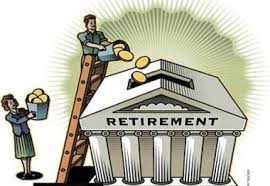
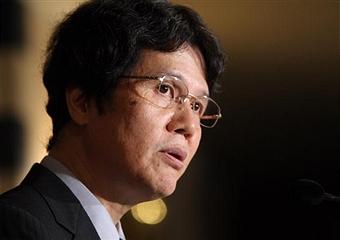


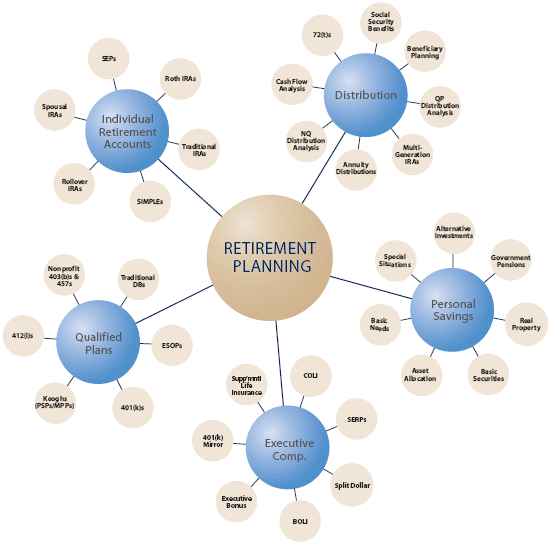

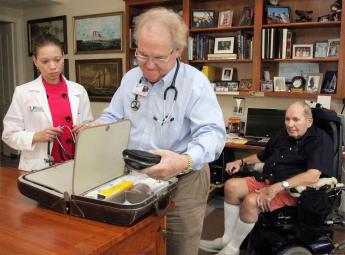

.jpg)

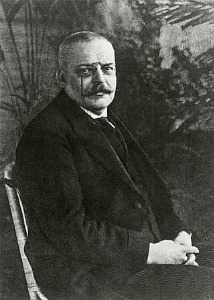









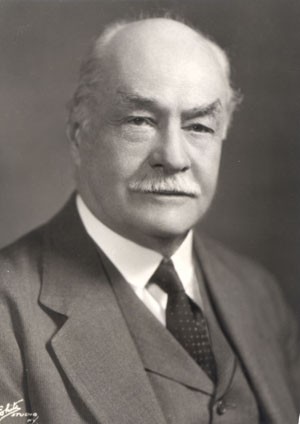





.JPG)



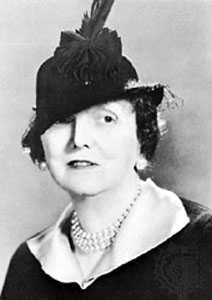







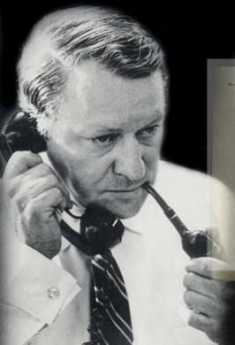
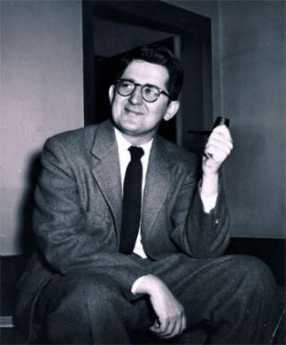
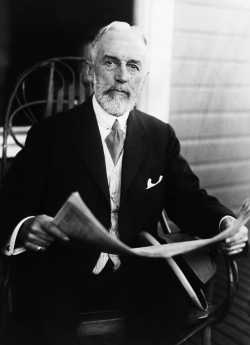






















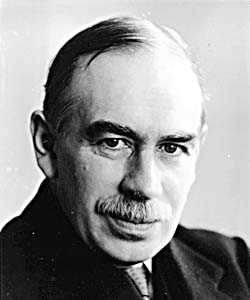




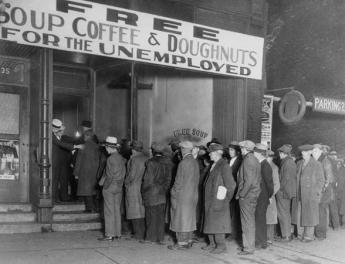
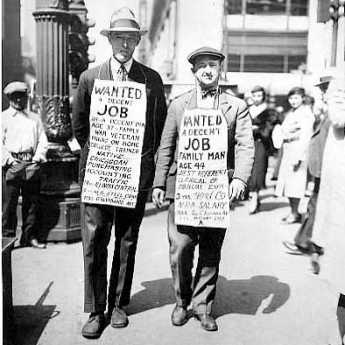







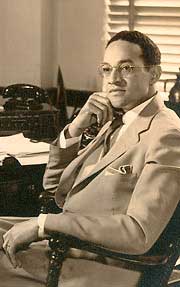





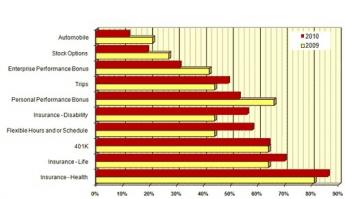






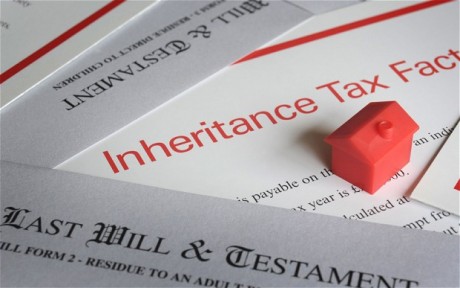




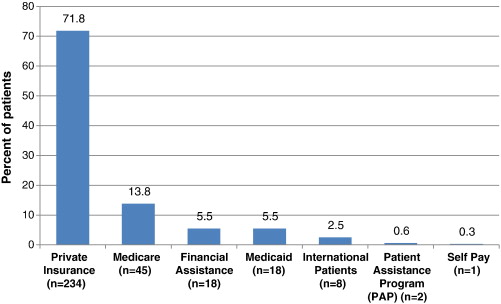
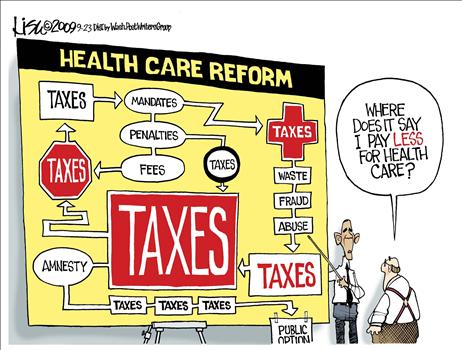








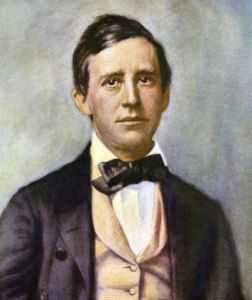



 The authors of the Bible believed human life was designed to end at age 70. The revised scientific guess is 100.
The authors of the Bible believed human life was designed to end at age 70. The revised scientific guess is 100.
 Retirement communities are fairly new ideas, still experimenting with the ideal model, so it is hard to generalize about them. But they look to be a possibility for everybody's future.
Retirement communities are fairly new ideas, still experimenting with the ideal model, so it is hard to generalize about them. But they look to be a possibility for everybody's future.
 Retirement communities of the continuing-care variety, are a comparatively new and apparently splendid development. The present economic crisis is their first major test.
Retirement communities of the continuing-care variety, are a comparatively new and apparently splendid development. The present economic crisis is their first major test.
 Hospitals probably shift costs ten or more ways; here are three ways. Picture yourself as a Congressman trying to modify this mess, and then you try to do it in a couple of weeks. Probably Galen, not Hippocrates, first said Primum non-nocere -- don't make things worse.
Hospitals probably shift costs ten or more ways; here are three ways. Picture yourself as a Congressman trying to modify this mess, and then you try to do it in a couple of weeks. Probably Galen, not Hippocrates, first said Primum non-nocere -- don't make things worse.
 Gardening is making a comeback. Retirees are right in there.
Gardening is making a comeback. Retirees are right in there.
 Unless someone develops a very good idea soon, newspapers as we know them will disappear. What will take their place? C-Span? The Economist?
Unless someone develops a very good idea soon, newspapers as we know them will disappear. What will take their place? C-Span? The Economist?
 The modern miracle of cataract surgery began when a Messerschmidt fired a machine gun into a Spitfire, during the Battle of Britain.
The modern miracle of cataract surgery began when a Messerschmidt fired a machine gun into a Spitfire, during the Battle of Britain.
 No one seems to be considering the opinion of older citizens about preventive health care.
No one seems to be considering the opinion of older citizens about preventive health care.
 Physical fitness training is catching on with senior citizens, matching the evolution from adolescent "bodybuilding" into stretching and rebalancing the shoulder and pelvis platforms that give most people, most of their physical limitations.
Physical fitness training is catching on with senior citizens, matching the evolution from adolescent "bodybuilding" into stretching and rebalancing the shoulder and pelvis platforms that give most people, most of their physical limitations.
 Between 6 and 10% of the population describes itself as suffering from chronic insomnia.
Between 6 and 10% of the population describes itself as suffering from chronic insomnia.
 More often than not, children spend money foolishly; so our laws restrain them. However, the same laws also hamper the legitimate accumulation of savings for their education.
More often than not, children spend money foolishly; so our laws restrain them. However, the same laws also hamper the legitimate accumulation of savings for their education.
 Eventually, everyone can hope to be a member of the rentier class. Ideally, they will have first spent equal time as workers.
Eventually, everyone can hope to be a member of the rentier class. Ideally, they will have first spent equal time as workers.
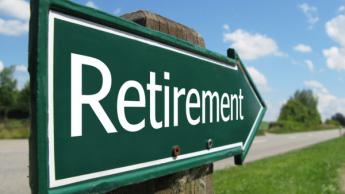 Most Americans alive in 2020 will live to be ninety before they die. Forget about lock boxes and other schemes to pay for a thirty-year vacation. These people will have to keep working at least until age 70.
Most Americans alive in 2020 will live to be ninety before they die. Forget about lock boxes and other schemes to pay for a thirty-year vacation. These people will have to keep working at least until age 70.
 New Jersey may be about to demonstrate that taxpayers should be on the lookout for too many government employees, not too much government spending.
New Jersey may be about to demonstrate that taxpayers should be on the lookout for too many government employees, not too much government spending.
 Pharmaceutical drugs seem to follow a trajectory of fifty years, from new and expensive, to cheap, old and eliminated.
Pharmaceutical drugs seem to follow a trajectory of fifty years, from new and expensive, to cheap, old and eliminated.